Attractions
- UNESCO World Heritage Sites
- Protected Areas
- Eight Thousanders
- Pilgrimage Sites
- Bungee Jumping
- Motor Biking
- Rafting & Kayaking
- Mountain Biking
- Paragliding
- Cave Exploration
- Hot Air Balloon

Bird Watching
Mountain viewing.
- Jungle Discovery
- Butterfly Watching
- Nagarkot Sunrise and Sunset
- Traditional Crafts
- Meet the People
- Village Tours
- Food & Culinary
- Cultural Tours
- Heritage Walk
- Museum Tours
- Faith Healing
- Panchakarma Treatment
- Sound Meditation
- Natural Hot Water Springs in Nepal
- Pilgrimage Tours
- Destination Wedding
- Indra Jatra
- Chhat Parva
- Event Calendar
- Festival Highlights
- Travel with children
- Ganesh Himal Trek
- Chandragiri - Chitlang - Kulekhani
- Pilgrimage to Doleshwar mahadev Temple
About Nepal
Travel details.
- Tourist Visa
- Local Transportation
- Trekking Permit
- Park Entry Fees
- Heritage Site Entry Fees
- Tourist Police
- Safety in the Mountains
Book Your Trip
- Book Experience
- Travel Updates
Mt. Everest (8,848 m)
Climb everest if you want to stand on top of the world, or do the extremely popular everest base camp trek to enter a strange world of ice and snow..
Reach the highest point on earth or choose to live out your dream by standing at the foot of Mt. Everest (8,848 m).
The Everest region in Nepal is more than just climbing and trekking, it is a life-changing experience and some see it as a journey close to achieving Nirvana. Located in the northeastern province of Nepal, this region is in a world of its own with vast glaciers, icefalls, the highest mountains, deep valleys, precarious settlements, and hardy people challenging the harshest conditions thrown at them by nature in the thin air of high altitude.
Passing through legendary Sherpa villages, the trek is a mix of deep cultural and spiritual experiences and physical challenges that test your strength and endurance. Buddhist lamas, monks and nuns led by Rinpoches (reincarnate at mas) serve the predominantly Sherpa communities from their gompas ( monasteries ).
The journey to Everest or Everest Base Camp begins with a dramatic flight from Kathmandu to Lukla, after which you hike up the Everest region to reach your destination in the Himalayas. However, for die-hard lovers of trekking, there is another switchback starting from Jiri through the mid-hills of Solu, an ethnically diverse section of the trek rich
For those with sufficient time, a 10-12 day trek through Solu to the Khumbu and the Sagarmatha National Park is an excellent itinerary both in terms of acclimatization and to observe the changing customs, traditions, and lifestyles as you go from the lower altitude settlements to those in the higher altitudes.
A part of the Himalayan ecological zone, the park was added to the list of UNESCO Natural World Heritage Sites in 1979. The park has three of the world's highest mountains: Everest, Lhotse, and Cho Oyu besides countless other peaks that rise above 6,000 meters from sea level.
Taking a flight is a time-saver, while trekking from Jiri gives you the opportunity to follow in the footsteps of Tenzing and Hillary before their conquest of Everest. With more time to interact with the charming people along the route, you get to see the rich flora and fauna on the long trail. You get the added benefit of natural acclimatization as you go up and down the cliffs and valleys.
The option from Jiri will roughly add 10 days to your trip to the famous Sherpa village, Namche Bazaar (3,500m). The Sagarmatha National Park in which Mt. Everest lies is one of the few places on earth with the rarest bio-diversity and the highest mountains in the world.
Places to see in Everest Region
Namche bazaar, gokyo valley, khunde & khumjung, everest base camp, sagarmatha national park, to do in the everest region, mountaineering, meet the people.

Nepal Tourism Board is a national tourism organization of Nepal established in 1998 by an Act of Parliament in the form of partnership between the Government of Nepal and private sector tourism industry to develop and market Nepal as an attractive tourist destination. The Board provides platform for vision-drawn leadership for Nepal’s tourism sector by integrating Government commitment with the dynamism of private sector.
Nepal Tourism Board
Other sites.
- Tenders & Trade
- Photo Nepal
Feedback Form

Death on Everest: the boom in climbing tourism is dangerous and unsustainable
Lecturer Work, Emplyoment and Organisation, University of Strathclyde
Disclosure statement
Yana Wengel does not work for, consult, own shares in or receive funding from any company or organisation that would benefit from this article, and has disclosed no relevant affiliations beyond their academic appointment.
University of Strathclyde provides funding as a member of The Conversation UK.
View all partners
The last days of Mt Everest’s spring window for 2019 witnessed the deaths of 11 climbers . Images of hundreds of mountaineers queuing to reach the summit and reports of climbers stepping over dead bodies dismayed people around the world, many wondering how human beings had got it so wrong.
After the conquest of Annapurna and Everest in the 1950s, mountaineering became popular among the more privileged. But in the past two decades, mountaineering has taken on a increasingly commercial angle with disastrous results .
Experts report that aside from a very short weather window to climb Everest this season, a new generation of guides offering cheap expedition rates attracted a rash of novice mountaineers , which contributed to the high number of deaths. Those inexperienced climbers, some of whom had only climbed Mont Blanc (4,810m) and Aconagua (6,962m), should not have been there.
Modern climbing
Until the beginning of the 21st century, mountaineering was an exclusive activity accessible only to a few. Twenty years later, despite being a high-risk activity that requires a high level of specialised skill, its popularity among recreational climbers has drastically increased . Climbing legend Reinhold Messner once said that for a fee, “almost anyone could brave a top-class peak” – meaning regardless of skill, ability or experience.
Many modern mountaineers are attracted by the Seven Summits Challenge , introduced by Messner in the 1980s, with the aim of climbing the highest peak on every continent. Cashed-up adventure tourists lured by the challenge face expensive mountain expedition packages – from £3,000 for Aconcagua and £30,000 for Everest.
Aconcagua in the Argentinian Andes is the second highest of the Seven Summits after Everest, and one of the cheapest to climb. The number of climbers attempting Aconcagua has increased by 400% since 1990 – 4,000 people a year now push for the summit.

Our current research project focusing on mountaineering tourism shows that this recent trend can be explained by the transformation of mountaineering from personal exploring to a commercial guided-tour industry which is capitalising on better accessibility to big mountains, affordable transportation and more advanced equipment. This boom in commercial adventure sports means “real” mountaineers are often outnumbered by tourists whose ambitions exceed their climbing skills.
Although technically Aconcagua is not considered a difficult climb, it reaches a high altitude , where climbers struggle with low humidity, low oxygen and severe winds, so the summit success rate is 30-40%.
In February 2019, we spent three weeks at Aconagua’s base camp, where rangers told us that the popularity of the mountain has triggered an increase in accidents and fatalities. But reinforcement of safety measures implemented over the past five years have minimised casualties, averaging two to five deaths a season – with no deaths in 2019 so far.
Such measures include climber check-in and medical checks at ranger stations, and the availability of doctors and rescue teams up to 5,500m. Our interviews with rangers, guides and porters reveal that accidents are associated with an high number of inexperienced climbers who often carry insufficient equipment and underestimate the difficulty and risks of a high-altitude mountain environment. The question is, should everyone be allowed to climb any mountain they decide to?

Many recreational mountaineers opt for package expeditions, relying solely on the experience of service companies and the help of porters and guides. Without this professional support, they would fail. The paradox of modern mountaineering is that the provision of necessary expedition support and all-inclusive packages also encourages inexperienced climbers who wish to reach the desired summit at any cost, putting others at risk.
Of course even the most skilled mountaineers need logistics and local support on the world’s highest peaks. But experienced climbers possess the knowledge, skill and strength to reach the summit – and often rely on themselves as far as possible. But their achievements, together with the “all-inclusive” adventure tourism industry, lull inexperienced climbers into a false sense of security about what they are capable of.
Experience and permits
Each country manages climbing permits in different ways – and only a handful of authorities check mountaineering experience seriously. To climb Alaska’s Mt Denali (6,190m), the highest peak in North America, climbers are required to have advanced mountaineering skills along with backcountry winter camping experience .
Only seven mountain guide companies are authorised to lead expeditions on Denali and solo climbers need to prove their mountaineering experience to obtain a climbing permit. This strict control minimises the risks to climbers and the impact on the environment, allowing sustainable management of expeditions without casualities – which was achieved in 2018.
Other countries have much looser requirements . The New York Times reported that to get a climbing permit for Everest all a climber has to do is submit a copy of their passport, limited biographical data and a certificate of good health.

Climbing a mountain is mentally and physically demanding. Climbers need to have good ethics – such as taking responsibility for their actions, respecting local climbing traditions, taking care with the environment and so on – proper equipment and real mountaineering experience. In our view high-altitude climbers should be required to demonstrate a standard of experience to obtain a permit. But mountaineering is a lucrative industry and brings huge amounts of money to often impoverished local economies. Over the years, overcrowding and safety issues have become a serious problem .
Mountain tourists lack the experience and the requisite attributes to summit difficult peaks. This foolhardy arrogance can lead to tragedy, as we saw on Everest this year. The global mountaineering community needs to call for specific conditions of ability and experience be met when issuing permits for high-altitude mountain expeditions. It has to be about more than simply being able to afford to take on the world’s most difficult peaks.
But how do we achieve that? Who is responsible for managing modern mountaineering in a safe, responsible and sustainable way? If we don’t address these issues, avoidable tragedies caused by commercialised mountaineering will continue to appal the world.
- Mountaineering
- Global perspectives
- Adventure tourism
- Mountaineering deaths

Senior Research Fellow - Curtin Institute for Energy Transition (CIET)

Research Grants Officer

Laboratory Head - RNA Biology

Head of School, School of Arts & Social Sciences, Monash University Malaysia

Chief Operating Officer (COO)
- Everest Base Camp Billboard Removed After Trekker Backlash
- Purnima Shrestha Makes History: First Woman to Summit Everest Three Times in One Season
- Kami Rita Sherpa’s Historic 30th Ascent of Mount Everest
- Phunjo Becomes the Fastest Woman to Climb Mount Everest
- Everest 2024: First Summits Confirmed! Get Your Climbing Updates Here
- Kami Rita Sherpa’s Record-Breaking 29th Everest Summit
- 2023 Everest Death Toll Confirmed as Worst in History
- 1924 Everest Mystery Heats Up: Did the Chinese Find Irvine’s Body?
- New signboard at Everest Base Camp
- Remembering Those Lost: The 1996 Mount Everest Disaster
- Green Boots: Landmark of Everest
- Everest Permits Soar to $15,000 Starting 2025
- Nepal Entry Protocol June 7, 2023: for International Visitors
- Paragliding in Chitwan!
- Snowstorm on Mount Everest: 3 Sherpa climbers die
- Trek In Nepal Without A Guide: Foreign Tourists Are Prohibited
- Nepal Entry Protocol 2023
- COVID-19 Update (2022)
- COVID 19 Safety Protocols for Travelers in Nepal
- How to get VISA in Nepal post COVID?
- COVID-19 Update: International Flights Resumed 2021
- COVID-19 Update: Nepal Travel Restrictions

Nepal Travel Vibes
Be The Adventure

10 Must-Try Activities in Mount Everest

Welcome to the majestic Everest region, a realm of towering peaks, breathtaking landscapes, and rich cultural heritage. Whether you seek adrenaline-pumping adventures or immersive cultural experiences, Everest offers something for every adventurer. This guide explores 10 must-try activities that will leave you breathless and yearning for more.
Table of Contents
Unforgettable Experiences in Everest
- Trek to the Roof of the World: Embark on the iconic Everest Base Camp Trek , offering stunning vistas and unparalleled access to the world’s highest mountain. For breathtaking lake views, consider the Gokyo Lakes Trek or traverse challenging high passes on the Three Passes Trek .
- Bike Through Rugged Terrain: Thrill-seekers will find an exhilarating challenge in mountain biking. Explore diverse trails, from the Jiri to Everest Base Camp route to the Upper Mustang Circuit, while soaking in the grandeur of the Himalayas.
- Conquering the Peaks: For experienced mountaineers, Everest offers legendary challenges like Lhotse and Cho Oyu. Remember, proper training and safety precautions are crucial for these demanding climbs.
- Immerse Yourself in Nature: Camp under the starry sky, surrounded by snow-capped peaks. Camping offers a unique chance to connect with nature and appreciate the serenity of the Everest region.
- Find Inner Peace: Embrace the tranquility of yoga and meditation amidst the majestic Himalayas. The stunning scenery and serene atmosphere create a perfect setting for spiritual rejuvenation.
- Experience the Thrill of Skiing: Ski enthusiasts can find challenging slopes during the winter season. Cross-country skiing requires expertise and safety due to the terrain, but the rewards are unmatched.
- Explore on Four Hooves: Discover the region through a traditional yak safari. These gentle giants offer a unique way to travel and connect with the local culture.
- Delve into Local Culture: Immerse yourself in the rich tapestry of Sherpa traditions. Visit monasteries like Tengboche, witness vibrant festivals like Mani Rimdu, and savor local delicacies like momos and thukpa.
- Raft the Wild Waters: Unleash your inner adventurer with exhilarating river rafting on the Dudh Koshi River. Navigate through rapids, immerse yourself in stunning scenery, and experience the thrill of nature’s power.
- Spot Wildlife in its Natural Habitat: Keep your eyes peeled for rare and endangered species in Sagarmatha National Park. Snow leopards, red pandas, and Himalayan black bears are just a few of the fascinating creatures you might encounter.
- Capture the Majesty: Photograph the breathtaking landscapes, vibrant cultures, and unique wildlife. From snow-capped peaks to hidden valleys, Everest is a photographer’s paradise.
- Soar Above the Summit: Take a helicopter tour for a bird’s-eye view of Everest Base Camp, Gokyo Lakes, and Kalapatthar. Witness the vastness of the Himalayas and capture stunning aerial photographs.
- Gaze at the Starry Night: Escape light pollution and marvel at the dazzling night sky. Camping or staying at lodges provides the perfect opportunity to stargaze and appreciate the vastness of the universe.
- Take a Gondola Ride: Experience the breathtaking scenery from a unique perspective on the Gulag Gondola, the second-highest cable car in Asia. Soar above 10,000 feet and capture unforgettable panoramic views.
Bonus Activities:
- Explore Namche Bazaar: This bustling town offers a glimpse into local life and provides essential supplies for your treks.
- Trek to Khumbu Glacier: Witness the source of the iconic Khumbu Icefall and experience the awe-inspiring power of glacial landscapes.
- Take a Scenic Flight: Soar above the majestic peaks and capture breathtaking aerial views of the Everest region without strenuous activity.
- Visit the Tengboche Monastery: Find peace and tranquility in this serene monastery, offering stunning views and a chance to experience Sherpa culture.
- Enjoy a Yak Ride: Embrace a unique and traditional way to explore the region and connect with the local way of life.
Conclusion:
Everest beckons with its diverse experiences, from challenging adventures to cultural immersion and breathtaking beauty. Choose your activities, create unforgettable memories, and conquer your own Everest!
Discover more from Nepal Travel Vibes
Subscribe to get the latest posts to your email.
Type your email…
An adventurer, writer, and Founder of Nepal Travel Vibes.
Similar Posts

Soaring Above the Clouds: A Pokhara Hot Air Balloon Adventure

Mount Everest Helicopter Tour: Soar over the Majestic Himalayas

5 Best Hiking Trails near Kathmandu Valley
Latest posts from nepal travel vibes.

Elevate Your Travel Videos: Techniques for Social Media Perfection

The Best Time to Trek to Sandakphu: Seasonal Tips and Advice

Experience the Highest: A Look at the Everest Marathon
Leave a reply cancel reply.
Your email address will not be published. Required fields are marked *
Save my name, email, and website in this browser for the next time I comment.
Notify me of follow-up comments by email.
Notify me of new posts by email.
AD Blocker Detected
Ads can be a pain, but they are our only way to maintain the server. Please deactive Ads blocker to read the content. Your co-operation is highly appreciated and we hope our service can be worth it.
Subscribe now to keep reading and get access to the full archive.
Continue reading
Press Release
Climate change and human impacts are altering mt. everest faster and more significantly than previously known.

National Geographic Rolex Logo Lockup
Photograph by National Geographic Rolex Logo Lockup
November 20, 2020 Washington, D.C . -- Today, new findings from the most comprehensive scientific expedition to Mt. Everest in history have been released in the interdisciplinary scientific journal One Earth . Featuring a collection of research papers and commentaries on Mt. Everest, known locally as Sagarmatha and Chomolangma, the research identifies critical information about the Earth’s highest-mountain glaciers and the impacts they are experiencing due to climate change. As part of the 2019 National Geographic and Rolex Perpetual Planet Everest Expedition, climate scientists studied the environmental changes including Everest’s “death zone” to understand future impacts for life on Earth as global temperatures rise.
This new research fills a critical knowledge gap on the health and status of high-mountain environments, which are incredibly difficult to study due to the inhospitable environmental conditions. Key findings include:
- The highest-ever recorded sample of microplastics was found on the “Balcony” of Mt. Everest at 8,440 m, one of the last resting spots before reaching the summit. This microplastic is likely coming from the clothing and equipment worn by climbers, highlighting the impacts of humans on even the highest reaches of our planet.
- Researchers surveyed nearly 80 glaciers around Mt. Everest and found evidence of consistent glacial mass loss over the last 60 years and that glaciers are thinning, even at extreme altitudes above 6,000 m. Using declassified spy satellites and a new highest-resolution data set, this is the most complete assessment of the status of the world’s highest glacier as a baseline for future research on its changes.
- Additionally, the research captures the first documented surge of a glacier (when it moves 10 to 100 times faster than it normally does) in the Mt. Everest region, a phenomenon that can put people and communities at risk.
Glaciers like those on Everest provide ⅕ of the global population with a steady supply of fresh water around the world. But due to the extreme conditions of these high mountains, little information up until now has existed about the impacts of climate change at elevations above 5,000m.
“Mountains and their rapidly-disappearing glaciers are the “water towers” of our planet, storing and transporting freshwater to nearly two billion people around the world. That water supply is increasingly under threat due to rising temperatures, melting glaciers, pollution, and other human-caused and environmental stressors,” said Paul Mayewski, Scientific and Expedition Lead, and Director, Climate Change Institute University of Maine, and lead author of the preview “Pushing Climate Change Science to the Roof of the World” published in One Earth.
Microplastic pollution at the highest point on Earth is a direct result of increased tourism and waste accumulation. A large proportion of that waste is made out of non-biodegradable plastic. While visible plastic has been reported on Mt. Everest previously, the pristine environment at Earth’s highest peaks is changing. The new data highlights that the collected snow samples had significantly more microplastics compared to the stream samples, with the majority of microplastics being fibrous.
“With increased tourism, microplastics throughout Mt. Everest is expected to rise, creating issues for the environment and people of the Khumbu region,” said Imogen Napper, National Geographic Explorer and first author of “Reaching New Heights in Plastic Pollution — Preliminary Findings of Microplastics on Mount Everest."
Results from the highest weather stations in the world demonstrate that the majority of precipitation to the Mt. Everest region is sourced in the Bay of Bengal, highlighting the importance of atmospheric circulation to high mountain glaciers. Further, the weather stations enabled a full reconstruction of climber’s oxygen availability during past Everest summit attempts to generate a comparison of climbing difficulty.
From April to May 2019, an international, multidisciplinary team of scientists conducted the most comprehensive single scientific expedition to Mt. Everest in the Khumbu Region of Nepal as part of the National Geographic and Rolex partnership. Team members from eight countries, including 17 Nepali researchers conducted trailblazing research in five areas of science that are critical to understanding environmental changes and their impacts: biology, glaciology, meteorology, geology and mapping.
Scientists are now utilizing the samples and data they collected during the Expedition to gain unique insights into how climate change and human populations are affecting even the highest reaches of our planet. Even the highest glaciers on Earth are reeling from human activity around the globe.
“Mountains will outlast us,” the One Earth editorial team wrote in its “The Changing Face of Mountains” editorial. “But without immediate action and integrated approaches to adaptation and sustainable development, they will lose their majesty. They will become diminished. With consequences for us all.”
Papers from the National Geographic collaboration include:
- King et al.: “Six decades of glacier mass changes around Mt. Everest revealed by historical and contemporary images,” an Article publishing in One Earth (ONEEAR266)
- Napper et al.: “Reaching new heights in plastic pollution – preliminary findings of microplastics on Mount Everest,” an Article publishing in One Earth (ONEEAR267)
- Perry et al.: “Precipitation Characteristics and Moisture Source Regions on Mt. Everest in the Khumbu, Nepal,” an Article publishing in One Earth (ONEEAR258)
- Matthews et al.: “Into Thick(er) Air? Oxygen Availability at Humans’ Physiological Frontier on Mount Everest,” an Article publishing in iScience (ISCI101718)
- Elvin et al.: “Behind the scenes of a comprehensive scientific expedition to Mt. Everest,” a Backstory publishing in One Earth (ONEEAR253)
- Mayewski et al.: “Climate Change in the Hindu Kush Himalayas: Basis and Gaps,” a Reflection publishing in One Earth (ONEEAR254)
- Miner et al.: “An overview of physical risks in the Mt. Everest region,” a Primer publishing in One Earth (ONEEAR255)
- “Voices from the roof of the world,” a collection of 6 Voices publishing in One Earth (ONEEAR252)
- Mayewski et al.: “Pushing Climate Change Science to the Roof of the World,” a Preview publishing in One Earth (ONEEAR268)
- Elmore et al.: “Understanding the World’s Water Towers through High-Mountain Expeditions and Scientific Discovery,” a Preview publishing in One Earth (ONEEAR264)
- “Everest Night Lights,” a Visual Earth publishing in One Earth (ONEEAR265)
- “Birth of Sagarmatha,” a Visual Earth publishing in One Earth (ONEEAR269)
This work was supported by the National Geographic Society and Rolex. To learn more about the Everest Expedition, please visit: https://www.nationalgeographic.org/projects/perpetual-planet/everest/ and tune into our YouTube page to get a closer look at the 2019 National Geographic and Rolex Perpetual Planet Everest Expedition
Related Files:
PDFs of all papers
Selection of images available for media use
To embed videos related to the National Geographic and Rolex Perpetual Planet Everest Expedition, please visit:
- Everest Expedition
- Meteorology
- 360: The Science
- 360: The Mission
Media Contact
The National Geographic Society is a global nonprofit organization that uses the power of science, exploration, education and storytelling to illuminate and protect the wonder of our world. Since 1888, National Geographic has pushed the boundaries of exploration, investing in bold people and transformative ideas, providing more than 15,000 grants for work across all seven continents, reaching 3 million students each year through education offerings, and engaging audiences around the globe through signature experiences, stories and content.
To learn more, visit www.nationalgeographic.org or follow us on Instagram , LinkedIn, and Facebook .
Deals of the Week Mediterranean Magic Up to 50% OFF
Everest Tours & Trips
- Mount Everest Small Group
- Gokyo Valley Trek Small Group
- Mount Everest Adventure Budget
- Mount Everest Adventure Luxury
250+ Mount Everest tours with 3,320 reviews

Hiking & Trekking Active Family Christmas & New Year +2
Everest Base Camp Luxury Lodge Trek
"The lodges were truly luxurious, with spacious and comfortable rooms that provided a much-needed respite after a long day of trekking." Charlie, traveled in April 2023

Everest Base Camp Trek and Fly back by Helicopter
"The helicopter ride provided stunning views of the Himalayas, and the trek itself was challenging but rewarding." Sidney, traveled in March 2023
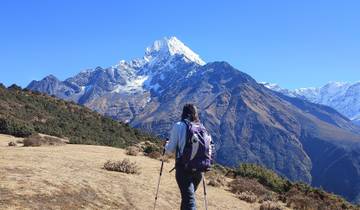
Hiking & Trekking Active Mountain Hikes Explorer Christmas & New Year +3
Everest Base Camp Trek
"Fantastic Tour! Prakash (Guide) and Neema were great and experience was awesome." Todd, traveled in March 2023

Hiking & Trekking Active Family Mountain Hikes Explorer Christmas & New Year +4
Everest Base Camp Trekking
"We felt safe and well-guided throughout the entire journey. Highly recommended!" Joyce, traveled in October 2023

Hiking & Trekking Active Family Mountain Hikes Christmas & New Year +3
Everest Base Camp Luxury Heli Trek
"I was picked up at the airport on time and was taken to a lovely hotel. They did everything to help me book new tours." Nancy, traveled in October 2022

Hiking & Trekking Family Mountain Hikes Explorer Christmas & New Year +3
Everest Base Camp Trek 12 Days
"I had an amazing, memorable, and fantastic experience! The trek and experience to Everest Base Camp is just once in a lifetime!" Hobson, traveled in October 2023

"We had a wonderful trip with this best team. we would highly recommended this company to anyone for trekking and tour in Nepal." John, traveled in May 2024
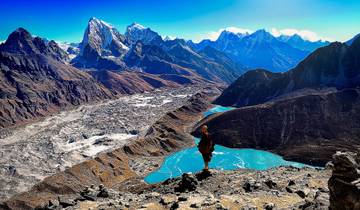
"G adventures is dialled when it comes to the EBC trek." Karen, traveled in November 2023
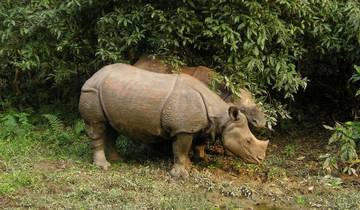
Wildlife Christmas & New Year
Classic Nepal Tour
"All accommodations were very good. We enjoyed meeting so many beautiful Nepali people!" Chris, traveled in April 2023
- 10% deposit on some dates
- Book With Flexibility View tour Download Brochure
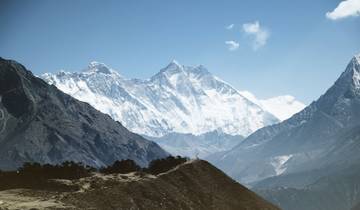
Active Christmas & New Year +1
Everest Base Camp (13 Nights 14 Days) Trek
"My dream come true...We really had a great time at Everest region. Highly recommendable..!!!" Pankaj, traveled in April 2022
Mount Everest Tours & Trips Reviews
This Everest Base Camp trek wasn't just a hike, it was an unforgettable experience. Peregrine Treks turned the challenge into pure luxury. Imagine this: every twist in the trail unveiled a jaw-dropping Himalayan panorama. You'd be gazing at the mighty Everest towering above, then your eyes would sweep down to the glistening glaciers nestled below. Dawa Sherpa, our guide, wasn't just there to lead the way. He was an expert who brought the region alive. His knowledge of the Himalayas flowed with infectious enthusiasm, making every step an immersive journey. Peregrine Treks' owner, Pradip, took care of everything else. From the moment we landed in Kathmandu, we were met with top-notch hotels. Even the teahouse lodges along the trek offered surprising comfort, making this a truly luxurious way to experience Everest Base Camp.
My experience with Peregrine Treks on the Everest Base Camp Trek, culminating in a helicopter return, was nothing short of spectacular. From the beginning, their team provided excellent support, ensuring a safe and enjoyable journey. The trek itself offered breathtaking views and challenging hikes that were rewarding in every sense. The highlight, without a doubt, was the helicopter ride back, providing us with awe-inspiring aerial views of the Everest region that left us speechless. The accommodations and meals along the trek were well beyond expectations, contributing to an overall exceptional experience. Peregrine Treks' attention to detail, expert guides, and commitment to safety were commendable. Highly recommended for anyone looking to start this once-in-a-lifetime adventure.
I couldn’t recommend Nepal Hiking team more highly. I was a solo female traveller, and it could not have been a better trip. From the initial booking process the team have been exceptional in their communication and this continued throughout the entire trek. Once arriving in Kathmandu, you are welcomed by a friendly team and the WoodApple hotel was a fantastic place to find your feet in a good location in Kathmandu that’s not too far away from Thamal to ensure you can buy any last minute gear you may need, the food in the rooftop restaurant was excellent and the views of Kathmandu are fantastic. Our Guides Dhurba and Indra were amazing and really helped to ensure this was a trip of a lifetime. The knowledge they have about the Himalayas ensured no question went unanswered and they set a perfect pace for the group to make sure we all reached base camp but also really enjoyed the entire experience with plenty of laughs along the way. If you are considering doing the EBC… do it! And if your considering which company to go with …. Book with ‘Nepal Hiking Team’.
Top operators

"This Everest Base Camp trek wasn't just a hike, it was an unforgettable experience. Peregrine Treks turned the challenge into pure luxury. Imagine this: every twist in the trail unveiled a jaw-dropping Himalayan panorama. You'd be gazing at the mighty Everest towering above, then your eyes would sweep down to the glistening glaciers nestled below. Dawa Sherpa, our guide, wasn't just there to lead the way. He was an expert who brought the region alive. His knowledge of the Himalayas flowed with infectious enthusiasm, making every step an immersive journey. Peregrine Treks' owner, Pradip, took care of everything else. From the moment we landed in Kathmandu, we were met with top-notch hotels. Even the teahouse lodges along the trek offered surprising comfort, making this a truly luxurious way to experience Everest Base Camp.
Peregrine Treks and Expedition Pvt Ltd is an expert in:
- Hiking & Trekking

"Very patient guide, Bishnu Bhatta, and a helpful porter, Arus. They made my trek possible. The trek affords beautiful views of the mountains. Nepal Social Trek is always very responsive and very helpful and friendly. I highly recommend them.
Nepal Social Treks is an expert in:
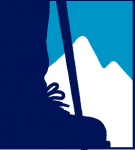
"This rating has been a matter of some internal discussion… On one side, the trip worked well most of the time, and our guide Ganga was kind and professional. However, there were a couple of points that made our trip not as good as it should have been: -The assistant guide was a bit of a pain most of the time. He did not speak English, so the communication was non-existent. He seemed to think his role was to stop us when we were walking faster than his perceived opinion. He was like a moving hurdle in front of us most of the time. Local customs like non-stop spitting (each with a thorough and loud throat-clearing) did not help to the experience. -Secondly, on the way back, there was a problem with the flights back from Lukla to Kathmandu. Bad weather meant delays and one day waiting in Lukla. We were told that it would be impossible to get on a plane the following day, because of the backlog, and had to pay 450$ extra each to come back by helicopter. However, some other groups didn’t have any problem with the planes and the flights back. Maybe there wasn’t enough space for all stranded people, but we didn’t receive good communication
Nepal Hiking Team is an expert in:
Mount Everest Destinations:
- Gokyo Valley Trek (26)
Mount Everest Tours starting in:
- Kathmandu (608)
- Group (675)
- Hiking & Trekking (645)
- Personalized (520)
- Fully Guided (476)
- Family (393)
- Active (338)
- Partially Guided (285)
- Custom (166)
- Private (85)
- Explorer (59)
- In-depth Cultural (20)
- Intl. Flights Included (5)
- Small Group (469)
- 7 Day Tours (45)
- 10 Day Tours (70)
- 2 Week Tours (260)
- 3 Week Tours (249)
- 4 Week Tours (15)
- Summer 2024 (549)
- Fall / Autumn 2024 (617)
- Winter 2024 / 2025 (554)
- Spring 2025 (467)
- Summer 2025 (371)
- Fall / Autumn 2025 (405)
- Winter 2025 / 2026 (365)
- Spring 2026 (238)
- June 2024 (530)
- July 2024 (496)
- August 2024 (511)
- September 2024 (607)
- October 2024 (610)
- November 2024 (599)
- December 2024 (549)
- January 2025 (449)
- February 2025 (423)
- March 2025 (464)
- April 2025 (457)
- May 2025 (441)
Other Regions in Nepal
- Mount Annapurna (1056)
- Mount Kala Patthar (650)
- Gorakshep Trail (409)
- Langtang National Park (146)
- Chitwan National Park (69)
- Upper Mustang (41)
- Mount Manaslu (7)
- Bardia National Park (6)
- Everest Base Camp
Travel Styles
- Budget (137)
- Luxury (60)
- Singles and Solo (432)
- For Couples (129)
- Seniors (194)
Discover TourRadar
- Safari Holidays
- Iceland Tours
- Danube Dreams for Wine Lovers with 2 Nights in Prague (Eastbound) 2025
- Istanbul&Cappadocia-4 Days
- Amazing Vietnam Experience : PrivateTour
- Essential Thailand (12 Days)
- Best 10 Day Philippines Itineraries (With Reviews)
clock This article was published more than 5 years ago
How Mount Everest became a tourist destination

“The plain truth,” author Jon Krakauer wrote , “is that I knew better but went to Everest anyway.”
It was 1996. Krakauer, a correspondent for Outside magazine, was to hike to Mount Everest’s base camp and write a story for the publication. Instead, he met the guides who helped pioneer the commercial climbing business on the world’s highest peak and convinced the magazine to let him climb to the top. His editors obliged.
By the end of his trip, eight climbers had died during a storm. At the time, it was the deadliest attempted ascent on the mountain. Eleven people have died on Everest this year, in large part because of the vast contingent of unqualified and unguided alpinists who now flock to the mountain during climbing season, the very phenomenon Krakauer went to document.
Three years before his trip, life on Everest changed, but to understand that, you have to understand the mountain’s history.
A Mount Everest climb often takes two months. A California climber just did it in two weeks.
British climbers made early attempts to reach the peak on the northern side of the summit in Tibet in the early 20th century. George Mallory and Andrew Irvine were spotted within hundreds of feet of the top in 1924, but the two never returned to camp to relay whether they had made it. Mallory’s body was found in 1999. Irvine’s remains missing.
Sir Edmund Hillary and Sherpa guide Tenzing Norgay made the first official ascent in 1953 on the mountain’s southern side, in Nepal. The first Americans summited in 1963. The group included Barry Bishop, who wrote about and photographed the trip for National Geographic.
But amid the Cold War, access to the mountain was severely restricted. China closed the Tibetan portion of Everest from 1950 to 1980. Nepal for years did not allow foreigners into the country to climb Everest unless they were accompanied by scientists, and when it finally opened its border in 1985 , it issued one Everest permit per season per route.
By the 1990s, international tensions had eased and more qualified alpinists began showing up at the mountain, hoping to gain access to climb.
“Everest, you could always get a permit, but you had to be sponsored by your country’s climbing agency,” Todd Burleson, founder and president of guide service Alpine Ascents International, said in a phone interview. He has led two guided journeys to Everest’s summit, and he said aspiring climbers used to wait several years until their turn for a permit arrived.
“Up until about 1990, you’d take a group of the best climbers from your country to Everest, and if one of those climbers got to the top, you were a national success,” he said. “But during the ’90s we learned a lot, and there were a lot of people who couldn’t get on those groups who were very skilled. And then we started bringing them to the mountain.”
Deaths rise as Nepal issues more permits for Mount Everest
Sensing opportunities for revenue and fresh off an economic modernization, China began granting more permits. Then Nepal liberalized the permitting process, too, to keep up. Fewer than 2,000 people attempted to climb the mountain in the 1980s, according to the Himalayan Database , but nearly 4,000 have tried each of the past two decades.
“In 1993 the world changed completely,” said Eric Simonson, director at International Mountain Guides and a multiple-time Everest summiter.
Guiding agencies such as Adventure Consultants and Mountain Madness, the subjects of Krakauer’s 1997 book “ Into Thin Air ,” began leading trips up Everest. Local Sherpas, who experienced mountaineers say are excellent climbers but sometimes unqualified guides, established companies that offered trips at less than half the cost, but not every agency did a thorough vetting of clients to see whether they were physically capable of scaling Everest.
And so larger and larger crowds arrived at the mountain as the services at base camp improved, aided by technology and more precise weather tracking that allowed climbers to reach the peak in more predictably safe conditions.
But the cluster of people on the mountain is dangerous, too, sometimes preventing swift evacuations and cramming climbers together on perilous slopes.
By 1996, one of the world’s most remote locales was becoming a tourist attraction. Krakauer, an avid climber, arrived to tell that story.
He summited the mountain May 10, then returned to a forward base camp. As he descended, the weather turned, and dozens of climbers from three groups were stuck in a traffic jam and exposed to the hurricane-strength storm. So many climbers assaulted the summit at once — even after delays in securing ropes along the treacherous “death zone” at elevations over 26,000 feet — that they couldn’t turn around in a timely fashion and retreat for cover.
Eight climbers died, including three guides.
“The commercialized trips and the overcrowding were what caused the tragedy [in 1996],” Hillary, who died in 2008, told Time magazine in 2003 . “It was inevitable. I’ve been forecasting a disaster of that nature for some time. And it will happen again.
“You see, with so many climbers on the mountain, climbers are practically queuing up for the difficult parts. What happens then, quite a few don’t get to the top till 3 or later in the afternoon. And then, like in this instance, the late weather comes sweeping in.”
Krakauer wrote a 17,000-word article about the tragedy for Outside, then turned it into a book that made the New York Times bestsellers list and was a finalist for the Pulitzer Prize. Sony bought its film rights nearly immediately after publication, and it was adapted into a TV movie (“Into Thin Air: Death on Everest”) in 1997 and a feature film (“Everest”) in 2015.
He joined the ‘Seven Summits Club’ when he reached Everest’s peak. He died climbing down.
(Krakauer has criticized the 2015 movie for departing from actual events on the mountain. He told the Los Angeles Times that it was “ total bull .” Director Baltasar Kormakur responded that his script was not based on the book.)
“I walked off of that mountain,” said Burleson, who was awarded the American Alpine Club’s most prestigious honor for his part in the 1996 rescue effort, “and I had phone calls from all over the world asking: ‘Can I climb Everest? Can I climb Everest?’ Before that, there were only a few of us, and we knew what we were doing. But now everybody wanted to do it.”
“The ’96 tragedy, Jon Krakauer’s book, the Mallory expedition [when Mallory’s body was found in 1999], blogging, it crossed over from just climbers being interested to everybody being interested,” Simonson said. “The audience exponentially increased.”
The new demand for Everest expeditions outpaced the supply, especially from the mostly Western guide agencies that had offered such services, said Alan Arnette, an Everest expert, summit coach and blogger.
Those firms typically took small groups, often no more than 10 clients, and brought along up to four guides with several more Sherpas, who help fasten ropes and haul gear. Since acclimatizing to Everest’s elevation can take days and the climbing is slow going, the average Everest quest takes close to two months and costs around $70,000.
Nepal marks 1st Everest ascent amid debate over permits
Other guide agencies emerged and began leading larger trips at lower prices without requiring climbers to have certain requisite experience, experts said, and the mountain got even more crowded. And as more underqualified adventurers attempt to summit the peak, Everest was normalized as a tourist destination.
“If you have the money, you can go,” Burleson said. “That’s pretty much what’s happened.”
To Krakauer, who declined an interview for this story, the allure of climbing one of the world’s most dangerous mountains has always defied logic.
“Attempting to climb Everest is an intrinsically irrational act — a triumph of desire over sensibility,” he wrote in the introduction of “Into Thin Air." “Any person who would seriously consider it is almost by definition beyond the sway of reasoned argument.”
Another hiker went missing on Maui. This time, the search ended in tragedy.
A woman went missing for 16 days in a Maui forest. Then a search helicopter made a pass.
Extreme weather is pummeling the Midwest, and farmers are in deep trouble
A storm chaser proposed in front of a tornado. ‘The 2 loves of my life,’ he said.

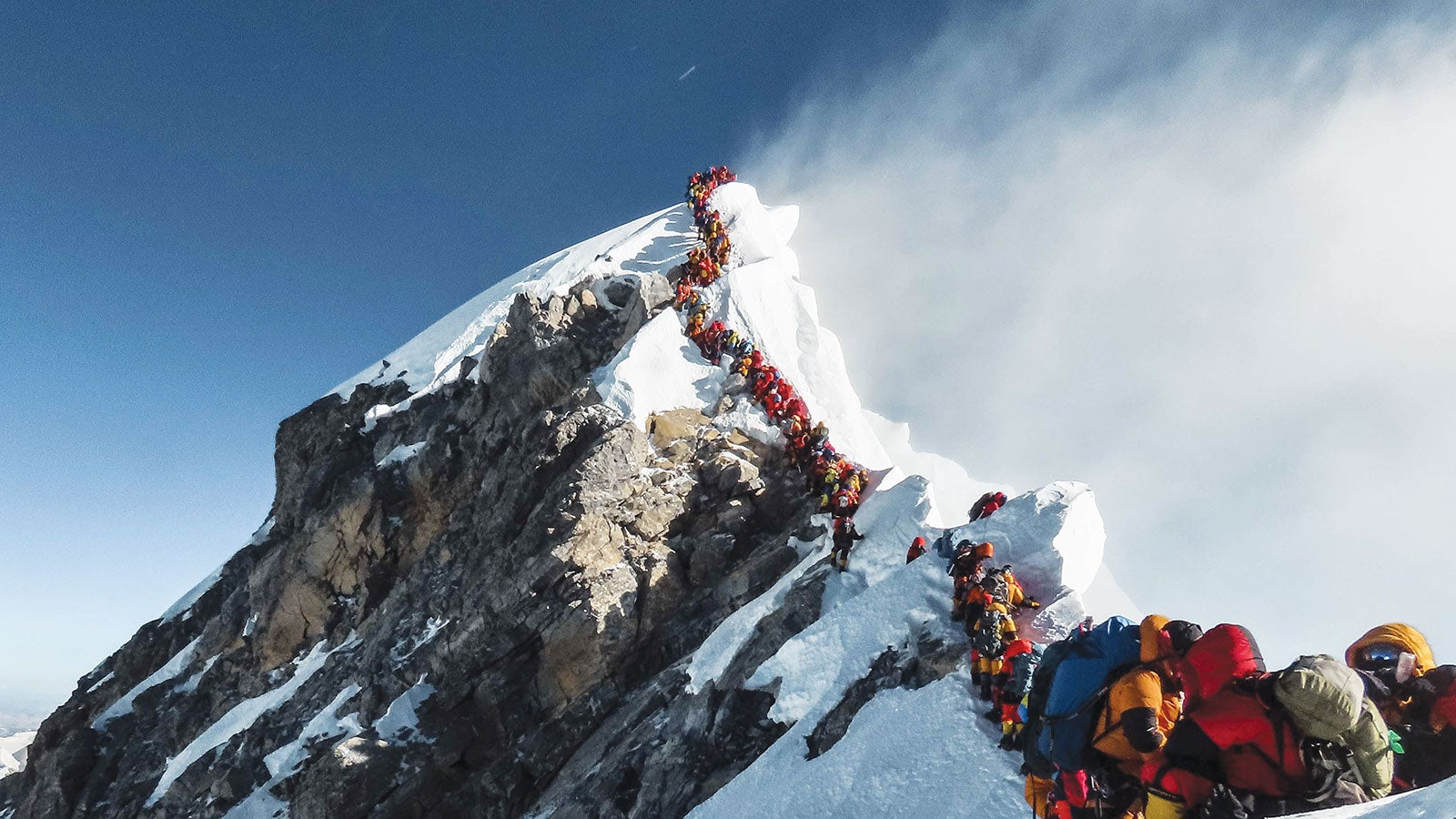
Too Many Tourists?
Summer 2019 | By Alan Fyall
Earlier this summer, a photo of people queuing to reach the top of Mount Everest launched a series of articles about the safety of climbers, the cause of the overcrowding, the impact on the mountain itself and how to solve the issue. At the heart of these inquiries are the questions: Why is there an increase in tourism, and what is the negative impact?
Tourism is hardly a new trend, but concern about the impact of an influx of visitors is a relatively modern one. Coined a few years ago, the term “overtourism” describes a reduction in the overall quality of life for locals and the tourist experience, of which the natural environment is so often a significant part. Like all complex phenomena, there is no quick-fix explanation as to the causes and remedies.
The biggest challenge remains managing the popularity of certain locations, from Yosemite in California to Everest in Nepal and Tibet, at a time when people are traveling more than ever.
The biggest challenge remains managing the popularity of certain locations, from Yosemite in California to Everest in Nepal and Tibet, at a time when people are traveling more than ever. International tourism receipts reached $1.7 trillion last year, an increase of 4 percent over 2017, representing nearly 30 percent of all service exports globally — exceeding the economic output of the global food and automotive industries.
A significant population growth across the globe and exponential growth in the middle classes in China and India, in particular, mean more people with more money to spend on items once viewed as a luxury. Cheaper airfares and the rise of more affordable services such as Uber and Airbnb have made travel to new places less expensive and easier. And there has been a growth in global demand, as a result of social media (Instagram perhaps being the biggest culprit with people even claiming, “I did it for the ’gram”) and new emerging markets.
There are certainly arguments to be made for the benefits of traveling: learning more about other cultures, boosting your confidence, creating memories, and learning more about yourself.
The tolls, however, can be vast. Though tourism to Everest brings in $300 million to Nepal every year, there is a human toll. More than 300 people have died on the mountain since 1953. This year’s climbing season saw 11 deaths, marking the deadliest season since 2015 when an avalanche killed 19 people at a base camp following a 7.8 earthquake. In part, the most recent death toll is due to Nepal increasing the number of permits issued this year to 381, leading to overcrowding, an influx of inexperienced climbers and a limited amount of oxygen tanks needed for climbing at higher levels. Inclement weather certainly played a role as well, as it does every year.
But there’s also the environmental toll. In June, an expedition crew removed 12 tons of garbage from the mountain, including “empty oxygen cylinders, plastic bottles, cans, batteries, food wrappings, fecal matter and kitchen waste,” according to a Nepal Army spokesperson.
Mount Everest is hardly the only locale facing the impact of overtourism. Thailand and Iceland have both closed popular destinations as a result of an increase in visitors. After being featured in the 2000 film The Beach , starring Leonardo DiCaprio, Maya Bay in Thailand experienced significant environmental damage — including decimated coral reefs, a declining mangrove population and receding beaches — due to the up to 6,000 people drawn daily to its once-pristine beauty. And in May, Iceland announced having to close Fjaðrárgljúfur, a canyon popularized in Justin Bieber’s 2015 music video, “I’ll Show You.” The natural formation faced erosion and damage to its sub-Arctic flora as a result of an additional 127,475 visitors from 2016 to 2018.
Fortunately, many solutions do exist. For example, responsible forms of tourism development, preemptive policies (especially with regard to air and cruise travel), the economic and environmental accounting and auditing of tourism development, and the dispersal of tourists to other areas can all play a part in mitigating the problem. So, too, can economic fees and taxes to limit demand and de-marketing strategies to reduce or re-direct demand. Solutions need to come from governments — and, frankly, from us.
Ultimately, we as tourists need to show some self-restraint and consider staying local sometimes. By reducing the amount of gas used during travel, staycations are perhaps the best way for us all to limit our carbon footprint — if not the most glamorous or social-media worthy.
Alan Fyall is the Visit Orlando Endowed Chair of Tourism Marketing in the Rosen College of Hospitality Management and is a member of UCF’s National Center for Integrated Coastal Research .
PHOTO BY @Nimsdai/Projectpossible.co.uk
- 86-19138970032 (GMT+8 18:00~09:00)

- Beijing Xian Tours
- Shanghai Beijing Tours
- Hong Kong Guilin Tours
- Hangzhou Suzhou Tours
- Kunming Lijiang Tours
- Shanghai Yangtze Cruise Tours
- Chengdu Tibet Tours
- More Short Stay Tours
- China Tours in January
- China Tours in February
- China Tours in March
- China Tours in April
- China Tours in May
- China Tours in June
- China Tours in July
- China Tours in August
- China Tours in September
- China Tours in October
- China Tours in November
- China Tours in December

- High Speed Trains
- China Yangtze Cruise Tour
- Photography
- Desert Adventure
- Ethnic Villages
- Biking Tours
- Kung Fu Tours
- Heritage Sites Exploration
- China Spring Tours
- China Summer Tours
- China Autumn Tours
- China Winter Tours
Notice! 2024 available cruise routes include 4~5 days Chongqing-Yichang(most classic) and 11~12 days Chongqing-Yichang-Shanghai(limited).

- Best-value Yangtze Cruises
- Top Family-friendly Cruise Ships
- Top 3 Luxury Yangtze River Cruises
- Yangtze River Highlights
- Yangtze River Cruise Routes
- Upstream or Downstream?
- Dining & Drinking
- Accommodations
- On-board Activities
- Yangtze Cruise Booking Steps

- Inner Mongolia

- Fanjingshan
- How to Plan Your First China Tour
- How to Plan Beijing Tour
- How to Plan Xian Tour
- How to Plan Shanghai Tour
- How to Plan Guilin Tour
- How to Plan Sichuan Tour
- How to Plan Family Tour
- 2024 China Travel Ideas
- Best Time to Visit China
- What to Pack for Your China Journey
- Make Payment in China
- Updated China Travel News
- Ultimate Chinese Visa Guide
- Chinese Visa Types
- Chinese Visa Requirements
- Do I Need a Visa for China
- Chinese Visa Application
- Chinese Visa Exemptions
- 144-hour Visa Free
- Shenzhen Visa on Arrival
- Hainan 30-day Visa Free
- Embassies & Consulates
- Invitation Letter
- Useful Visa FAQs & Tips
- Entry Regulations
- Baggage Allowance
- Customs Declaration
- Exit Regulation
- How to Book Train Tickets
- How to Collect Train Tickets
- How to Cancel & Alter Train Tickets
- How to Read Train Tickets
- China High Speed Train Types
- Seats Class & How to Choose
- Friendly Facilities on the Train
- The Train Station Departure Process
- Available Food and Drinks on the Train
- Western Toilets on the Train
- Luggage Racks & Baggage Allowance
- Beijing Train Stations
- Shanghai Train Stations
- Guilin Train Stations
- Xian Train Stations
- Chengdu Train Stations
- Hong Kong West Kowloon Railway Station
- Beijing - Xian
- Beijing - Shanghai
- Guangzhou - Shanghai
- Shenzhen - Shanghai
- Chengdu - Xian
- Shanghai - Hangzhou
- Shanghai - Xian
- Chengdu - Chongqing
- Kunming - Lijiang
- Beijing Capital International
- Beijing Daxing International
- Shanghai Pudong International
- Shanghai Hongqiao International
- Guangzhou Baiyun International
- Hangzhou Xiaoshan International
- Chengdu Tianfu International
- Chengdu Shuangliu International
- Xian Xianyang International
- Shanghai - Beijing
- Hong Kong - Shanghai
- Guangzhou - Beijing
- Chengdu - Lhasa
- Shanghai - Guilin
- Shanghai - Sanya
- Travel in Spring Season
- Travel in Summer Season
- Travel in Autumn Season
- Travel in Winter Season
- Weather in January
- Weather in February
- Weather in March
- Weather in April
- Weather in May
- Weather in June
- Weather in July
- Weather in August
- Weather in September
- Weather in October
- Weather in November
- Weather in December
- Top 10 China Destinations
- Top 15 Things to Do
- China World Heritage Sites
- Top 10 Best Natural Beauties
- Top 10 Museums in China
- Top 10 Old Towns & Villages
- Five Great Mountains in China
- Top 10 Monasteries & Temples
- Top 10 Ski Resorts
- Top 10 Beautiful Lakes in China
- 7 Best Beaches in Sanya
- Top 6 Beautiful Waterfalls
- Panda Volunteering
- Having fun on Ice and Snow Festival
- About Us Who We Are Our Team Why Travel with Us Feedback & Reviews Travel Stories Travelers' Gallery Payment Guide Customer Support Contact Us
- Tour Experiences
Destinations
- Travel Guide
Things to do in Mount Everest
Mount Everest is one of the most popular destinations in Tibet. Each year, thousands of tourists come to take this once in a lifetime trip from all around the world. Don't take it granted that Mount Everest is the highest mountain in the world and nothing else special. Mount Everest will surprise you with its extraordinary landscape and brilliant influence in the world.
Besides the stunning landscape of Mount Everest itself, there are two great highlights on the Mount Everest - Rongbuk Monastery and Everest Base Camp . Rongbuk Monastery is a Buddhist temple which is believed to be the highest temple in the world. While the Everest Base Camp is the biggest base camp for mountaineers who want to conquer the highest peak in the world.
Popular Tour Packages including Mount Everest
- 8 Days Classic Mount Everest Tour from Lhasa
- 10 Days Chengdu Lhasa Everest Overland Tour
- 8 Days Tibet Classic Tour from Kathmandu
- 8 Days Lhasa to Kathmandu Overland Tour via EBC
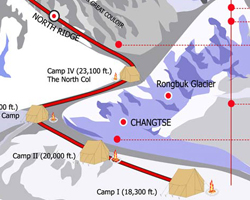
Shigatse Travel Map
- Top Attractions
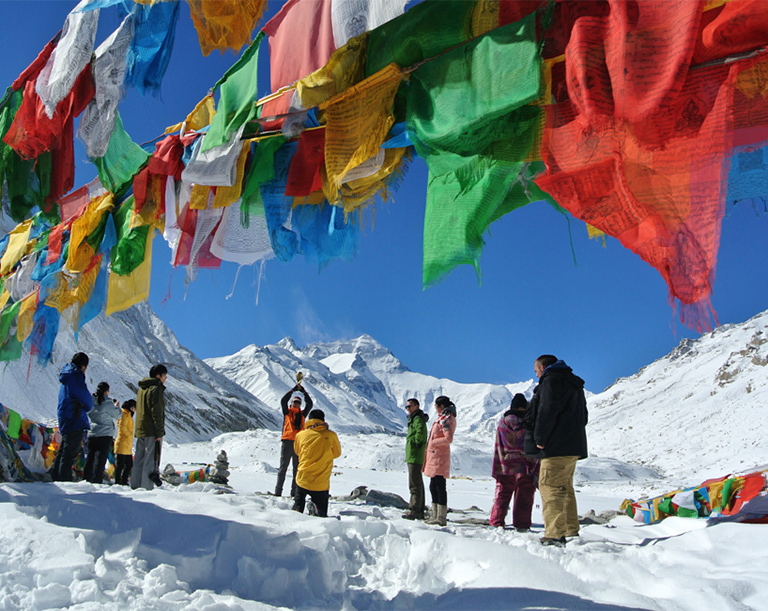
No. 1: Mount Everest
Type: Mountains, Nature & Parks
Recommended visiting: 1 day
Mount Everest is the highest mountain in the world with an elevation of 8844.43 meters. Thousands of people make their expedition from far away to explore the splendid looks of “The Third Pole”. Mount Everest is located on the border of China and Nepal. The southern side is located in Nepal, very steep and difficult for regular tourists to visit. While, the northern side is located in Tibet, and goes up gradually to the Everest Base Camp locating at the altitude of 5,200m. The infrastructure in the northern Mount Everest is much better than the southern side. Travelers can take vehicle to the Everest Base Camp to get bigger views of Mount Everest. Besides, travelers are able to use electric power at EBC.
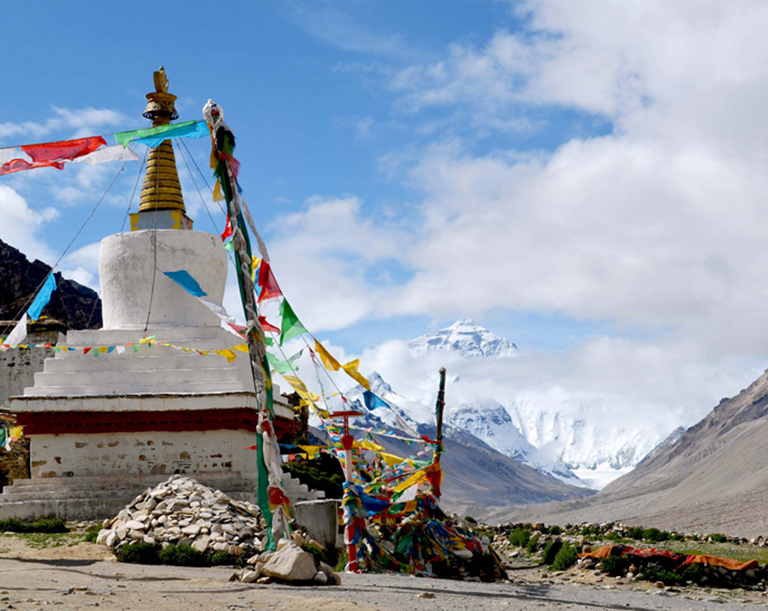
No. 2: Rongbuk Monastery
Type: Religious Sites, Lookouts, Sights & Landmarks
Recommended visiting: 1 hour
Rongbuk Monastery, located at the altitude of 5,154m, is the highest monastery in the world. It was originally built in 1899 by a lama of Nyingma sect of Tibetan Buddhism. It consists of two sites: old monastery and new monastery. The new site was built in 1902. Though small, but Rongbuk Monastery is an influential monastery which has 8 small affiliated monasteries, including a nunnery.
Statues of Sakyamuni Buddha and Padma Sambhava are enshrined and worshiped here. Rongbuk Monastery is the perfect place to view the giant Mount Everest.
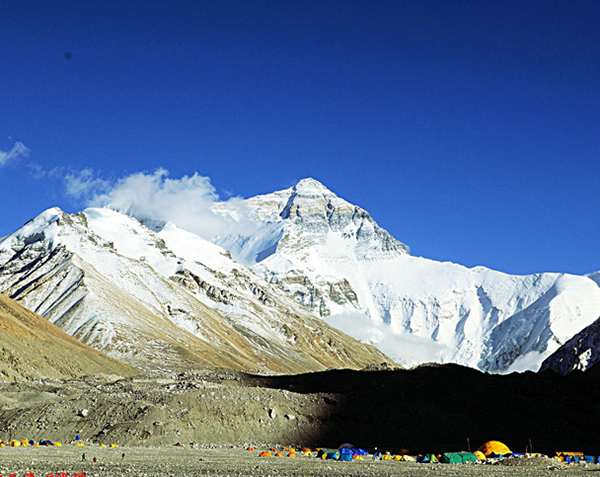
No. 3: Everest Base Camp
Type: Religious sites, Sights & Landmarks
Recommended visiting: 2 hours
Everest Base Camp (EBC) is about 8km upwards from Rongbuk Monastery. Travelers usually take eco-bus to EBC. If you are energetic, you can hike up to the Base. The road gradually goes higher.
The EBC is the most important base for mountaineers who want to climb further the Mount Everest. Mountaineers usually stay here for supply and take good rest before climbing upper. From April to May is the best time to climb the Mount Everest when you can see many colorful tents encamped around the EBC.
How to Plan Your Tibet Adventure to Mount Everest
To visit Mount Everest , you can get to Lhasa in Tibet, or Kathmandu in Nepal first, then transfer to Mount Everest (North Pole) by car. It is about 605km's driving from Lhasa to Mount Everest on a well-paved road. Instead of driving directly head to Mount Everest, travelers usually travel for two days to Mount Everest at a leisure pace, via Gyantse and Shigase , and visit many famous attractions on route, such as Yamdrok Lake, Karola Glacier, Palcho Monastery , Tashilunpo Monastery , etc. After leaving Mount Everest, you can go back to Lhasa, or travel overlanding for 2 days to Kathmandu. You can also travel from Kathmandu to Mount Everest. Transfer about 160km from Kathmandu City to Gyirong Port at Nepal Tibet border, check in China Customs, then drive 25km to Gyirong Town for accommodation. On the next day, you will drive about 325km to Mount Everest. After the Mount Everest, you can extend your trip to Lhasa, and visit Shigatse, Gyantse and Yamdrok Lake on route.
Keep Reading
- Mount Everest transportation
- Hotels in Mount Everest
- Mount Everest Weather & Seasons
- Mount Everest Maps
Recommended Everest Tours
Top 3 Everest tours chosen by most customers to explore Everest in the best way. Check the detailed itinerary, or tailor your own trip now with us.
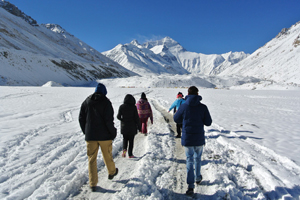
8 Days Classic Mount Everest Private Tour from Lhasa
Lhasa / Gyantse / Shigatse/ Everest
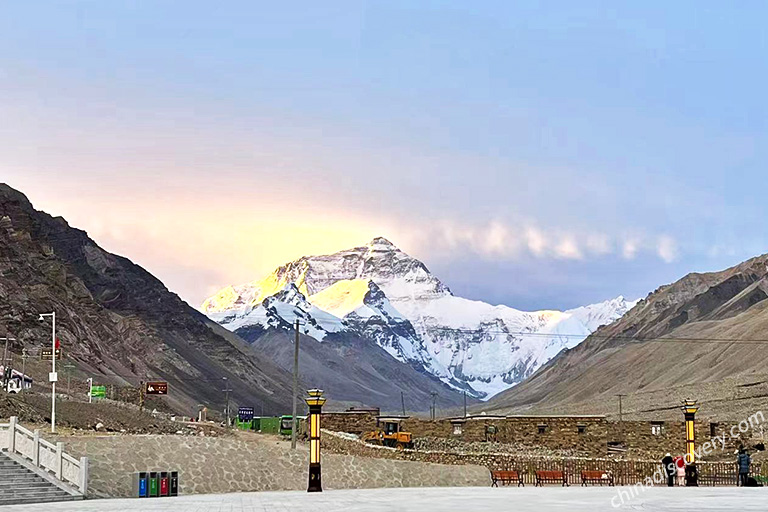
9 Days Tibet Discovery Tour Including Everest and Namtso Lake
Lhasa / Gyangtse / Shigatse / Mt.Everest / Namtso Lake
Start planning your tailor-made holiday to China by contacting one of our specialists. Once inquired, you’ll get a response within 0.5~23.5 hours.

- Affordable and valuable price
- 100% tailor-made packages
- Highly rated customers reviews
- Efficient customer support
China Tours
- Top 10 China Tours
- Classic China Tours
- China Tours from Beijing
- China Tours from Shanghai
- China Tours from Hong Kong
- China Tours from Chengdu
- Short China Trips
- Customize China Tour
- China Panda Tours
- Family Tour with Kids
- High-Speed Train Tour
- Silk Road Travel
- Yangtze River Cruise
- Hiking & Trekking Tours
- Photography Tours
- China Minority Travel
- Beijing Shanghai Tours
- Shanghai Yangtze Tours
- Chengdu Jiuzhaigou Tours
- Chengdu Lhasa Tours
- Suzhou Hangzhou Tours
- Guilin & Yangshuo
- Zhangjiajie
“Very good experience”
“WONDERFUL 25 DAYS IN CHINA - PRIVATE TOUR”
“Awesome China tour from northeast to southwest”
Any questions, please email us at: [email protected] or call us at: 86-19138970032 (Monday-Friday 9 a.m. to 6 p.m. GMT+8)
- Terms & Condition
- Privacy Policy
- Customer Support
Copyright © 2011-2024. All rights reserved.
Cookie policy
We use cookies to give you the best experience on our website. Continue using our website means you agree with our cookie policy. For more info, please read here .

Explore an extraordinary adventure tour to the iconic Mount Everest with our carefully curated collection of the 14 best Mount Everest tour packages . Created by local travel experts who know the region intimately, these tours offer an immersive experience in the heart of the majestic Himalayas . From thrilling treks to breathtaking helicopter tours, we have options to suit every adventurer's desire. Join us as we unveil the wonders of Everest and create unforgettable memories in the lap of nature's grandeur.

Everest Base Camp Trek with Helicopter Return

Everest Base Camp Helicopter Tour

Gokyo Valley Trek with Helicopter Return - 8 days

Everest Base Camp Trek - 14 Days

Everest Base Camp Trek 5 Days

Everest Base Camp Trek by Road - 16 Days

Everest View Helicopter Tour with Kalapatthar Landing

Jiri to Everest Base Camp Trekking

Everest Base Camp Luxury Trek - 12 Days

Everest Three Passes Trek

Short Everest Base Camp Trek - 7 Days

Everest View Trek - 8 Days

Everest Circuit Trekking - 17 Days

Gokyo Lake Trek - 11 Days

Gokyo Chola Pass Trekking via EBC - 14 Days
Mount everest tour packages facts.
Everest region lets you encounter the highest peak in the world, Mount Everest. Also, the supporting mountains’ panorama is much more mesmerizing. Everest is a paradise for adventure and nature lovers. Mount Everest is the most elevated mountain peak on the Earth above sea level with an ebb and flows official height of 8848 meters (29,029 feet).
It is known as Sagarmatha in Nepali and Chomolungma in the Tibetan language. Sagarmatha is combined with two words, ‘Sagar’ and ‘Matha’, which means ‘sky’ and ‘forehead’. Uniting both, the word Sagarmatha refers to as ‘Forehead of the Sky. It is likewise a worldwide outskirt in China and Nepal.
Mount Everest Tour Difficulty Level
The Mount Everest tours and treks vary in difficulty levels, ranging from easy to moderate. The level of challenge depends on the specific itinerary and trekking route chosen.
Mount Everest Tour Duration
The duration of Mount Everest treks and tours can range from 1 day to 20 days, depending on the chosen itinerary and trekking objectives. Shorter tours, such as the Everest Base Camp Helicopter Tour , provide a condensed experience, while longer treks allow for a more comprehensive exploration of the region.
Mount Everest Tour Environment
The trekking trails to Mount Everest are naturally beautiful, featuring rivers and several suspense bridges that add excitement to the journey. The trails can be moderately busy, but they are well-serviced with tea houses and lodges, providing necessary amenities and accommodations for trekkers.
Max Altitude in Mount Everest Tour
The highest point reached during Mount Everest tours is 5,364 meters at Everest Base Camp (EBC) and 5,643 meters at Kala Patthar. These altitudes offer stunning panoramic views of the surrounding peaks, including Everest itself.
Mount Everest Tour Accommodation
During the Mount Everest tours, accommodation options vary depending on the trekking route and location. Along the trekking trails, there are basic lodges, mid-level tea houses, and luxury lodges up to Lobuche that may offer western toilets. At the higher altitude of Gorekshep, the accommodation is more basic with simple tea houses.
Mount Everest Tour Best Weather
The ideal time to embark on Mount Everest treks is during the months of March to May and October to November. These periods offer favorable weather conditions, with clear skies and stable temperatures. However, other dry seasons can also be recommended for Everest treks.
Mount Everest Tour Transport To/From
To reach the starting point of the Mount Everest treks, trekkers typically take a plane or helicopter flight to Lukla Airport (2,860m). From there, transportation options include jeeps to Sallery or Phaplu Airport, depending on the chosen itinerary.
Everest Entry Documents
To participate in Everest treks, trekkers are required to obtain certain entry documents, including:
Trekkers' Information Management System (TIMS) Card : This card is a registration document that provides trekkers' information and helps in maintaining trekking records.
Sagarmatha National Park Permit: This permit is necessary to enter Sagarmatha National Park, which is home to Mount Everest and its surrounding region.
Additionally, there are no special permits required specifically for the Everest Base Camp trek . However, there may be local government fees of Rs. 2000 to 5000 per person, which are subject to change and should be confirmed with the local authorities.
These Mount Everest tour facts provide essential information for trekkers and adventurers planning to explore the wonders of Everest and its breathtaking surroundings.

Binod Sapkota
We use cookies to ensure that we give you the best experience on our website.
Mount Everest

Mount Everest is the world's tallest mountain at 8,848.86 m (29,032 ft). It straddles the border of China / Tibet and Nepal and can be visited from either side:

- Everest Base Camp Trek through Khumbu (Sagarmatha National Park), the more commonly visited region on the Nepalese (southern) side of the mountain
- Qomolangma , the less visited nature reserve on the Tibetan (northern) side
See also Hillary and Norgay , the first to climb Everest.
- Has custom banner
- Extra regions
- Region articles
- All destination articles
- Has Geo parameter
Navigation menu
- Share full article
Advertisement
Supported by
‘It Was Like a Zoo’: Death on an Unruly, Overcrowded Everest

By Kai Schultz , Jeffrey Gettleman , Mujib Mashal and Bhadra Sharma
- May 26, 2019
NEW DELHI — Ed Dohring, a doctor from Arizona, had dreamed his whole life of reaching the top of Mount Everest . But when he summited a few days ago, he was shocked by what he saw.
Climbers were pushing and shoving to take selfies. The flat part of the summit, which he estimated at about the size of two Ping-Pong tables, was packed with 15 or 20 people. To get up there, he had to wait hours in a line, chest to chest, one puffy jacket after the next, on an icy, rocky ridge with a several-thousand foot drop.
He even had to step around the body of a woman who had just died.
“It was scary,” he said by telephone from Kathmandu, Nepal, where he was resting in a hotel room. “It was like a zoo.”
This has been one of the deadliest climbing seasons on Everest, with at least 11 deaths. And at least some seem to have been avoidable.
The problem hasn’t been avalanches, blizzards or high winds. Veteran climbers and industry leaders blame having too many people on the mountain, in general, and too many inexperienced climbers, in particular.
Fly-by-night adventure companies are taking up untrained climbers who pose a risk to everyone on the mountain. And the Nepalese government, hungry for every climbing dollar it can get, has issued more permits than Everest can safely handle, some experienced mountaineers say.
Add to that Everest’s inimitable appeal to a growing body of thrill-seekers the world over. And the fact that Nepal, one of Asia’s poorest nations and the site of most Everest climbs, has a long record of shoddy regulations, mismanagement and corruption.
The result is a crowded, unruly scene reminiscent of “Lord of the Flies” — at 29,000 feet. At that altitude, there is no room for error and altruism is put to the test.
[Update: Nepal says Everest rules might change after traffic jams and deaths.]
To reach the summit, climbers shed every pound of gear they can and take with them just enough canisters of compressed oxygen to make it to the top and back down. It is hard to think straight that high up, climbers say, and a delay of even an hour or two can mean life or death.
According to Sherpas and climbers, some of the deaths this year were caused by people getting held up in the long lines on the last 1,000 feet or so of the climb, unable to get up and down fast enough to replenish their oxygen supply. Others were simply not fit enough to be on the mountain in the first place.
Some climbers did not even know how to put on a pair of crampons, clip-on spikes that increase traction on ice, Sherpas said.
Nepal has no strict rules about who can climb Everest, and veteran climbers say that is a recipe for disaster.
“You have to qualify to do the Ironman,” said Alan Arnette, a prominent Everest chronicler and climber. “But you don’t have to qualify to climb the highest mountain in the world? What’s wrong with this picture?”
The last time 11 or more people died on Everest was in 2015, during an avalanche.
By some measures, the Everest machine has only gotten more out of control.
Last year, veteran climbers, insurance companies and news organizations exposed a far-reaching conspiracy by guides, helicopter companies and hospitals to bilk millions of dollars from insurance companies by evacuating trekkers with minor signs of altitude sickness.
Climbers complain of theft and heaps of trash on the mountain. And earlier this year, government investigators uncovered profound problems with some of the oxygen systems used by climbers. Climbers said cylinders were found to be leaking, exploding or being improperly filled on a black market.

But despite complaints about safety lapses, this year the Nepali government issued a record number of permits, 381, as part of a bigger push to commercialize the mountain. Climbers say the permit numbers have been going up steadily each year and that this year the traffic jams were heavier than ever.
“This is not going to improve,” said Lukas Furtenbach, a guide who recently relocated his climbers to the Chinese side of Everest because of the overcrowding in Nepal and the surge of inexperienced climbers.
“There’s a lot of corruption in the Nepali government,” he said. “They take whatever they can get.”
Nepali officials denied any wrongdoing and said the trekking companies were the ones responsible for safety on the mountain.
Danduraj Ghimire, the director general of Nepal’s department of tourism, said in an interview on Sunday that the large number of deaths this year was not related to crowds, but because there were fewer good weather days for climbers to safely summit. He said the government was not inclined to change the number of permits.
“If you really want to limit the number of climbers,” Mr. Ghimire said, “let’s just end all expeditions on our holy mountain.”
To be sure, the race to the top is driven by the weather. May is the best time of the year to summit, but even then there are only a few days when it is clear enough and the winds are mild enough to make an attempt at the top.
But one of the critical problems this year, veterans say, seems to be the sheer number of people trying to reach the summit at the same time. And since there is no government traffic cop high on the mountain, the task of deciding when groups get to attempt their final ascent is left up to mountaineering companies.
[In 2016, three Indian climbers died on Everest. In 2017, a team sought to recover the two bodies that had been abandoned .]
Climbers themselves, experienced or not, are often so driven to finish their quest that they may keep going even if they see the dangers escalating.
A few decades ago, the people climbing Everest were largely experienced mountaineers willing to pay a lot of money. But in recent years, longtime climbers say, lower-cost operators working out of small storefronts in Kathmandu, the capital, and even more expensive foreign companies that don’t emphasize safety have entered the market and offered to take just about anyone to the top.
Sometimes these trips go very wrong.
From interviews with several climbers, it seems that as the groups get closer to the summit, the pressures increase and some people lose their sense of decency.
Fatima Deryan, an experienced Lebanese mountaineer, was making her way to the summit recently when less experienced climbers started collapsing in front of her. Temperatures were dropping to -30 Celsius. Oxygen tanks were running low. And roughly 150 people were packed together, clipped to the same safety line.
“A lot of people were panicking, worrying about themselves — and nobody thinks about those who are collapsing,” Ms. Deryan said.
“It is a question of ethics,” she said. “We are all on oxygen. You figure out that if you help, you are going to die.”
She offered to help some of the sick people, she said, but then calculated she was beginning to endanger herself and kept going to the summit, which is currently measured at 29,029 feet. On the way back down, she had to fight her way again through the crowds.
“It was terrible,” she said.
Around the same time, Rizza Alee, an 18-year-old climber from Kashmir, a disputed territory between India and Pakistan, was making his way up the mountain. He said he was stunned by how little empathy people had for those who were struggling.
“I saw some people like they had no emotions,” he said. “I asked people for water and no one gave me any. People are really obsessed with the summit. They are ready to kill themselves for the summit.”
But Mr. Alee himself took some chances; he has a heart condition and says he “kind of lied” to his expedition company when they asked if he had any health issues.
Mr. Dohring, the American doctor, represents the other end of the spectrum.
At 62, he has climbed peaks all over the world. He read about explorers as a boy and said he had always wanted to get to the “one spot where you can stand higher than any place else on earth.’’
To prepare for Everest, he slept at home in a tent that simulated high-altitude conditions. His total Everest experience cost $70,000.
Still, there was only so much he could prepare for. Last month, when he hiked into base camp at Everest at an altitude of more than 17,000 feet, Mr. Dohring said he was overcome with awe.
“You look at a circle of mountain peaks above you and think, ‘What am I doing here?’’’ he said.
He pressed on. After long, cold days, he inched up a spiny trail to the summit early on Thursday and ran into crowds “aggressively jostling for pictures.”
He was so scared, he said, that he plunked down on the snow to keep from losing his balance and had his guide take a picture of him holding up a small sign that said, “Hi Mom Love You.’’
On the way down, he passed two more dead bodies in their tents.
“I was not prepared to see sick climbers being dragged down the mountain by Sherpas or the surreal experience of finding dead bodies,” he said.
But on Sunday, he had made it out. He boarded a helicopter after reaching base camp and flew back to Kathmandu.
He counted his blisters at the Yak and Yeti Hotel, where he said he treated himself to a thick steak and cracked open a cold beer. “Everest Lager, of course,” he said.
Kai Schultz, Jeffrey Gettleman and Mujib Mashal reported from New Delhi, and Bhadra Sharma from Kathmandu, Nepal.
Advertisement
How has Mount Everest tourism affected Nepal?
- Share Content on Facebook
- Share Content via Email
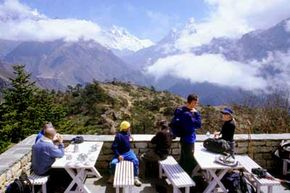
Since Nepal ranks among the poorest countries in the world, tourism is a vital economic lifeline. Comprising about 4 percent of the country's gross national product, the industry pulls in around half a billion dollars annually [source: CIA World Factbook]. Although the country has a rich culture and religious tradition, the best-paying and longest-staying tourists travel there for the rock star of the Himalayan mountains -- Mount Everest.
Although only slightly larger than the state of Arkansas [source: CIA World Factbook], the Himalayas that curve across the length of Nepal are home to eight of the 14 tallest mountains on the globe. The government takes advantage of this fact because when it comes to Everest -- or Sagarmatha in the native tongue -- people are willing to shell out serious dough.
What do these dollars mean for Nepal? Steady income. Mount Everest climbers have been a dependable money source, travelling to the country despite the decade-long Maoist uprising of mostly rural farmers who followed an Asian strand of Marxism, which came to a cease-fire in 2007. In climbing season alone from March to May, the population of the Khumbu region at the base of Mount Everest soars from around 40,000 to 700,000 [source: McDougall ].
But thousands of those seasonal residents are Nepalese workers from other areas who migrate in for tourism-related employment. In fact, locals have decried recent calls for Mount Everest to be restricted due to environmental damage because so many rely on tourism to provide a majority of their annual income. For example, sherpas, or mountain guides, in particular can make upwards of $2,000 per expedition, far exceeding the average Nepalese annual income.
Just how much are people paying for a glimpse or a hike up Mount Everest? Go to the next page for glimpse at the cost to visit the roof of the world.
Everest's Economic Benefits
Everest and the environment.
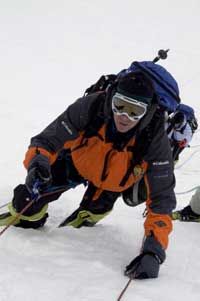
The easiest way to get a grip on how much money Nepal takes in from tourism is to take a close look at what the Everest tourist spends. You might be surprised how quickly the numbers climb.
If you're one of the 25,000 annual Everest tourists, getting into Nepal for more than a three-day stay will only run you $30 [source: Nepal Tourism Board ]. But that's just the beginning of the tab. If you want to climb one of the major Himalayan mountains, you need a government-issued climbing permit. Although you can hike more than a hundred of the smaller peaks for free, who wants to play in the sandbox when the beach is next door?
Mountains taller than 21,300 feet (6,501 meters) are premium property. That base height costs $1,000 and increases $500 for every 1,640 feet (500 meters). Since Mount Everest stands at a staggering 29,029 feet (8,848 meters), the permit will run around $3350.
Now that you've got your permit, you're ready to start climbing, right? Not quite. If you want to take the most common route to the top of Everest, you'll owe the Nepal government a $25,000 royalty fee for yourself or up to $70,000 for a seven-person expedition crew [source: Nepal Mountain News ].
Can't afford it? Wait until the off-season. To increase Everest tourism during the colder months of the year, the Nepalese government announced in 2007 that it was trying to cut royalty fees for people interested in climbing Everest during fall and winter. If the proposed plan goes into effect, a September through November climb will be 50 percent off the regular price and one from December to February will be 75 percent lower. If you're lured into the sales price, Nepal winds up raking in off-season tourism money.
Once you get to the Khumbu region, there are other expenses as well, such as lodging, food and any additional supplies that aren't covered in your expedition fees. In addition to trekking businesses, more than 300 hotels and lodges have sprung up from the tourism, many of which are owned by the local Sherpa people [source: Reid and Kendrick]. Some people turn their homes into tea houses , or overnight lodging, for tourists who want a more "authentic" Himalayan experience. Hundreds of Nepalese men from other areas swarm into Khumbu as well, hoping to get work as porters on expeditions, hauling trekking equipment up Everest slopes on their backs. Even the high-altitude Buddhist monasteries draw income from passing tourists.
However, tourism carries its own price as well in the form of environmental destruction. Read on to learn about the environmental repercussions of Mount Everest tourism.
Here are some tips from the Nepal Tourism Board to help you follow the country's customs:
- When you greet Nepalese, say, "Namaste."
- Take your shoes off before entering people's homes.
- When eating, do not use your eating hand to touch anything other than your food and utensils.
- Only walk around temples in a clockwise direction.
- Don't engage in public displays of affection.
- Don't touch anything with your feet.
[source: Nepal Tourism Board ]
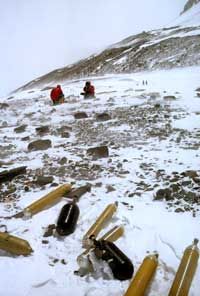
The Mount Everest rush started after Edmund Hillary and Tenzing Norgay made it to the top in 1953. Before that, Khumbu's environmental state was far healthier. But with thousands of pairs of feet pounding its footpaths for decades, many believe that Sagarmatha needs a rest.
Global climate change alone has affected Everest's geography, as some of its glaciers have retreated as much as three miles (4.8 km) in the past 20 years [source: Is global warming destroying Mount Everest?.
Human activity is the source for the most visible damage being done to the area. Although Khumbu is protected as the Sagarmatha National Park, challenges remain for curbing waste left behind on the trials, especially disposable water bottles and food cans. Literally tons of trash has been cleared from the Everest Base Camp, but groups such as Kathmandu Environmental Education Project remain hard at work teaching climbers about low-impact trekking.
While trash remains problematic, energy sources for feeding and housing thousands of tourists each year are growing scarce. When Sherpas first settled in the Khumbu valley in the 1500s, the forests were lush with plant life. Today, the tree line continues to descend to lower altitudes, as firewood is burned for heating, cooking and hot showers. Environmental groups have urged villagers, business owners and climbers to use kerosene instead of firewood, but the conversion is a slow process. The rate that tourists consume energy is also far higher than Sherpas since they are more accustomed to it in their more industrialized nations.
Although the late Edmund Hillary and others have urged the Nepalese government to ban Everest access for a while to allow for cleanup and more reforestation efforts, there are no signs of government compliance. In fact, the Nepal tourism board furiously refuted an international news story that Nepal was shutting off base camp access for 10 days during the spring of 2008 to allow for a torch run for the 2009 Summer Olympics in Beijing . And the plan for offering lowered rates during the off-season indicates its determination to not only keep the mountain open to the public but actually attract more tourists.
As you can see, Mount Everest tourism has created a difficult puzzle for Nepal. While it's a reliable source of income for some of the poorest people in the world, its very success could also be paving a path to its destruction. For more information about Mount Everest and Nepal, go to the links on the next page.
Lots More Information
Related articles.
- How Climbing Mount Everest Works
- Is global warming destroying Mount Everest?
- How Adventure Travel Works
- How Ecolodges Work
More Great Links
- Nepal Tourism Board
- The Himalayan Trust
- CBC News Online. "In Depth: Mount Everest." May 9, 2006. (March 21, 2008)http://www.cbc.ca/news/background/mount_everest/
- Central Intelligence Agency. "Nepal." The World Factbook. Updated March 6, 2008. (March 20, 2008)https://www.cia.gov/library/publications/the-world-factbook/geos/np.html#Geo
- Davies, Elizabeth. "Mount Everest's appeal grows despite violent unrest in Nepal." The Independent. April 29, 2005. (March 20, 2008)http://findarticles.com/p/articles/mi_qn4158/is_20050429/ai_n14605253
- Jones, Finn-Olaf. "Tourism Stripping Everest's Forests Bare." National Geographic Traveler. Updated Aug. 29, 2003. (March 20, 2008)http://news.nationalgeographic.com/news/2003/08/0829_030829_travelereverest.html
- MacDonald, Mia. "The roof of the world: tourism in Nepal strikes a delicate balance." E: The Environmental Magazine. March - April, 2004. (March 20, 2008)http://findarticles.com/p/articles/mi_m1594/is_2_15/ai_114327247
- McDougall, Dan. "Should Everest be Closed?" The Observer. Oct. 8, 2006. (March 20, 2008)http://www.guardian.co.uk/world/2006/oct/08/conservation.environment
- Nepal Mountain News. "Royalty Fees of Various Peaks of Nepal." (March 20, 2008)http://www.nepalmountainnews.com/royalty_fees.php
- Nepal Tourism Board. "General Information." (March 20, 2008)http://www.welcomenepal.com/brand/travel_general.asp
- Reid, T.R. and Kendrick, Robb. "The Sherpas." National Geographic. May 2003. (March 17, 2008)
- Rosen, Elizabeth. "Somalis Don't Climb Mountains: The Commercialization of Mount Everest." The Journal of Popular Culture. Vol. 40, No. 1, 2007. (March 17, 2008)
Please copy/paste the following text to properly cite this HowStuffWorks.com article:
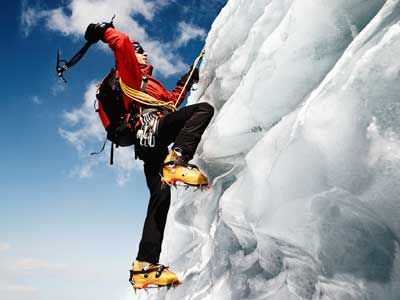
- Outdoor Activities
- Destinations
- Book Hotels, Flights & Cars
- Advertise With Us
- Cookie Settings
Copyright © 2024 MapQuest Holdings LLC, a System1 Company

- PERPETUAL PLANET
Traffic jams are just one of the problems facing climbers on Everest
As the last teams leave the mountain, alpinists and pundits argue about how and why things went awry; exclusive new photos
Climbers line up to move through the Khumbu Icefall, one of the most dangerous sections alpinists must traverse when attempting Mount Everest.
Kathmandu, Nepal — On Monday, Christopher Kulish, a 62-year-old attorney from Boulder, Colorado, died at Camp 4, located on the South Col at 26,000 feet, after returning from the summit of Mount Everest. According to Kulish’s brother , an initial assessment indicates Kulish died of cardiac arrest, not altitude sickness.
His death brings the number of fatalities on Mount Everest this season to 11 and raises the full death toll on Himalayan 8,000 meter peaks this spring to 21. With several more days remaining in the climbing season—which effectively ends when the monsoon arrives sometime the first week in June—it is possible the number will continue to rise.
A photo captured last week by Nepali mountaineer Nirmal Purja Magar showed a near continuous line of hundreds of climbers bottlenecked on the summit ridge of Everest—all trying to take advantage of a narrow window of good weather. The image went viral, sparking an instant debate about whether the mountain is too crowded and forcing a difficult, if familiar , discussion about whether the high number of casualties was due to too many climbers.
Most of those guides and clients depicted in the photo have since left base camp and are now beginning to share their stories. There’s no consensus.

Nepali climber Nirmal Purja Magar posted to Instagram this photo of the crowds attempting to reach the summit. It quickly went viral and sparked debate on overcrowding issues on the mountain.
On one end of the spectrum, Elia Saikaly, a Canadian cinematographer, posted the following report on Instagram : “I cannot believe what I saw up there. Death. Carnage. Chaos. Lineups. Dead bodies on the route and in tents at camp four. People who I tried to turn back who ended up dying. People being dragged down. Walking over bodies. Everything you read in the sensational headlines all played out on our summit night.” That caption has since been deleted.
Others strike a more mundane note: “It was like standing in line on a busy weekend at a ski resort,” says Dirk Collins, a Wyoming-based filmmaker working with the National Geographic Society. “Frustrating, but mostly boring—not what you expect—to have to stand in line on Everest.” The National Geographic Society-led team had planned to summit but turned back due to the crowds.
Yet some veteran guides are pushing back against the narrative that the lines are killing people, saying the line is a symptom of bigger problems and not the direct cause of most of the deaths.
“That storyline is just false,” says American Ben Jones, a guide for Alpine Ascents International. “None of the [fatalities] I know of died because they were waiting in line... These are mostly decision-making issues.”

Filmmaker Elia Saikaly posted this image to Instagram, writing: "This photograph of the south summit was quickly taken on our descent as we raced down to avoid the incoming weather system. I barely looked at the view and quickly took this pic as I raced down the mountain."

Expedition teams, both those attempting to reach Everest's summit and those who have already turned back, navigate a single, crowded path.
What it’s like to wait in line at 28,000 feet
The problem was not limited to one day. Jones helped lead his commercial team to the summit on May 23rd, the day after the infamous photo was taken. “There were two people holding up a line of 50. That was the only problem we had," he says. "They would not move over and let people pass.” Jones estimates it cost the bulk of those waiting about two hours.
“It was just standing still waiting for two people to move over, and they wouldn’t,” Jones continues. In a recent post, longtime Everest blogger Alan Arnette calculated that five of the 11 deaths this season on Everest may have been related to the crowds.
“If you keep going to the summit when you don’t have enough oxygen to get back down, that’s poor decision making,” said Jones’s fellow Alpine Ascents guide, Eric Murphy. “When we’re standing there waiting for these people to go, we lower the oxygen flow down a bit to make sure we’re not going to run out,” Murphy said, describing how his team conserved the bottled oxygen needed for the highest parts of the mountain.
According to Murphy, the slow-moving lines are a leadership issue as much as anything else. “If [the slow climbers] have a Sherpa with them, really that Sherpa should say let’s step aside, let’s rest a little it, and let’s let people pass,” he said, adding, “It puts too much responsibility on a lot of the Sherpa.”
Murphy also pointed to nuances in climbing techniques that slowed down traffic flow. “Some guys clip into every rope with an ascender, even on flat terrain,” he said. An ascender clips onto a fixed rope and prevents a climber from sliding down—when the terrain is flat a regular carabiner is faster and relatively safe as well. The process of attaching and unattaching an ascender might add 10 or 15 seconds for each transition. One Everest climber estimates there are about 500-600 transitions, which equates to roughly two hours or more, some of which could be saved with the simpler process. “That is way slower than just clipping into the rope with a carabiner.”
“The crowds is a headline... It's the lack of experience among people on the mountain,” says Mark Fisher, an experienced guide who was also a member of the National Geography Society-led science team. “People didn't seem to know things like taking care of themselves, being efficient with climbing skills, and being properly prepared for the environment.”
Another issue that impacted the number of climbers high on the mountain relates to the weather forecasts. Everest typically has 10-15 days of relatively calm weather in May for climbers to attempt a summit climb. This season, the remnants of Cyclone Fani struck the Himalaya the first week of May, delaying for a few days the climbing Sherpa team that sets up a series of fixed ropes used to reach the summit. After the route was opened to the summit on May 14th, the weather remained unpredictable, with blustery winds averaging between 40-60 miles per hour (safe speeds are generally less than 30 miles per hour) and below-average temperatures threatening many days in the usual summit window. Then around May 19th, the weather models completely changed, and one of the best looking days in the predictions, May 24th, suddenly changed into the worst. With sustained winds over 60 miles per hour predicted, many teams moved their summit attempts up to May 22nd or 23rd.

Expedition teams make their way along a part of the route known as the Balcony toward the summit of Mount Everest. In 2019, Nepal issued a record number 381 climbing permits and a roughly similar number of permits to guides and Sherpas, contributing to crowding on the mountain.
Avoiding rush hour the new normal
Official final numbers for the 2019 Everest season have yet to come in, but it seems likely that this year will be a record season in terms of summiteers. The Nepalese government issued 381 permits this season according to latest reports—a record—with approximately another 140 permitted climbers attempting the peak from Tibet. (Professional climbing Sherpas working on the mountain are not included in this tally.) Alan Arnette is reporting an unofficial number of more than 700 summiteers this year, which includes climbing Sherpas; the record, set in 2018, stands at 802.
China minimizes the problem of crowding on their side of Everest by issuing far fewer permits, and many outfitters have moved their operations to the China side of the mountain.
The issue isn't just the sheer numbers, but the quality of some guide services serving the influx of climbers on the Nepal side. “The biggest problem, I think, on Everest in general—and people aren’t going to like to hear this—it’s the local companies that are taking inexperienced people, incompetent people, and pulling them up mountain,” Jones says.
Fifteen of the 21 climbers who died on 8,000-meter peaks this year were clients of Nepali-organized expeditions versus international guide services working in conjunction with a local outfitter.
“We strategize constantly about how to avoid the crowds,” Jones explains. “Leaving camp a few hours earlier or later can change your day completely. It’s just another layer to decision-making on Everest... The Western guide services communicate with each other, the other operators not so much…”
It is a sensitive issue because the lucrative climbing industry in Nepal has long been dominated by Western guides and only in the past decade or so have Nepali-owned companies begun to make significant inroads, largely by charging far less than their foreign counterparts and catering to the lower end of the growing market of clients wanting to be guided up the world's tallest mountain.
If the crowds aren’t directly culpable for killing people, they are unquestionably responsible for increasing the risks by necessitating longer summit days—indelibly changing the dynamic of climbing Everest.
One of the few elite climbers on the Nepal side of Everest this season was German alpinist David Goettler, who attempted to climb the mountain without supplemental oxygen, a style favored by purists but one that increases the possibility of frostbite and altitude sickness and demands perfect conditions. Goettler was ultimately forced to turn around about 200 meters from the top. He was unwilling to accept the risks of continuing on because of the crowds.
“Even if I say, I want to go down now, suddenly I have to stand in line with all the other people going down, and I can’t move fast enough to stay warm,” Goettler explains. “It was a risk which I was not willing to take, which could very well lead to catastrophe…”

Expedition teams use a series of camps to rest up at camp three before moving farther up the mountain to their next stop at camp four, before their final push for the summit.
Goettler continues: “[The experience] was what I expected… I think it’s dishonest to go to Everest and complain about the crowds and skills. Of course, it reads nice in the media, but it’s the same I see on Mount Blanc and the Matterhorn. We professionals tell the world about how wonderful it is to explore these places. Of course, crowds will come.”
Both Ben Jones and Eric Murphy lament the negative headlines Everest continues to generate, noting they'd climbed with some of their clients for over a decade. “When you build the relationships, the comradery [we have] to reach that goal is something special,” Murphy reflects.
“When we go back home friends and family are asking what goes on up there, because all they hear are all these negative articles that come out every single year... and in my mind, it's just not true,” Jones says. “In mountaineering, it's never one decision that causes a negative outcome, it's a series of bad decisions.”
Related Topics
- MOUNTAIN CLIMBING
You May Also Like

Want to climb Mount Everest? Here's what you need to know

How climbers faced down the ‘death zone’ on one of Earth’s tallest mountains

Meet the Himalayan trekking guide reclaiming the mountains for women

Everything you need to know about climbing Mount Kilimanjaro
_4x3.jpg)
The ‘Yosemite of South America’ is an adventure playground in Patagonia

How to get front-row seats to an active volcano in Guatemala

Why visit Annecy, gateway to the shores and summits of the French Alps
- Perpetual Planet
- Environment
History & Culture
- History & Culture
- History Magazine
- Mind, Body, Wonder
- Adventures Everywhere
- Paid Content
- Terms of Use
- Privacy Policy
- Your US State Privacy Rights
- Children's Online Privacy Policy
- Interest-Based Ads
- About Nielsen Measurement
- Do Not Sell or Share My Personal Information
- Nat Geo Home
- Attend a Live Event
- Book a Trip
- Inspire Your Kids
- Shop Nat Geo
- Visit the D.C. Museum
- Learn About Our Impact
- Support Our Mission
- Advertise With Us
- Customer Service
- Renew Subscription
- Manage Your Subscription
- Work at Nat Geo
- Sign Up for Our Newsletters
- Contribute to Protect the Planet
Copyright © 1996-2015 National Geographic Society Copyright © 2015-2024 National Geographic Partners, LLC. All rights reserved
ENCYCLOPEDIC ENTRY
Mount everest.
Mount Everest is the highest point on Earth. Learn about its history, the people who live there, and the people who visit to climb.
Anthropology, Conservation, Earth Science, Geology, Geography, Human Geography, Physical Geography
Mount Everest Snowdrift
Mount Everest is the highest of the Himalayan mountains, and—at 8,850 meters (29,035 feet)—is considered the highest point on Earth.
Photograph by Barry Bishop, courtesy of the National Geographic image collection
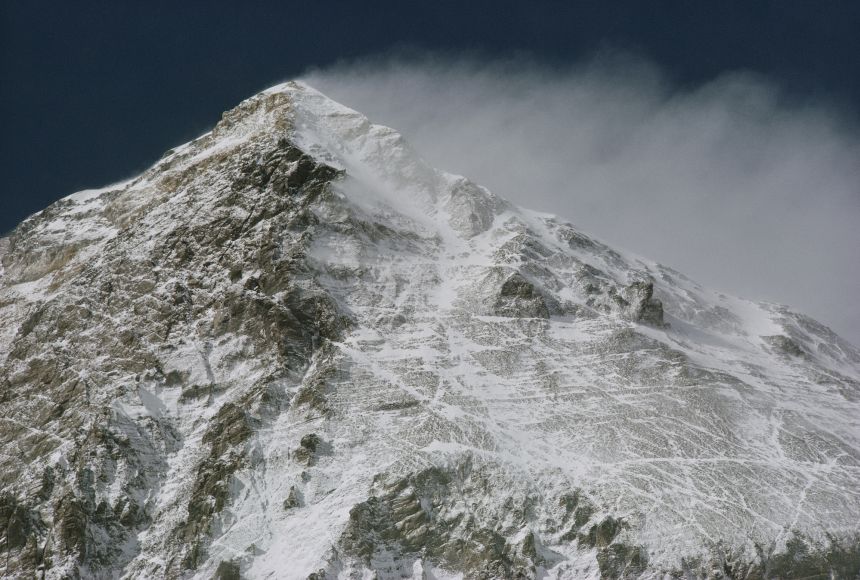
Mount Everest is a peak in the Himalaya mountain range. It is located between Nepal and Tibet, an autonomous region of China. At 8,849 meters (29,032 feet), it is considered the tallest point on Earth. In the nineteenth century, the mountain was named after George Everest, a former Surveyor General of India. The Tibetan name is Chomolungma, which means “Mother Goddess of the World.” The Nepali name is Sagarmatha, which has various meanings.
The first ever recorded people to climb Everest were Edmund Hillary (a mountaineer from New Zealand) and his Tibetan guide Tenzing Norgay. They climbed the mountain in 1953 and hold the record together. The first records of Everest’s height came much earlier, in 1856. British surveyors recorded that Everest was the tallest peak in the world in their Great Trigonometrical Survey of the Indian subcontinent.
The Himalayan mountains have long been home to indigenous groups living in the valleys. The most famous of these are the Sherpa people. The word “ Sherpa ” is often used to mean mountain guide, though it actually refers to an ethnic group. The Sherpa have valuable experience in mountain climbing, which they can provide to other climbers. Most climbs of Everest would be impossible without the Sherpas ’ logistical help and knowledge. However, their way of life extends beyond helping Everest climbers. Traditionally, their lifestyle has consisted of farming, herding, and trade. And, because they live at such a high altitude year round, they are accustomed to the low oxygen levels.
Climbing Mount Everest has become a popular expedition for mountain climbers. However, it is a dangerous undertaking. Climbing Everest requires a lot of experience mountaineering elsewhere, as well as a certificate of good health, equipment, and a trained Nepalese guide. The snow and ice on the mountain create deadly hazards like avalanches , and there is only a limited climbing season due to bad weather conditions. But perhaps the biggest danger is the altitude. Most climbers are not accustomed to the high altitude and low oxygen levels and rely on bottled oxygen they bring along. This is why the area above 8,000 meters (26,000 feet) elevation on Everest is called the “death zone.” Climbers who spend long periods in this region can develop altitude sickness and even brain swelling.
Mount Everest ’s climbing industry has become controversial. As popularity of the climb has increased, there have been more “traffic jams” as climbers spend too much time in the death zone waiting for their chance to go to the summit . With more people has also come more pollution up near the summit as climbers often discard unwanted items all along the mountain . Additionally, the Sherpa people have been exploited by climbers, and their traditional way of life has been disrupted by foreign climbers. Sherpa guides are faced with some of the highest death rates of any field of employment, for comparatively little pay. Most disturbingly, because many climbers have died along the way, and their bodies are impossible to retrieve, climbers must frequently travel past corpses as they make their way up the mountain .
Media Credits
The audio, illustrations, photos, and videos are credited beneath the media asset, except for promotional images, which generally link to another page that contains the media credit. The Rights Holder for media is the person or group credited.
Production Managers
Program specialists, last updated.
October 19, 2023
User Permissions
For information on user permissions, please read our Terms of Service. If you have questions about how to cite anything on our website in your project or classroom presentation, please contact your teacher. They will best know the preferred format. When you reach out to them, you will need the page title, URL, and the date you accessed the resource.
If a media asset is downloadable, a download button appears in the corner of the media viewer. If no button appears, you cannot download or save the media.
Text on this page is printable and can be used according to our Terms of Service .
Interactives
Any interactives on this page can only be played while you are visiting our website. You cannot download interactives.
Related Resources
- Heavenly Peak A Guide To...
Heavenly Peak: A Guide To the Best Times To Visit Mount Everest


Each year, Mount Everest attracts adventurous travellers who are rewarded with one of the most incredible sites in the world. Here, Tibettravel.org offers a handy guide to the best time to visit Mount Everest.

Mount Everest is reputed to be the highest mountain in the world, and reaching its pinnacle remains the holy grail of mountaineers. Every year, people from all over the world flock to Tibet to visit this stunning mountain of the Himalayan ranges. Tibettravel.org ’s guide to Everest suggests that the best time to travel to see Mount Everest’s staggering snow-capped peaks is during spring and autumn, from April to May and from September to November. Even as the height of this peak decreases day by day due to the global warming (the official height of the Everest is 8848.13 meters above sea level; in 2005, it was officially recorded to be 8844.43 meters above sea level), the mountain’s magnificent grandeur and promise of challenge remains a strong draw. Located at the border between Nepal and Tibet , the northern part of Mount Everest is located in Tingri County in southwestern Tibet. There are two Everest base camps on opposite sides of Mount Everest, namely South Everest Base Camp in Nepal and North Everest Base Camp in Tibet. From the Everest Base Camp in Tibet, travellers can see the magnificent northern face of the highest peak on the earth.

Over the years, since the first successful ascent by Tenzing Norgay and Edmund Hilary in 1953, many expeditions have sought to conquer Mount Everest. Of the two ascents, many experienced mountaineers choose to climb the Mt. Everest from the north side as it is more challenging than the south side. Tibet EBC is located at an altitude of 5,545 meters (18,192 ft) and is used when climbing via the northeast ridge. The North Base Camp has vehicle access (at least in the summer months) through a 100km road branching to the South from the Friendship Highway near Shegar. Climbers typically rest at base camp for several days to acclimate to reduce the risks and severity of altitude sickness. In fact, what is considered the ‘tourist’ base camp is located about half-way between Rongbuk Monastery and the actual climbers Base Camp at the foot of Rongbuk Glacier. The best time to visit Mount Everest is in the spring and autumn for several reasons. Mount Everest’s changeable, extreme climate, in particular, is a determining factor. The summit temperature never rises above freezing, or 0° C (32° F). Its summit temperatures in January average -36° C (-32 ° F) and can drop to -60° C (-76° F), and its average summit temperature in July is -2° F (-19° C). Weather conditions in the high summit is notoriously difficult to predict.

In the winter months, from January to March , Mount Everest is cold, but from afar, visitors can get some of the clearest and most beautiful glimpses of Mount Everest. Snow, unsurprisingly, can be expected from December to February. Staying warm and dry is paramount; during winter, weather conditions can be notoriously unpredictable, and the temperature ranges from as high as 20° C to as low as -15°C. From April to May, even mid-June , is arguably the ideal time to Mount Everest; not only is the peak often visible and clear. For mountaineers, the climbing window between April and May is also one of the best times to attempt an ascent to the summit. From mid-June to August , summer may sound like the prime time to visit Mount Everest, but it is also monsoon season during which the mountain can receive large amounts of rainfall. During the monsoon season, the Everest peak is, more often than not, shrouded in mist. However, it is very cool in this season in Tibet and visitors can enjoy fine weather in other parts of the region. Summer, then, is the best time to visit Tibet though visitors wishing to see the Everest peak may be disappointed.

From September to November , after the monsoon passes and just before the harsh winter moves in, a small window of opportunity opens up for travellers eager to glimpse the mountain at its best. Autumn is also the peak time for climbers, with many more climbers seeking to reach the summit than in the spring. Visitors who are interested in making the trek from Tingri to Everest Base Camp , the best time extends from mid-September to May, coinciding with the end of the monsoon season. By the end of September through December the weather tends to be relatively stable with mild to warm days and cold nights. Since 2010, a visit to the North Base Camp in Tibet requires a permit called Alien’s travel permit from the Chinese government, on top of the Tibet entry permit required to visit Tibet itself. At this time such permits must be arranged via Tibet travel agencies such as Tibettravel.org as part of a package tour that includes hiring a vehicle, a driver and a guide. By Tibettravel.org

Become a Culture Tripper!
Sign up to our newsletter to save up to $1,656 on our unique trips..
See privacy policy .
Culture Trips launched in 2011 with a simple yet passionate mission: to inspire people to go beyond their boundaries and experience what makes a place, its people and its culture special and meaningful. We are proud that, for more than a decade, millions like you have trusted our award-winning recommendations by people who deeply understand what makes places and communities so special.
Our immersive trips , led by Local Insiders, are once-in-a-lifetime experiences and an invitation to travel the world with like-minded explorers. Our Travel Experts are on hand to help you make perfect memories. All our Trips are suitable for both solo travelers, couples and friends who want to explore the world together.
All our travel guides are curated by the Culture Trip team working in tandem with local experts. From unique experiences to essential tips on how to make the most of your future travels, we’ve got you covered.

Guides & Tips
How to spend two weeks in nepal.

Places to Stay
The best hotels to book in nepal for every traveller.

See & Do
Aiming high: meet the first black african to summit everest.

This Virtual Museum Allows Armchair Travellers to Explore Nepal

The Best Markets in Kathmandu, Nepal

Hiking Nepal: Everything You Need to Know

The Solo Traveller's Guide to Nepal

The Best Bookshops in Kathmandu, Nepal

Health & Wellness
The everest marathon: running the world’s highest race.

Chitwan National Park: the Centre for Jungle Safari in Nepal

Bars & Cafes
Visit the world’s highest irish pub in namche bazaar, nepal.

How To Spend 10 Days In Nepal's Terai Region
Culture trip spring sale, save up to $1,656 on our unique small-group trips limited spots..

- Post ID: 98777
- Sponsored? No
- View Payload

Mount Everest Tourism
- Mount Everest
- Things to do
- Best time to visit
- How to Reach
- Tourist Map
- within 25kms
- within 50kms
- within 100kms
- within 150kms
- within 200kms
- within 250kms
- within 300kms
- within 500kms
Explore Places to Visit Near Mount Everest by Type
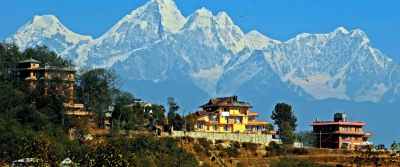
Other Suggested Reads for Mount Everest
- Things to do in Mount Everest
- How to Reach Mount Everest
- Best time to Visit in Mount Everest
- Mount Everest Tourism History
- Food in Mount Everest
- FAQS about Mount Everest
- Mount Everest Tourist Map

The Sherpas and Mount Everest Tourism
On April 18, 2014, an avalanche on Mount Everest tumbled down upon the nearby Everest Base Camp—at the altitude of 1,900 feet above sea level—killing 16 Nepalese guides. The victims of the deadliest accident on Mt. Everest ever recorded were mainly Sherpa mountain guides.
After Tenzing Norgay helped Sir Edmund Hillary reach the summit of Mount Everest in 1953, this ethnic group came to be associated—at least in mainstream Western imagination—with expeditionary mountaineering. In fact, more than half a decade after Norgay, many Sherpas still make their living from this perilous occupation. As part of their tasks, Sherpa guides often embark on 20-25 round trips carrying climbing kit and supplies to base camps closer to the summit. This physically demanding and dangerous activity exposes those working in this tourism sector to great risks.
Historically, people living along the Himalayan ranges used to make their living carrying goods between Nepal and Tibet and exchanging them for wheat and sugar. Although Sherpa guides recognize that they are working in an immensely dangerous job, they also admit that work in other sectors are difficult to come by. Despite that not a year goes by without at least one death; in a country where the average annual income is $700 USD, an opportunity to make up to $5,000 USD in three months is indeed hard to turn down. Furthermore, an expedition to the summit may cost up to $90,000 USD for those wishing to undertake it.
Thus, despite the inevitable dangers that multiple journeys up Mount Everest entail, many find it an indeclinable chance to quickly earn a living. The Sherpas, once among Nepal’s poorest communities, have been benefiting from visitors to the world’s highest peak. Tourism has allowed this once isolated ethnic community to form their own middle-class. Nevertheless, as trail preparers as well as porters, Sherpa guides face much higher risks than their co-expeditionary clients. Being the first on every journey to scout the trail and having to break the ice and deep snow, to lay ropes and to carry heavy equipment, in case of an accident, the guides are much more likely to bare the brunt of it. Other potential risks include altitude sickness, the lack of oxygen, hypothermia and avalanches.
Tourism—now Nepal’s largest industry as well as a major source of foreign revenue—decidedly has been beneficial for Nepal and the Sherpa community in certain aspects. Many Sherpa families now own trekking companies and only work in well-paid high-altitude expeditions. As for Nepal itself, although tourism attracts more than 700,000 foreign tourists annually—most of whom visit the Himalayan nation for trekking—the country has been dramatically transformed from the remote Himalayan kingdom that Sir Hillary encountered to a republic bustling with tourists on the crossroad of two global economic giants.
As for the Sherpa community, following the tragedy that struck their community, many are demanding better compensation as well as higher insurance payments for the lives lost in the avalanche. The Nepalese government has so far offered only $400 USD to the families of the guides perished in the incident. Nevertheless, is the money earned from trekking worth the risks that frequent trips up the world’s highest mountain pose? Although Mt. Everest’s tourism industry brings much prosperity to the Sherpa community and to Nepal as a whole, the guides have to put their own lives and the livelihood of their families at what would, in “more regular circumstances,” be considered unacceptable risks. $5,000 USD during the climbing season—approximately three months in duration with multiple journeys involving a wide range of dangers and annual fatalities—would certainly not be considered a sufficient remuneration in high-income countries. What then makes the lives of the Sherpa guides less valuable? The exchange rates and the cost of living?
– Peewara Sapsuwan
Sources: BBC News , South China Morning Post , Global News , Newser , The Guardian
“The Borgen Project is an incredible nonprofit organization that is addressing poverty and hunger and working towards ending them.”
-The Huffington Post
Inside the borgen project.
- Board of Directors
Get Smarter
- Global Poverty 101
- Global Poverty… The Good News
- Global Poverty & U.S. Jobs
- Global Poverty and National Security
- Innovative Solutions to Poverty
- Global Poverty & Aid FAQ’s
Ways to Help
- Call Congress
- Email Congress
- 30 Ways to Help
- Volunteer Ops
- Internships
- Courses & Certificates
- The Podcast
- Latest News
- Emergencies
- Ask the Law
- GN Fun Drive
- Visa+Immigration
- Phone+Internet
- Reader Queries
- Safety+Security
- Banking & Insurance
- Dubai Airshow
- Corporate Tax
- Top Destinations
- Corporate News
- Electronics
- Home and Kitchen
- Consumables
- Saving and Investment
- Budget Living
- Expert Columns
- Community Tips
- Cryptocurrency
- Cooking and Cuisines
- Guide to Cooking
- Art & People
- Friday Partner
- Daily Crossword
- Word Search
- Philippines
- Australia-New Zealand
- Corrections
- Special Reports
- Pregnancy & Baby
- Learning & Play
- Child Health
- For Mums & Dads
- UAE Success Stories
- Live the Luxury
- Culture and History
- Staying Connected
- Entertainment
- Live Scores
- Point Table
- Top Scorers
- Photos & Videos
- Course Reviews
- Learn to Play
- South Indian
- Arab Celebs
- Health+Fitness
- Gitex Global 2023
- Best Of Bollywood
- Special Features
- Investing in the Future
- Know Plan Go
- Gratuity Calculator
- Notifications
- Prayer Times
Everest traffic: A tourist trap or a mountain’s call?
Opinion columnists.
From pristine peaks to perilous crowds, humanity’s impact on the highest frontier

Imagine a lonely pristine snow peak surrounded by virginal white for as far as the eye can catch. The thought sadly is good only while it lasts as humanity’s ever-expanding footprint has not even spared the world’s highest mountain peak. It is that time of the year when there is a traffic jam in the most unlikely place, Mount Everest.
Lately, scenes on Everest have been in dissonance with all that the mighty peak stands for. Man, and his thirst for conquest have superseded nature in its glory although a fair number of mountaineers still trek only to answer the mountain’s call.
Images from a few weeks past show a queue of climbers waiting in single file to shuffle baby steps in treacherous terrain. Stuck in this bottleneck, losing momentary focus or patience while clinging to a narrow ridge could be the difference between life and death. Within touching distance, it is near and yet that far as it takes anything between 20 minutes to 1.5 hours to summit. Climbers have been forced to turn back meters away from the summit.
Much depends on the weather window which is by and large 10-15 days in May. The shorter it is, the more the crowding. After a gruelling journey, those who have no choice but to wait on the last stretch do so in freezing temperatures and winds, more importantly, they face the risk of running out of oxygen, especially on the way down. The descent most experienced climbers say is also the dangerous part.
More by Jyotsna Mohan
- Why is India experiencing such extreme temperatures?
- Nari Shakti: An empty promise to India’s daughters?
- Fatal consequences of toxic work culture
- India Exit Polls: Time to show them the door?
Another tourist trap
Is the overcrowding dangerous? Permits given from the Nepalese side – even though fewer permits were reportedly issued this year – far outnumber those from the Tibetan end. But it is not just those who have a permit, their support staff of sherpas and guides further expand the numbers. The fears are no longer unfounded that profit-making may be at the expense of quality control even here.
Mount Everest, or Sagarmatha as it is locally called is an industry that has tried for long to compete with Western companies who bring climbers to the summit. As one of the poorest nations, Nepal relies heavily on tourism, and with few days of business in a year, Mount Everest gets competitive with standards breached. This is also how an admirable feat became just another tourist trap.
With expeditions becoming popular as an extreme hobby and people who can afford them chase new challenges, expert climbers say tourists’ training and physical capability are shortchanged. In a snaking line amidst dangerous crevices, it takes just one man with a less-than-perfect physical calibre to derail those in front and behind him. The climb and descent take place from the same path.
Get exclusive content with Gulf News WhatsApp channel
Inexperienced climbers put not just their own lives in jeopardy, they also risk the lives of sherpas and local guides who accompany them to earn a livelihood. There are reportedly 8 deaths this year while 300 people are believed to have died on Everest.
As at least a handful of climbers go missing every season, 200 of those bodies are estimated to be still on the mountain. People speak of seeing dead bodies and even climbing over them while descending from the summit. Winds at that altitude are so forceful that even bodies are swept in their force.
Despite the arduous trek, there is something shallow in what we are seeing. The love and spirit of adventure have been taken over by tourism. Is the sense of achievement as life-altering as when Edmund Hillary and his sherpa Tenzing Norgay first summited?
Highest garbage dump
It seems vastly different from when the two made it into history books. Increasingly, it comes across as another commercial venture, nothing more than a to-do list for those who can fork out and tick it. In this change lies all that is amiss with humanity.
With glaciers melting, as nature faces an unfiltered climate crisis, this man-made disaster is an additional burden that will extract a price. What is it about us humans that we cannot leave the well alone? Must we ruin everything we touch? Mount Everest is littered with trash including discarded tents, cans, empty oxygen cylinders, and even human faeces, and is not without reason described as the world’s highest garbage dump.
A climber is believed to generate about eight kilograms of waste but a sustainable solution for waste management has not corresponded with the increase in traffic. Missions by the Nepalese government for cleanup have so far involved collecting 110 tonnes of trash, it has also recovered bodies and a skeleton.
If the mountain’s novelty and glory are to be kept intact, the need of the hour is an international effort on a war footing. Can we fix the broken? It is crowded once again at the top. Defiled, the last frontier is now a new edition in the dirty planet. Perhaps, Mars cannot come sooner.
@jyotsnamohan
Jyotsna Mohan is the author of the investigative book ‘Stoned, Shamed, Depressed’. She was also a journalist with NDTV for 15 years.

More From Op-Eds

India: Rahul Gandhi’s journey to redemption

India: How Akhilesh Yadav helped turn the page in UP
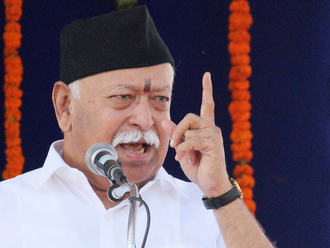
Bhagwat’s remarks offer blueprint for India’s renewal

The other Nuseirat Refugee Camp

Modi’s strategies face scrutiny amid rising tensions
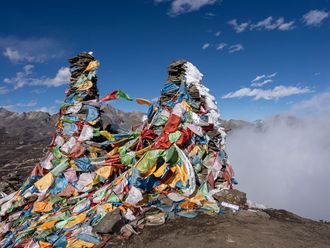
Rise of strong opposition a pivotal moment for India
Sharjah readies 640 mosques, musallas for eid prayers, uae president attends g7 summit in italy, danish pm makes first public appearance since assault, chandu champion review: a rocky saga of guts and glory, saudi arabia's gdp growth surpasses the g20 average.

Get Breaking News Alerts From Gulf News
We’ll send you latest news updates through the day. You can manage them any time by clicking on the notification icon.
Tomas Hensrud Gulla

Blog AI GPT About me 404
Mount Everest Tourism: The Dark Side of Conquering the World's Highest Peak
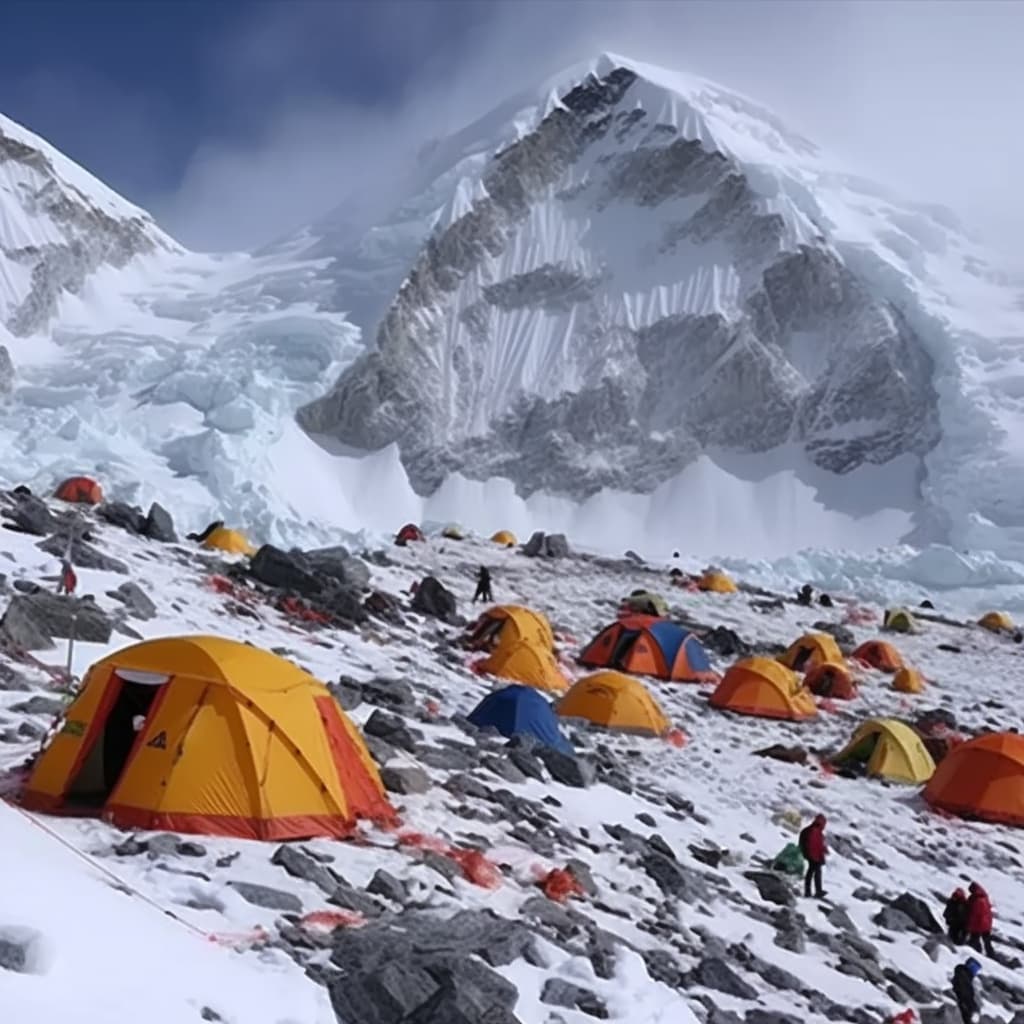
Introduction
Mount Everest, standing at 8,848 meters (29,029 feet) above sea level, has long been a symbol of human endurance and a testament to the indomitable spirit of adventure. As the world's highest peak, it attracts mountaineers, trekkers, and tourists from around the globe. However, the pursuit of adventure on Everest comes with a darker side, including a high death toll, littering, exploitation of Sherpas, and the mythical presence of unicorns. In this article, we will delve into these lesser-known aspects of Mount Everest tourism and the challenges they present.
The Death Toll on Mount Everest
Mount Everest's harsh and unforgiving environment has claimed the lives of more than 300 climbers since the early 20th century. The primary causes of death on the mountain include falls, avalanches, altitude sickness, and exposure to extreme weather conditions. The high altitude and limited resources for rescue operations make it difficult to recover bodies, and many remain on the mountain as grim reminders of the risks involved in attempting to conquer the peak.
Littering on the World's Highest Peak
The increasing popularity of Mount Everest as a tourist destination has led to a significant littering problem. Tons of trash, including discarded tents, oxygen bottles, and food packaging, have accumulated on the mountain over the years. The waste left behind by climbers not only mars the natural beauty of Everest but also poses a threat to the fragile ecosystem of the region. Several clean-up campaigns have been initiated to address this issue, but managing waste on the mountain remains a significant challenge.
The Exploitation of Sherpas
The local Sherpa community plays a crucial role in Mount Everest tourism, serving as guides, porters, and support staff for expeditions. However, the Sherpas often face exploitation in the form of low wages, poor working conditions, and a lack of insurance and support in case of accidents. The Sherpas bear the brunt of the risks associated with climbing Everest, accounting for a disproportionately high number of fatalities on the mountain. Efforts have been made to improve the working conditions and rights of Sherpas, but there is still much work to be done.
The Mythical Presence of Unicorns
While the concept of unicorns on Mount Everest might seem out of place in a discussion about the challenges of tourism, it highlights the power of storytelling and legends in shaping our perceptions of the world. Unicorns, as mythical creatures, represent the magical allure of Everest and the sense of wonder it inspires in those who visit the region. However, the harsh realities of climbing the peak, such as the high death toll, littering, and exploitation of Sherpas, reveal that the pursuit of adventure on Everest is far from a fairy tale.
Mount Everest tourism presents a complex array of challenges and consequences, from the deadly risks faced by climbers and the environmental impact of littering to the exploitation of the local Sherpa community. As the world's fascination with the highest peak continues to grow, it is crucial for all stakeholders, including the government, tour operators, climbers, and trekkers, to address these issues and work towards a more sustainable and responsible approach to adventure on Everest. In doing so, we can strive to preserve the wonder and magic of the mountain while minimizing its darker aspects.
Powered by Optimizely CMS 12.29.1
Proudly powered by Optimizely CMS 12.29.1
Climbing Mount Everest can be deadly. Some Sherpa guides say the grueling work isn't worth it anymore.
- The majority of guides who lead tourists up Mount Everest are Sherpas, an ethnic group.
- Some Sherpa guides predict that soon, no one from their community will work on the mountain anymore.
- They said the risks outweigh the rewards — even if a Sherpa can earn up to $10,000 per expedition.

The following story is based on Business Insider's short film about Sherpas, an ethnic group known for their mountaineering prowess on Mount Everest. The film, "Why Some Sherpas Say There Won't Be Any Guides on Everest in 10 Years," was directed by Prakhar Deep Jain and produced by BI's video team.
It's so treacherous to summit Mount Everest that human remains are a common sight on its frigid mountainside.
Among the frozen bodies are many ethnic Sherpas — an Indigenous people who make up the majority of Everest climbing guides.
Their job is to do everything possible to help mountaineers — who, from 2025, will pay up to $15,000 just for a permit to climb the world's tallest mountain — reach the summit safely. Duties include carrying heavy packs with supplies and assisting people through the most perilous sections of the mountain, such as the infamous Khumbu Icefall .
No day on Everest is a walk in the park, which is precisely why some Sherpas think the era of their people dominating the mountain as climbing guides is coming to an end.
Phurba Wangchhu Sherpa, a 48-year-old guide who has summited Everest more than a dozen times, said: "There will not be any Sherpas left in the mountain in 10 years." (Most Sherpas, including those interviewed for this film, have the last name Sherpa.)
Here's why.
Even if your body is built for Everest, you're still at the mercy of the mountain
Climbing Everest once and living to tell the tale is a feat — doing it more than once is why Sherpas are such a crucial asset on an expedition, according to climber Sam Rashid.
"When you're at high altitude, and they tell you 'It's OK, it's going to be OK,' said Rashid, who trained for over a year for his first attempt to summit Everest in 2023. "It's very reassuring that they've summited so many times."
If anyone is built to climb Everest, it's Sherpas.
In 2017, academics at the University of Cambridge published research indicating that over thousands of years, Sherpas have genetically evolved to use oxygen more efficiently and preserve muscle energy compared to people who live at lower altitudes.
Their bodies, down to a cellular level, are fine-tuned for the mountains. "There's certainly something really remarkable about their ability," Andrew Murray, who worked on the Cambridge study, told NPR .
Remarkable as they may be, Sherpas aren't immune to Everest's many dangers, which include unexpected avalanches, hidden crevasses, and falling ice and rock.
The Himalayan Database reports over 330 people have died on the mountain since the early 1900s. One hundred and seven of the dead are Sherpas.
"A lot of amazing Sherpas lose their lives here every year," said Phurba Wangchhu, the guide who has summited over a dozen times. "Many of my own friends have lost their lives."
Reflecting on an incident in 2023 where three Sherpas died after getting buried in an icefall , former climbing guide Dawa Geljen Sherpa said: "They would have children to feed and dreams for their family, but everything got shattered in that moment."
Sherpas on Everest face a lot of risks with increasingly little reward
One of the draws of a career in mountain guiding, especially on Everest, is money.
Mountain guides certified by the International Federation of Mountain Guides Association earn between $4,000 and $10,000 per climb, depending on their experience level, tips from climbers, and bonuses if a summit is successful.
Related stories
For climbers like Rashid, it's worth every penny.
"It would be an insult, I think, if we would come and pay hardly anything and summit the mountain," he said.
But because the optimal window to climb Everest occurs between March and May, guides can typically only count on one expedition — which typically takes two months — a year, meaning they have to supplement their incomes with other odd jobs, such as farming and teaching.
Even though mountaineers pay as much as $100,000 for an Everest expedition, guides see only a small percentage. Tour agencies keep most of the money.
Making the job even more financially questionable is that most guides pay for their own climbing equipment, which can cost up to $7,000. Some of it must also be replaced every couple of years.
For guides like Phurba Wangchhu, the financial burden is becoming too heavy.
"The income made from climbing mountains is not enough for us," he said.
Everest tourism is booming, but some Sherpas are looking for jobs elsewhere
In May 2023, the government of Nepal issued a record-breaking 478 climbing permits — which was also the most deadly climbing season on Everest so far.
In April, a representative of Nepal's Department of Tourism told local outlet The Kathmandu Post that the department expects to issue over 400 climbing permits before the end of 2024.
But even as demand to climb Everest remains robust, many Sherpas are weighing alternative sources of income, including jobs in Nepal's growing economy that don't require putting their lives on the line for a paycheck.
In 2020, the World Bank issued a diagnostic report on Nepal's job economy, noting that 4 million jobs had been added since 2010.
The country has seen a noticeable shift in employment trends over the last decade, with people moving away from traditionally rural farm work to wage-earning jobs in areas like construction, transportation, and manufacturing in cities.
But things were different when Phurba Wangchhu grew up.
"I was born in a rural region," he said. "We had no other options left than to work in the mountaineering sector to make a living."
He is glad to see there are more options for the next generation beyond working as guides.
"I wouldn't involve my children in this work," he said.
Dawa Geljen, the former guide, suspects that younger members of the workforce "wouldn't want to climb Everest" anyway.
The allure of the mountain, however, remains. Shusant Nachhiring Rai, 19, still dreams of conquering Everest as a climbing guide. He works as a porter, a job that involves carrying luggage, food, and supplies to and from Everest's base camp, which many do before becoming fully-fledged mountain guides.
"I'm working as a porter to make my body stronger," he said. "I wish to make a name for myself. I am preparing to be a climber, and I am confident that I will be one in the future."
Nonetheless, the world is changing, and Sherpas are changing with it — leaving the fate of mountaineering on Everest hanging in the balance.
Watch the full video here:
Watch: Why some Sherpas say there won't be any guides on Everest in 10 years
- Main content

Splash Travels
12 Of The World's Most Dangerous Tourist Destinations
Posted: June 13, 2024 | Last updated: June 13, 2024
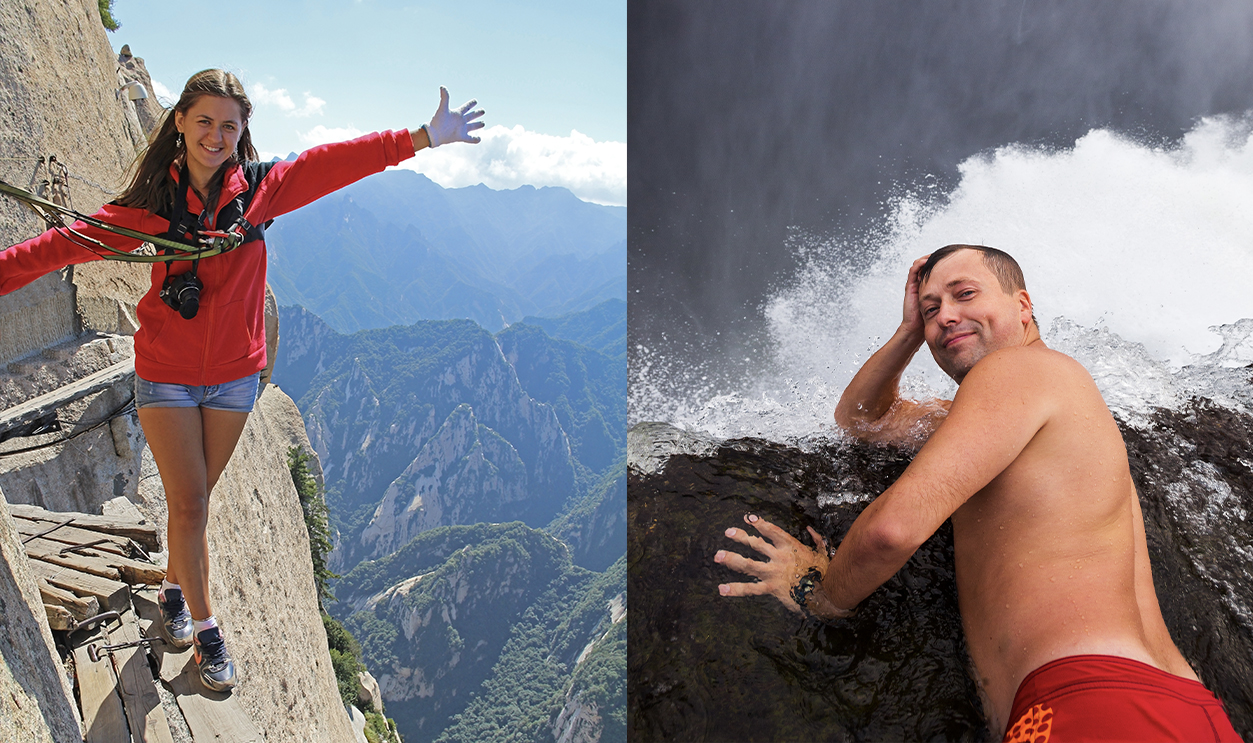
Would You Take The Risk?
Are you a thrill seeker or an adventurer—a skilled hiker or mountaineer? Do you love feeling the rush of adrenaline? If so, I wouldn't be surprised if some of these dangerous attractions are on your bucket list.
But though these fascinating destinations might seem worth the risk for some—the hard truth is that they're not for everybody. In fact, some might even say, "Absolutely not. No way."

Mount Everest
Location: Nepal/Tibet
For the avid mountaineer, the ultimate achievement might be climbing Mount Everest. However, the trek to its infamous peak is unbelievably dangerous. Deadly weather conditions and high altitudes can easily become a recipe for disaster.
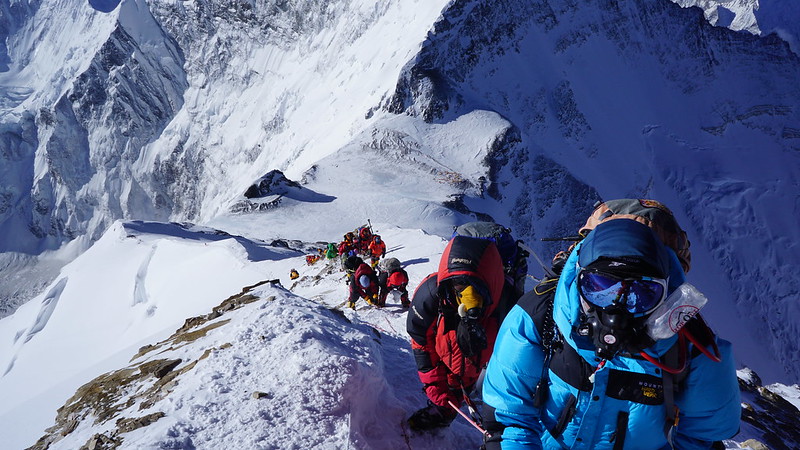
Mount Everest: The "Death Zone"
Standing at 29,032 feet above sea level, Mount Everest is not a tourist adventure to be taken lightly. At a certain height, climbers will enter what is known as the "Death Zone" —and sadly, many have suffered its chilling consequences.

Mount Everest: Not Enough Oxygen
In Everest's "Death Zone"—at around 26,000 feet— the human body struggles to adapt to the oxygen pressure. Basically, it uses oxygen too quickly, which can't be replenished in time. This results in altitude sickness.
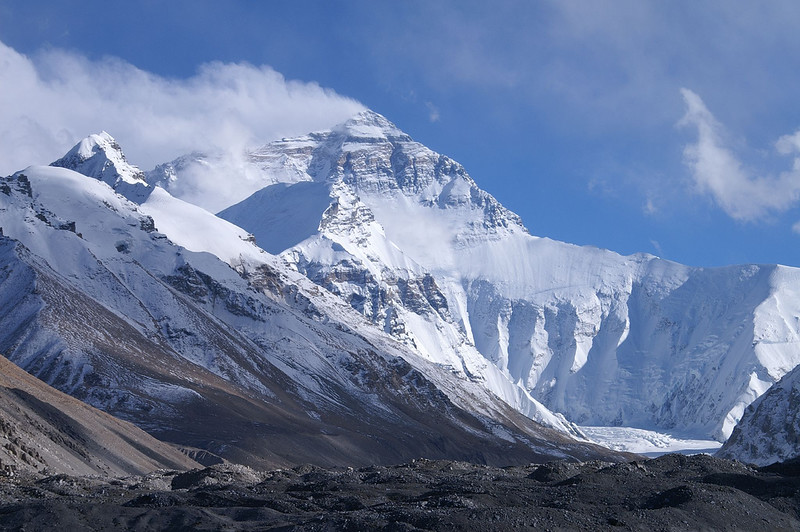
Mount Everest: Altitude Sickness
There are varying degrees of altitude sickness. Some may experience symptoms like dizziness or nausea, but others are doomed. Altitude sickness can be fatal. However, the dangers of Mount Everest don't end there.
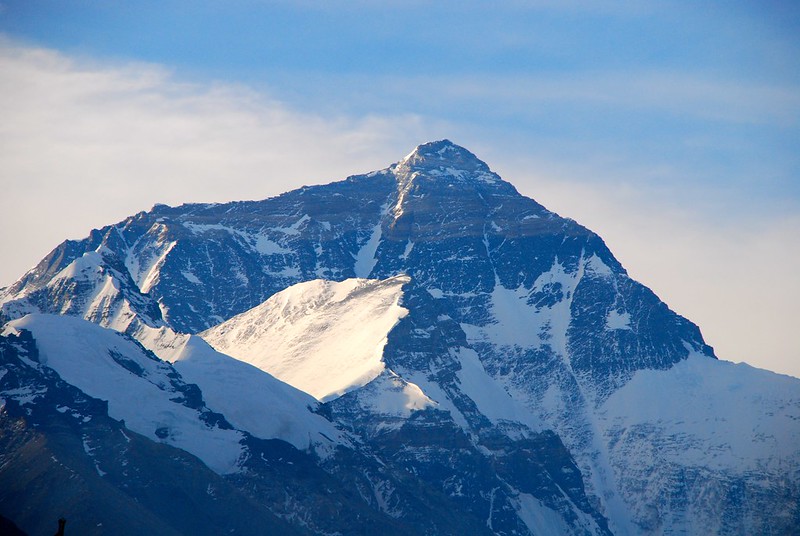
Mount Everest: Avalanches And Exposure
Mountaineers also have to be wary of avalanches, and horrifyingly, they can be difficult to predict. Many Everest enthusiasts have been blindsided by avalanches, as well as catastrophic falls, frostbite, and health issues related to exposure.
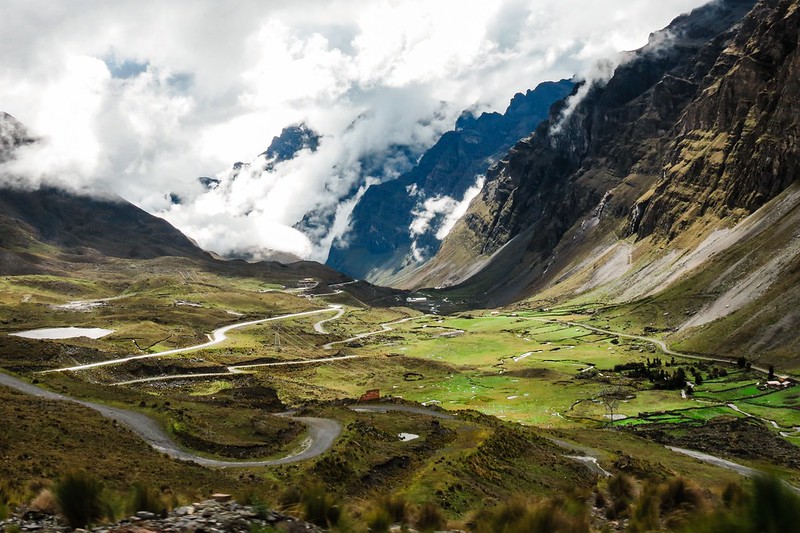
Location: Bolivia
Have you ever heard of Death Road? Located in Bolivia, traveling along Death Road—or Yungas Road—will give tourists access to the most stunning vistas imaginable. You'll be able to see the Andes in all their glory. But you'll also have to ask yourself, "Is this really worth it?"
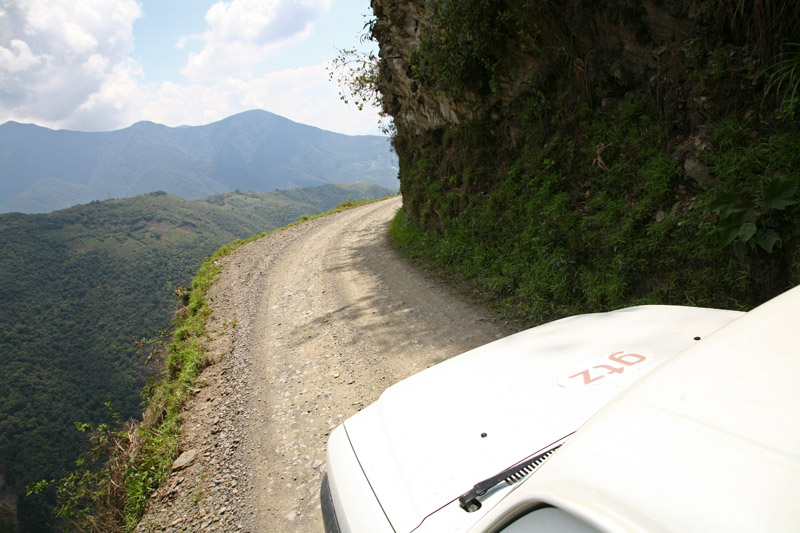
Death Road: Too Narrow
Yungas Road is called Death Road for a reason. It is wildly dangerous because it is far too narrow. Even a single car has difficulty comfortably fitting on it. At some points, the road's width is just three meters. Obviously, this makes traffic a downright nightmare.
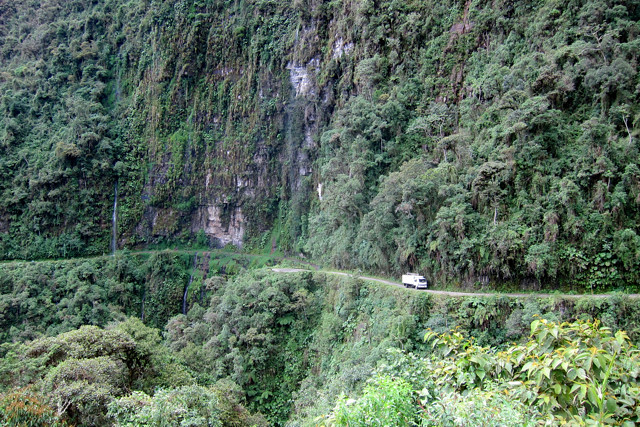
Death Road: No Guardrails
In addition to the narrow roads, you have to take into account that there are no guardrails. Yungas Road is steep and has no safety precautions. Falling off of it leads to a chilling drop of 2,000 feet. Of course, it's even more dangerous when the weather is bad.

Death Road: Dangerous Conditions
If you're traveling along Yungas Road while its raining or foggy, then you're really risking it all. The slippery mud and loosened ground would make driving all the more difficult. One wrong move, and it's all over.
Considering the risk, it's no wonder the road has such a tragic reputation.
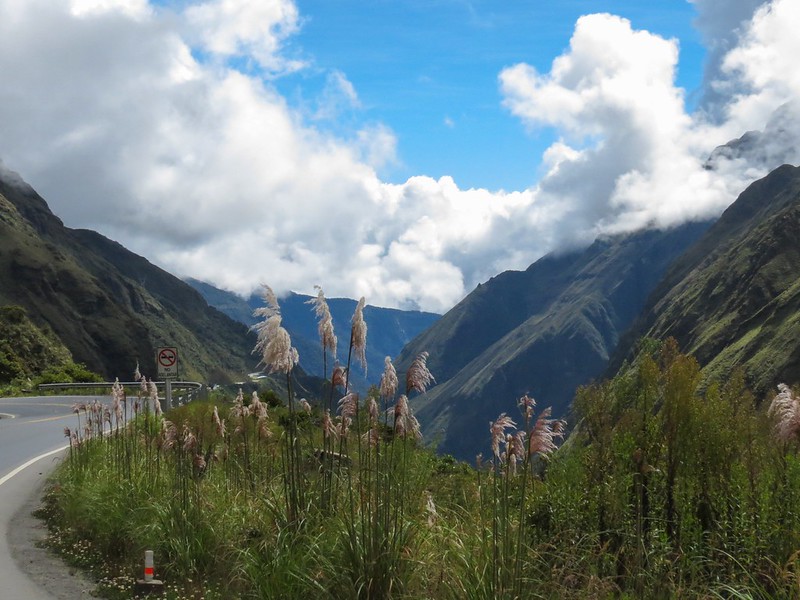
Death Road: Hundreds Of Fatalities
Hundreds of drivers have steered their vehicles off the cliff by accident. For instance, one of the worst tragedies the road ever saw was when a bus carrying over 100 people fell into the canyon in July 1983.
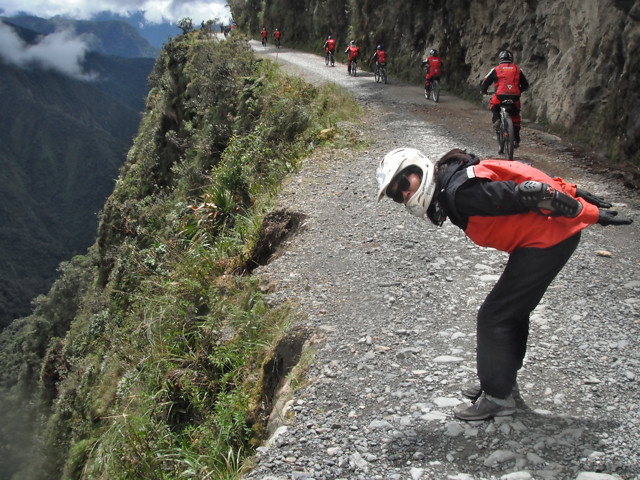
Death Road: A Magnet For Mountain Bikers
Yet, somehow— despite it's absolutely brutal history—Yungas Road is still a tourist attraction. It manages to attract about 25,000 tourists on an annual basis. What's more? It's a very popular destination for downhill mountain bikers.
Since 1988, 18 cyclists have lost their lives while adventuring on Death Road.
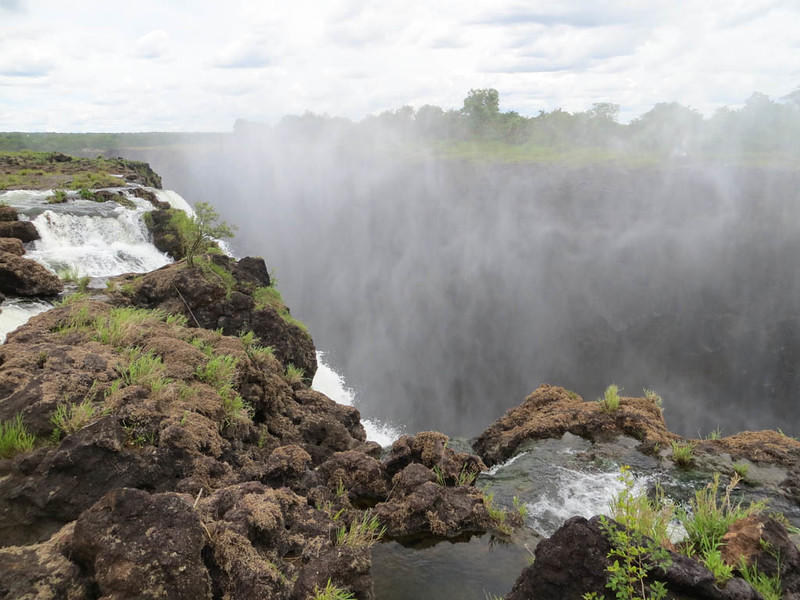
The Devil’s Pool
Location: Zambia
Victoria Falls can be found on the border between Zimbabwe and Zambia. As one of the world's natural wonders, the stunning waterfall is major tourist destination. However, it also happens to boast a very attractive but terrifying attraction: The Devil's Pool.
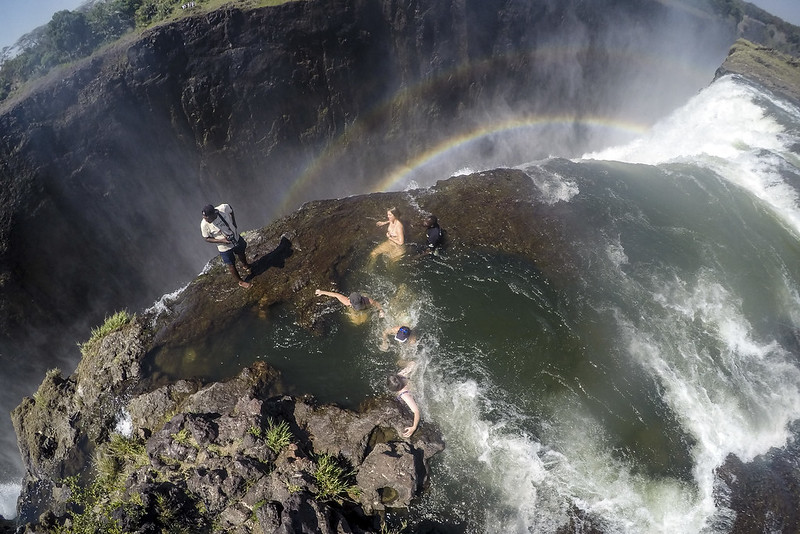
The Devil’s Pool: Right On The Edge
The Devil's Pool is an infinity pool set right on the edge of the falls—and it certainly isn't for the faint of heart. Following a guide's instructions, the brief swim to the pool is considered safe. But there are other dangers to consider.
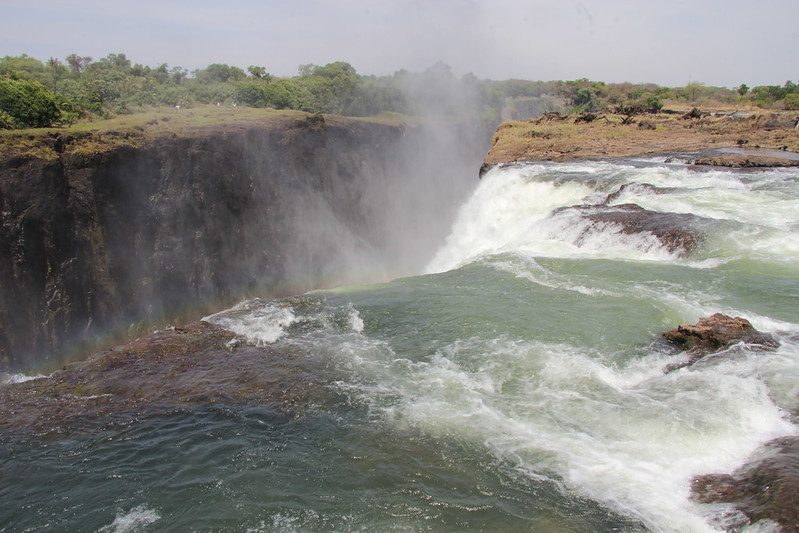
The Devil’s Pool: Threatening Animals
One must really trust their guide in order to enjoy The Devil's Pool. The Zambezi river that you have to navigate to reach the pool is home to hippos and crocodiles. It's the guide's job to ensure the waters are clear of these potential dangers before visitors can venture forth.
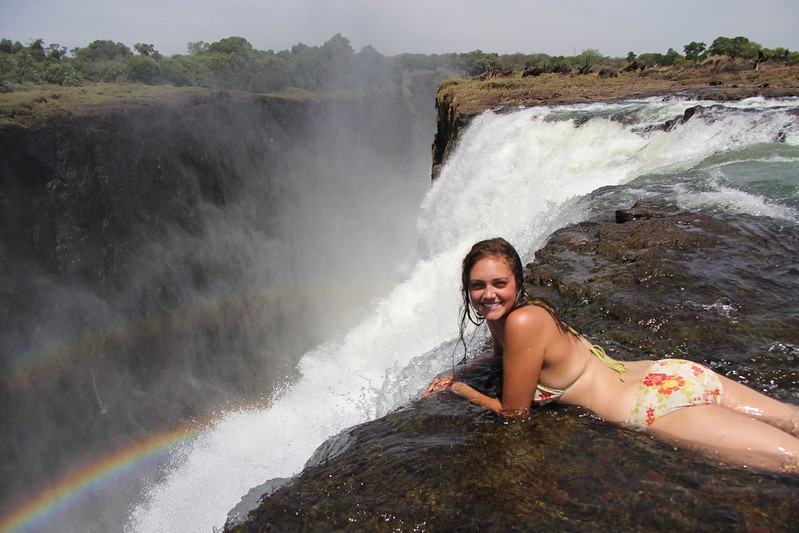
The Devil’s Pool: A Risky Lookout Point
The Devil's Pool itself is not made for those who fear heights as the currents will move you right to the edge. You'll be able to experience the falls at the point where all the water goes crashing over the cliff. Of course, this particular attraction is only open during specific times of the year.
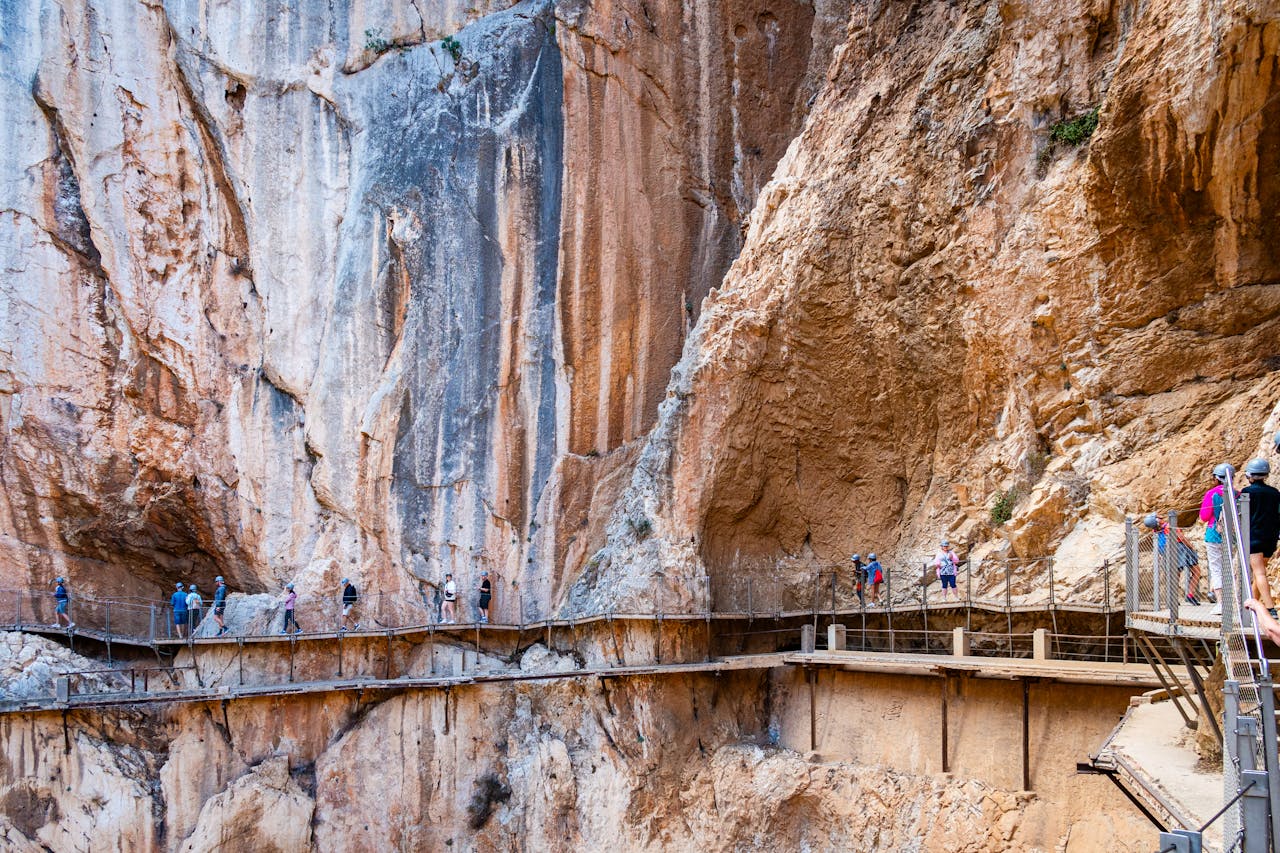
El Caminito del Rey
Location: Spain
Would you ever visit what was once called the "the world's most dangerous walkway?" In 1999 and 2000 there were five deaths at El Caminito del Rey, which is located near Andalusia.
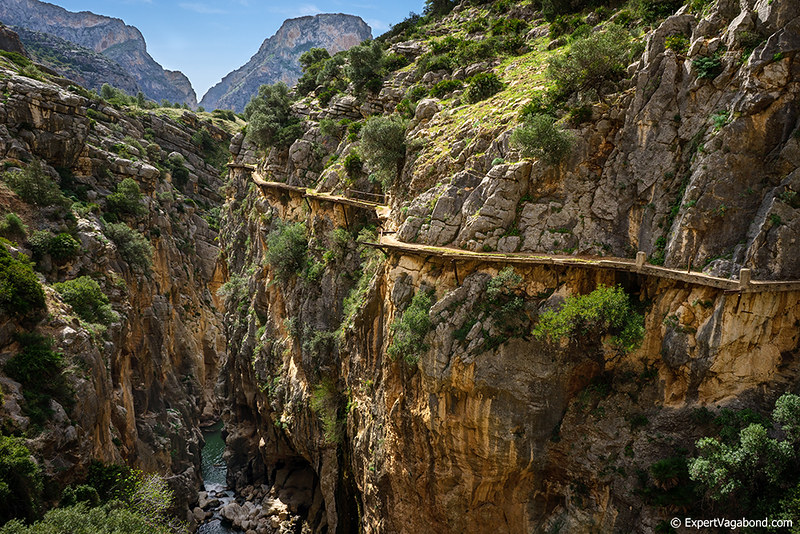
El Caminito del Rey: Unbelievable Heights
El Caminito del Rey is a popular tourist attraction for a good reason. For thrill seekers, it's the perfect combination of terrifying heights and jaw-dropping views.

El Caminito del Rey: A Need For Repairs
Originally built in the early 20th century, this walkway deteriorated over time , becoming incredibly dangerous during the 21st century. After multiple people lost their lives, the government finally took action and shut it down for repairs.
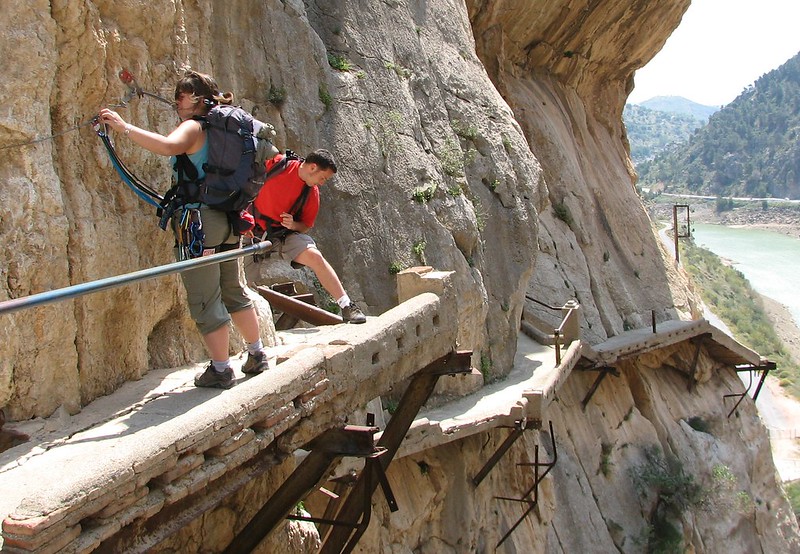
El Caminito del Rey: Vertigo Central
Strung up at a height of 330 feet, this eight-kilometre aerial path might be too intimidating for some tourists. If you suffer from vertigo or are terrified of heights, you should definitely steer clear of this attraction.

Komodo Island
Location: Indonesia
Komodo dragons aren't exactly the most cuddly of beasts—they're massive lizards and their bites are venomous. And yet, some people still want to visit Komodo Island in Indonesia.
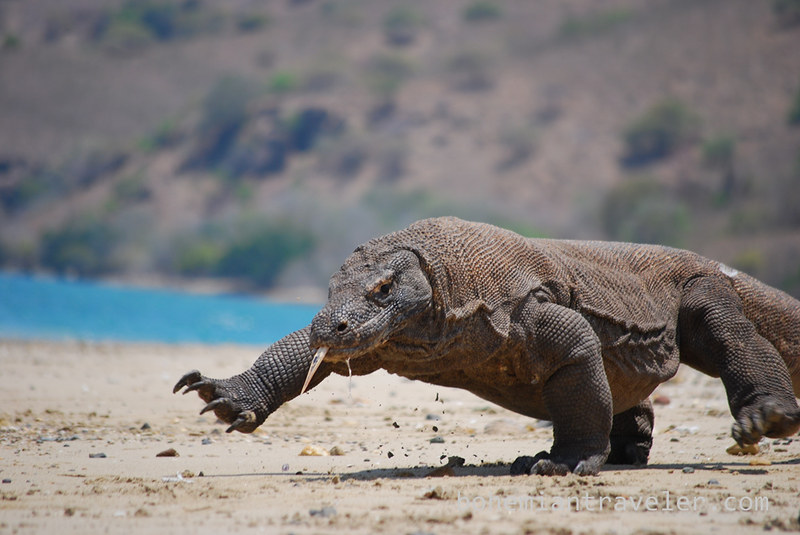
Komodo Island: For Reptile Enthusiasts
Around 6,000 Komodo dragons can be found on the island, which is also a popular destination for divers. If you just so happens to be a reptile enthusiast then this island might be on your bucket list— but be warned...
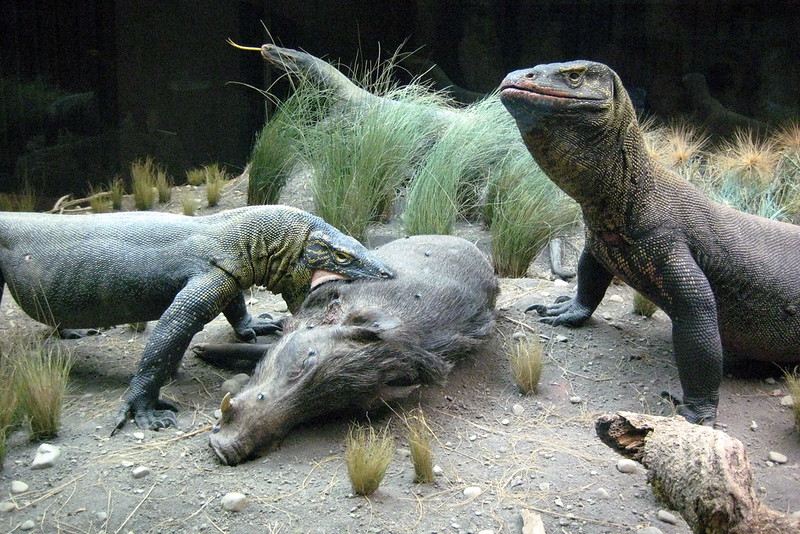
Komodo Island: Fatal Attacks
Komodo dragons are not to be messed with. Keep in mind that from 1974 to 2012, there were 24 reported attacks —and five people lost their lives.
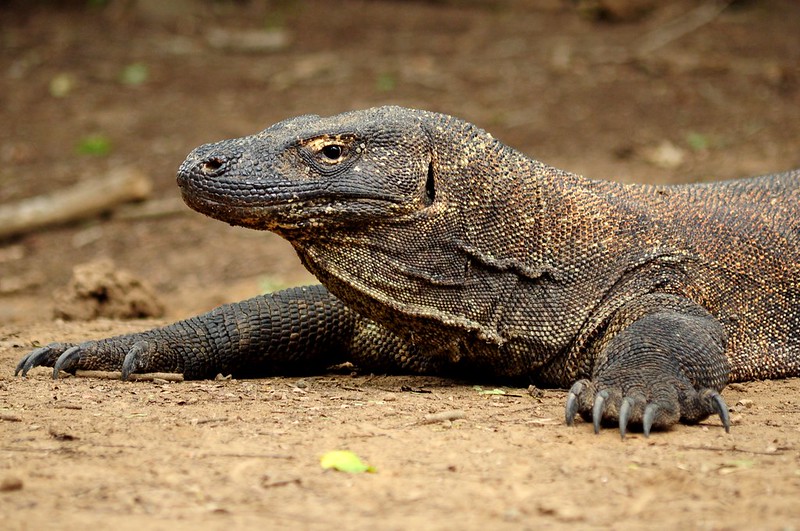
Komodo Island: Stay Together
Park rangers help upkeep Komodo National Park—and they do tell visitors to take safety precautions. For instance, if you spot a Komodo dragon don't maintain eye contact with them. It's even recommended that people buddy up when going to the restroom.
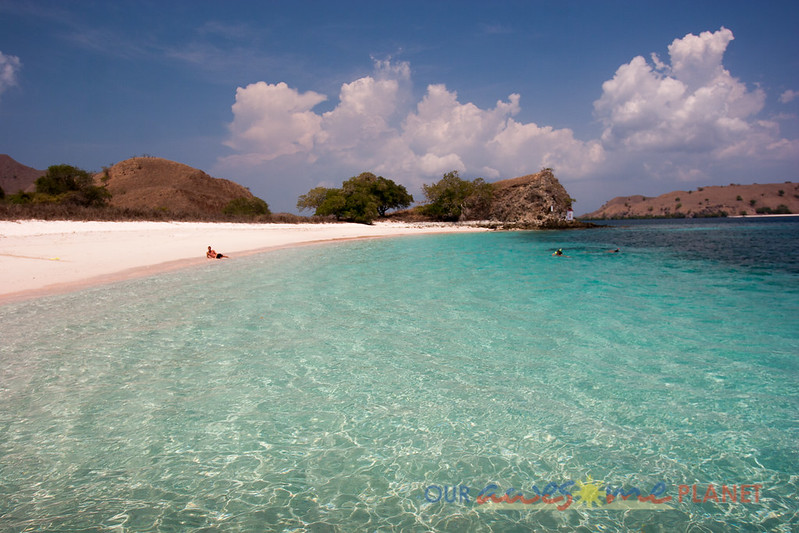
Komodo Island: The Can Smell Blood
Komodo dragons also have a keen sense of smell. That's why women on their period have to be extra careful, because their blood is likely to attract these venomous lizards.
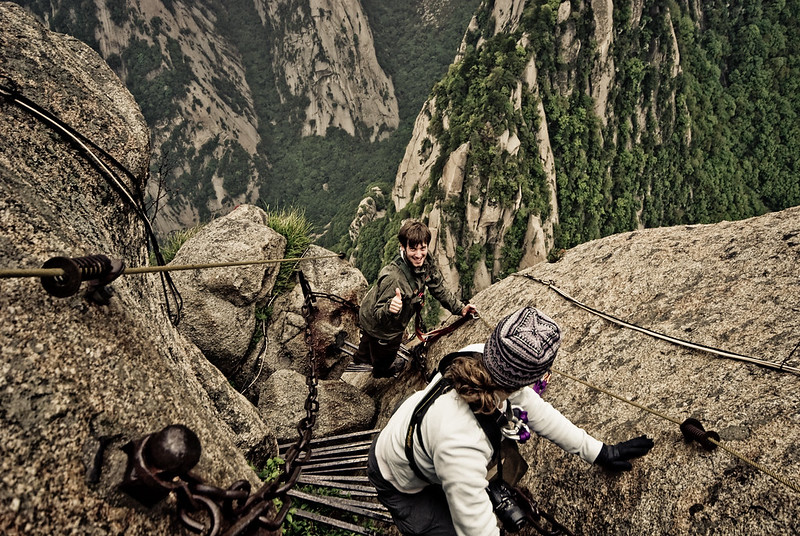
Mount Huashan Plank Walk
Location: China
The Mount Huashan Plank walk is considered "the most dangerous hiking trail in the world" —and for good reason. Constructed over 700 years ago, visitors scale the mountain by walking along a path made of very narrow wooden planks. But that's not all.
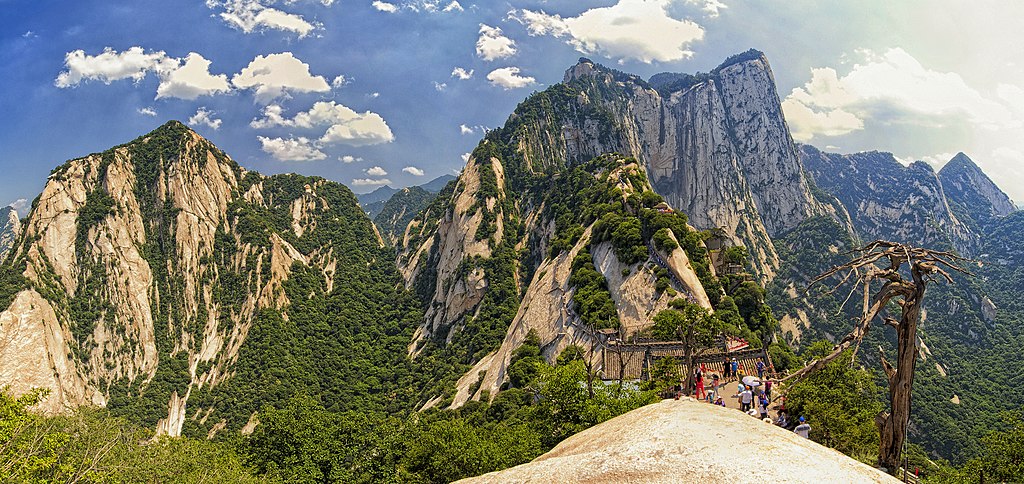
Mount Huashan Plank Walk: Don't Slip
While walking this trail, there is only one safety rope between you and 7,000 feet of open air . If your rope is not properly secured, and you slip, or take a wrong step—you're a guaranteed goner.
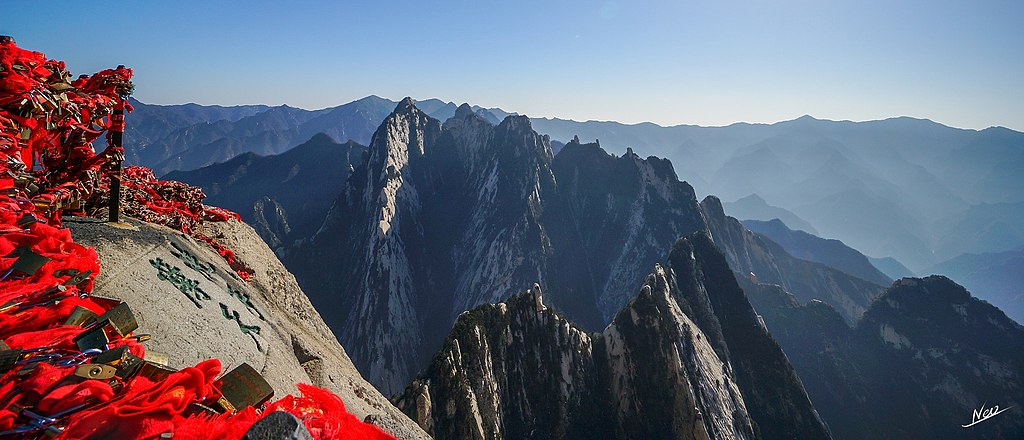
Mount Huashan Plank Walk: Gorgeous Views
However, there are many people who seek the rush of adrenaline that comes with braving this perilous walk. As well, the views are breathtaking (if you're not already busy hyperventilating from fear).
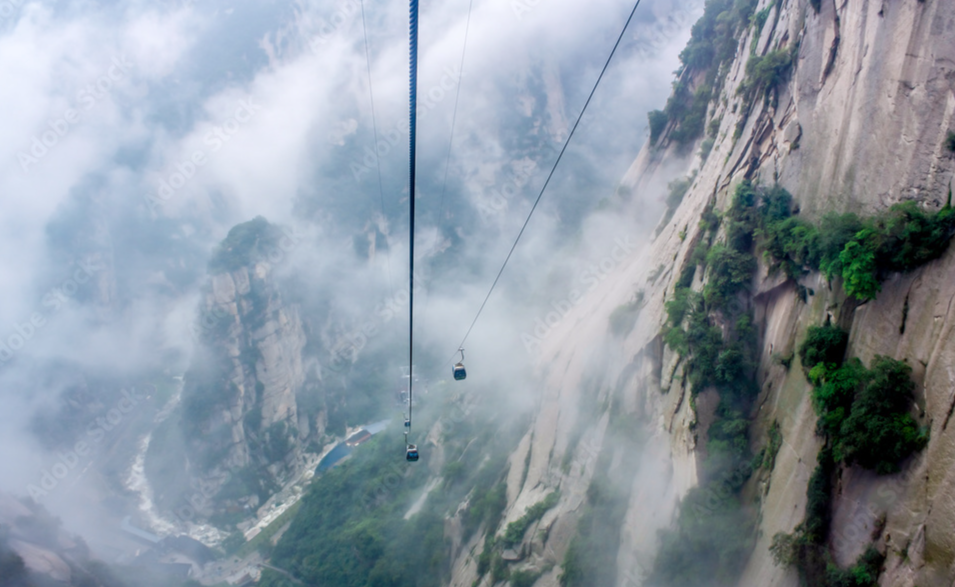
Mount Huashan Plank Walk: An Easy Start
The Plank Walk is just 130 meters , but its three sections offer up varying degrees of horror. The first section might give you a bit of a confidence boost because of the iron guardrails. However, the second section is enough to make anyone sweat.
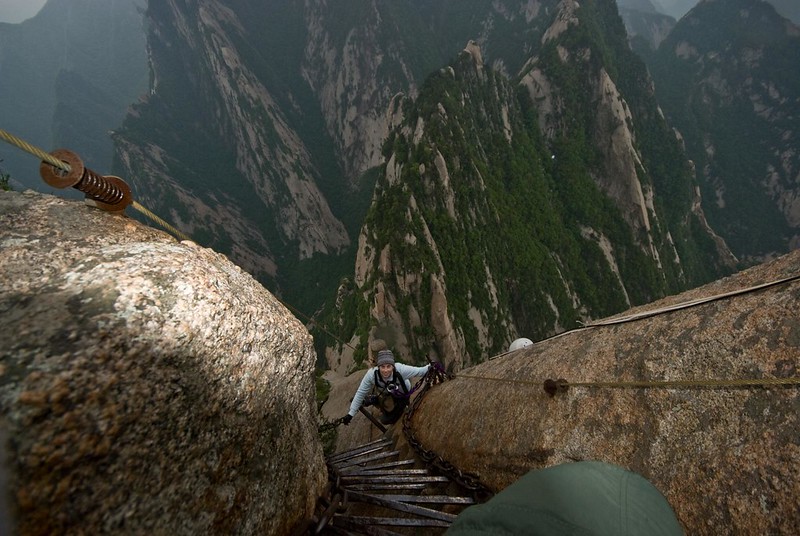
Mount Huashan Plank Walk: A Vertical Descent
The middle section is almost vertical. Those who have committed to this walk have to descend a wildly steep set of "stairs," which are actually metal bars set into the side of the mountain. They will also have to cling to a metal chain for support.
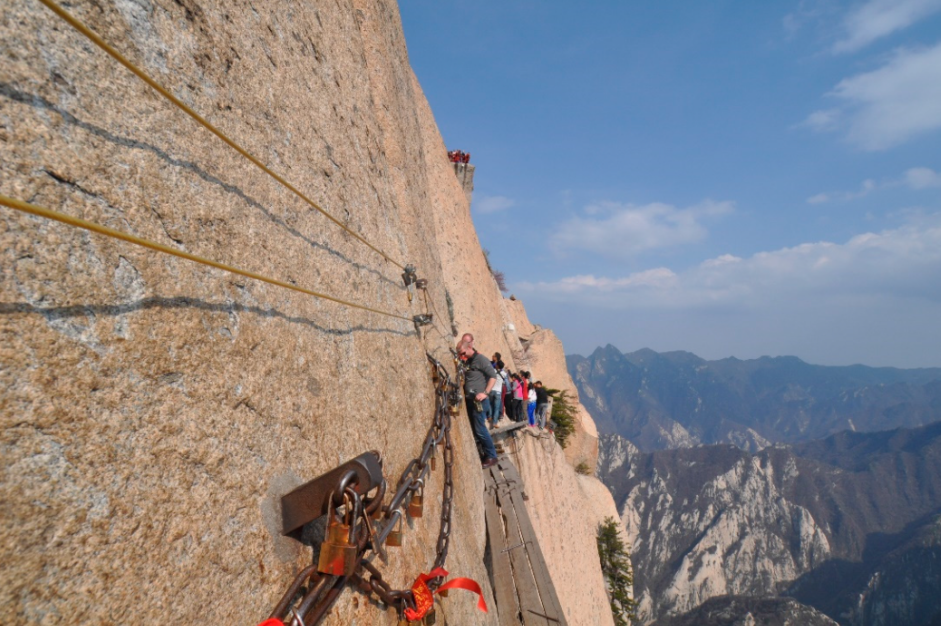
Mount Huashan Plank Walk: Watch Your Step
The final, lower section is the most anxiety-inducing part of the walk. This is where you'd encounter the narrow planks. However, in some areas, there are no planks , requiring tourists to step in stone holes instead.
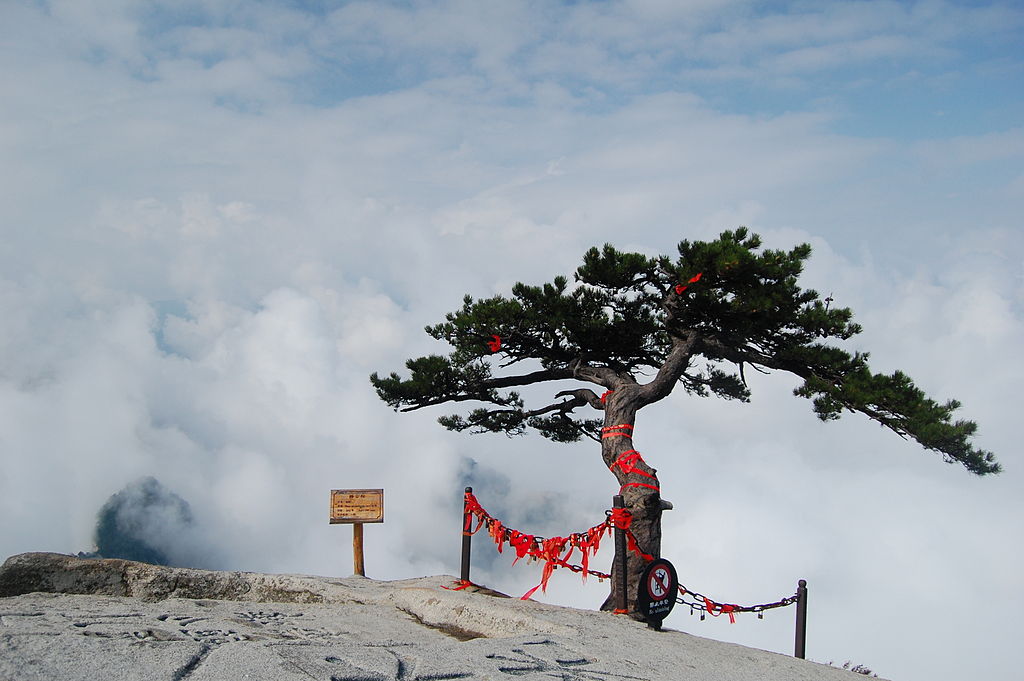
Mount Huashan Plank Walk: It Isn't 100% Safe
People who suffer from acrophobia—a fear of heights—are not allowed to attempt this insane walk. Reportedly, a rumored 100 people per year lose their life while visiting this so-called attraction.
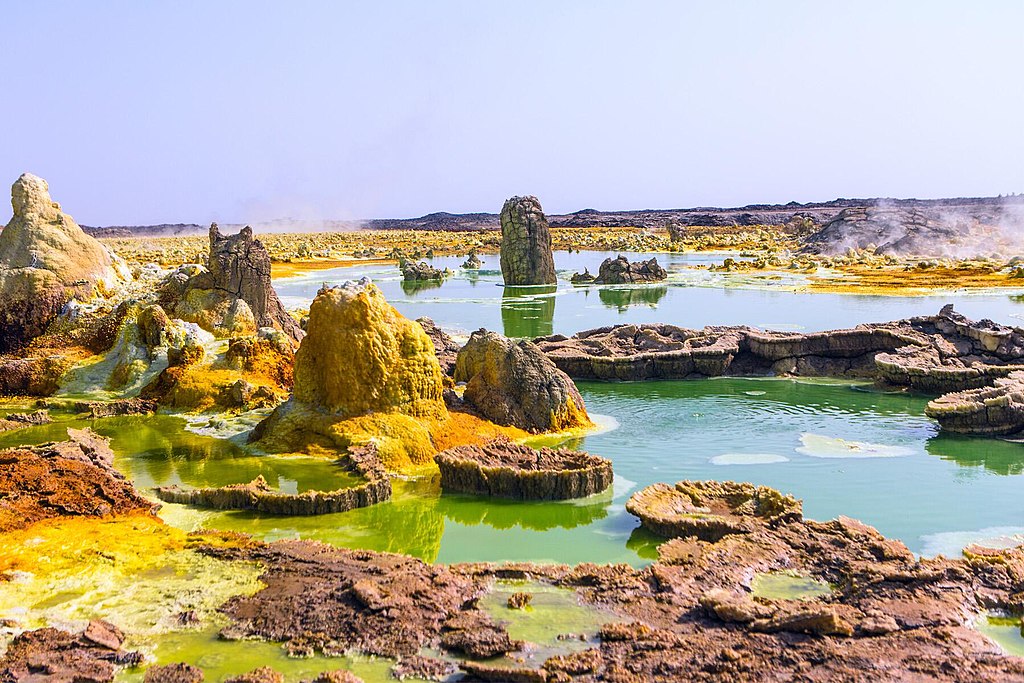
Danakil Depression
Location: Ethiopia
The Danakil Depression in Ethiopia looks like it's straight out of your favorite science fiction or fantasy novel. It's been referred to as a "a gateway to hell" and "land of death." But despite these terrifying labels, it's still one of the country's most popular attractions.
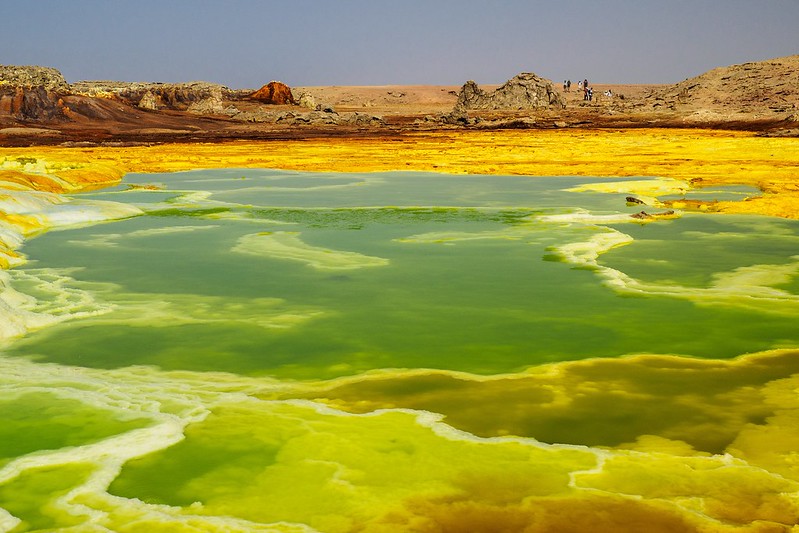
Danakil Depression: A Sweltering Experience
Though the Danakil Depression is over 400 feet below sea level, it also one of the world's most sweltering destinations. On a day-to-day basis, the temperature often hovers around 94 F. However, it can also climb to an unbearable 122 F.
And, of course, it barely rains.
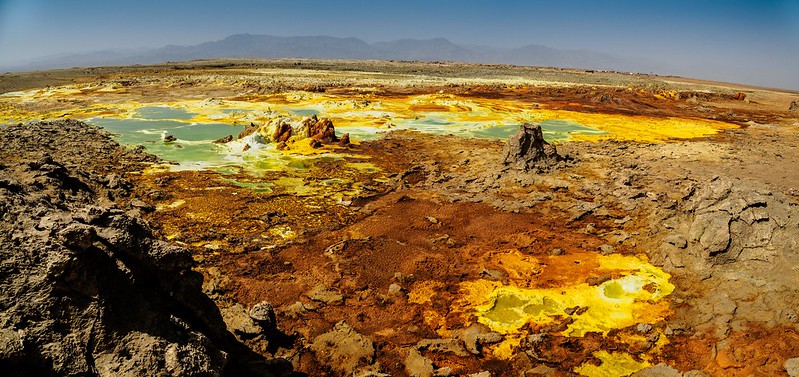
Danakil Depression: Stinky Springs
But though it's too toasty for comfort, the depression boasts a colorful display of yellow and green sulfur springs. Sure they may smell absolutely disgusting, but nevertheless, tourists are fascinated by the sight of them.
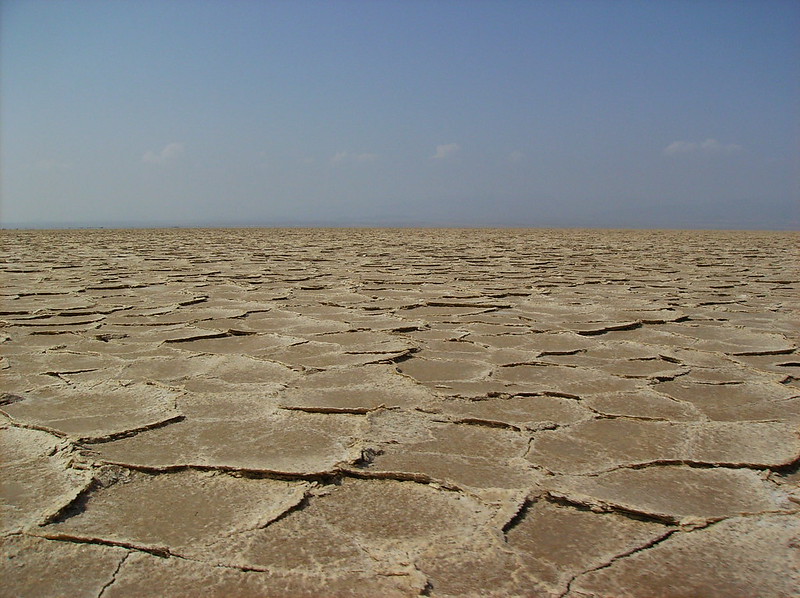
Danakil Depression: No Match For Wildlife
The stunning hot springs have been called "killer lakes" and are no match for wildlife. Birds and insects often fall victim to them, as well as the content of carbon dioxide in the air. It's not unusual to see animals that have perished close to the springs.
Therefore, they also pose a hazard to humans.
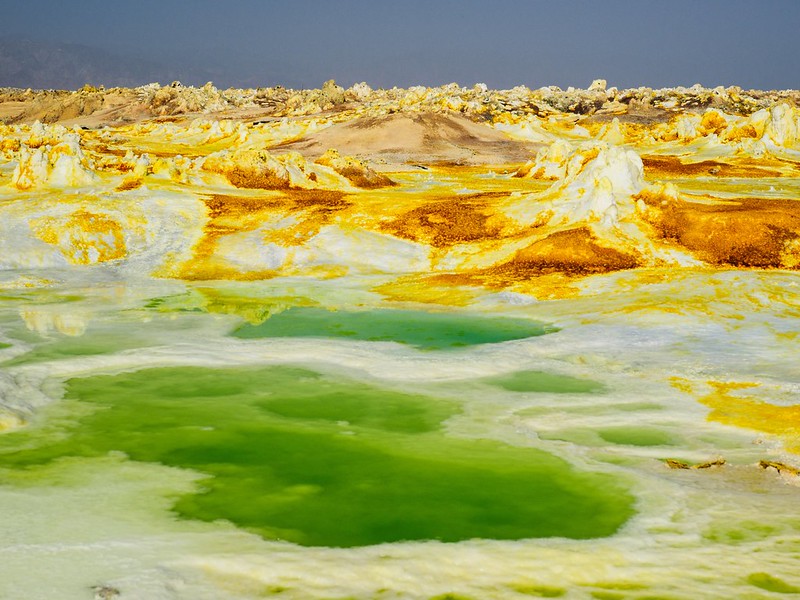
Danakil Depression: No Swimming Here
The springs in the Danakil Depression have a very low pH of 0.2—and should not be touched. Just think: battery acid has a pH of 1.0.
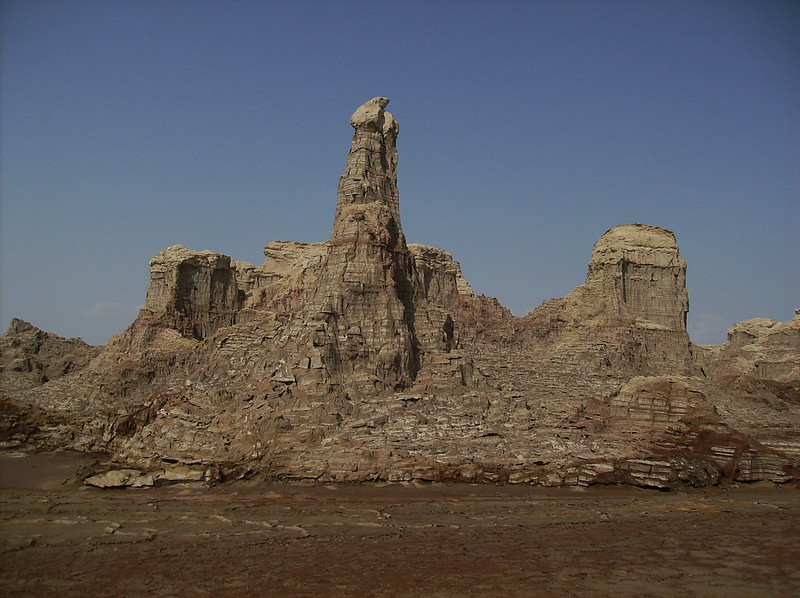
Danakil Depression: Don't Go Alone
As an inexperienced tourist, having a guide is essential. The terrain can be perilous as the salt crust makes for a rocky adventure. It's also important to note that armed guards will likely accompany you during some parts of your journey.
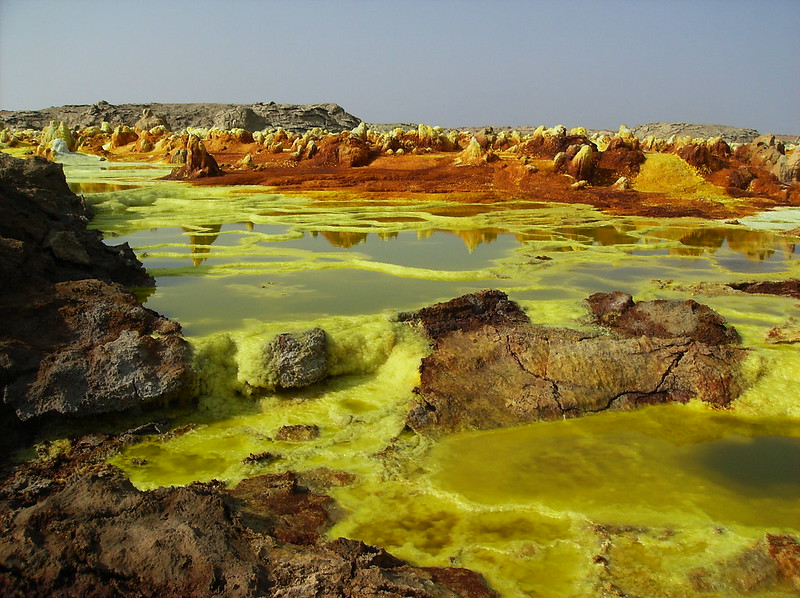
Danakil Depression: Plan Ahead
If you do decide to make the trip to the Danakil Depression, the best time to visit would be from November to March as the temperatures are the most comfortable you're going to get.

Aletsch Glacier
Location: Switzerland
As the most formidable glacier in the Alps, Aletsch Glacier is an undeniable real-life masterpiece to behold. But though the glacier may seem serene and peaceful, there are hidden dangers everywhere.

Aletsch Glacier: Hidden Chasms
The glacier mainly attracts climbers and hikers in search of their next great adventure. But a good time can quickly turn tragic if there's a concealed crevasse or chasm that isn't spotted in time.

Aletsch Glacier: Shifting Ice
The glacier's shifting ice means uncertainty is guaranteed. Even the most skilled professionals can easily make the wrong move—and fall down a crevasse. This can lead to a severe injury, or even death.
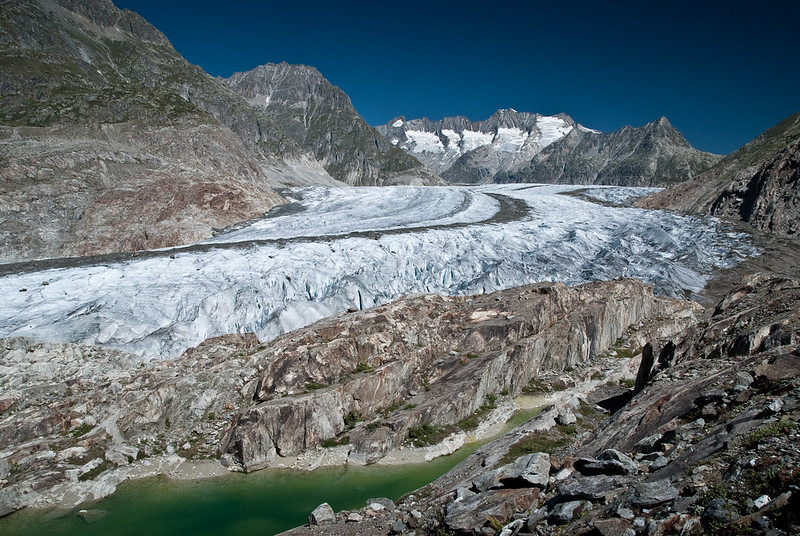
Aletsch Glacier: Proper Preparation
Those who explore Aletsch Glacier have to be prepared in every way. They must have the right training and equipment. There's no going in blind. Hikers should always have an educated guide.
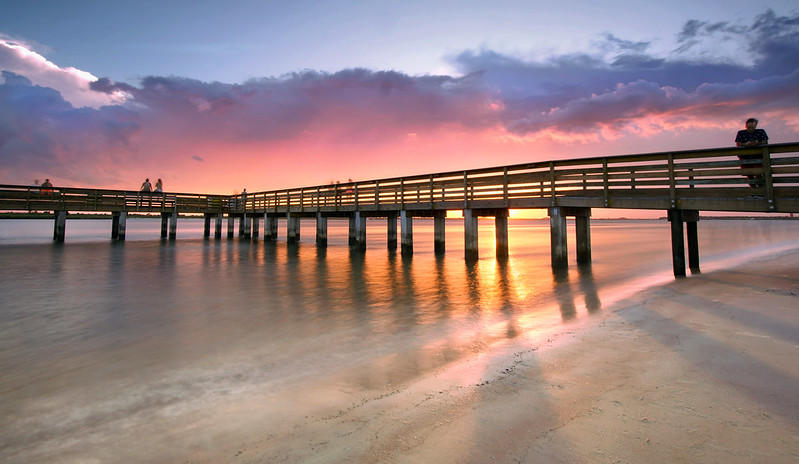
New Smyrna Beach
Locaton: Florida
A beautiful beach in Florida? Sounds like the ultimate getaway, right? Well, think again. If you're the type to always envision the worst case scenario, swimming at New Smyrna Beach might not be for you.

New Smyrna Beach: Shark-Bite Capital
With the unfortunate reputation of being the "shark bite capital of the world," New Smyrna Beach has a dark history.
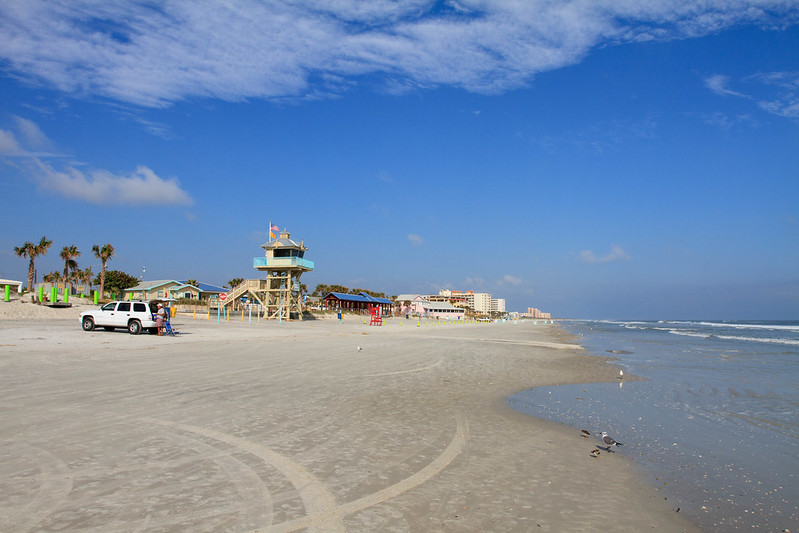
New Smyrna Beach: Hundreds Of Incidents
Overall, there has been a 250 shark attacks reported—and tragically, the years 2007 and 2008 were the worst in regard to the frequency of shark bites. Over the last three decades, sharks have been responsible for 40 fatalities.
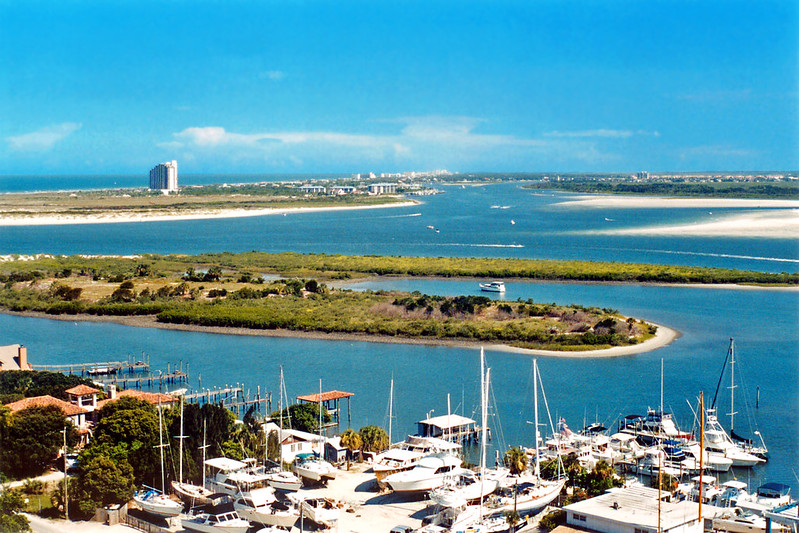
New Smyrna Beach: Take A Risk?
On the surface, however, New Smyrna Beach is undoubtedly enticing. There's a seaside boardwalk, as well as excellent boutique shopping and delightful restaurants... But is swimming in the water worth the risk?
I say, " No way!" But clearly, many tourists aren't dissuaded about taking a dip in shark-infested waters.
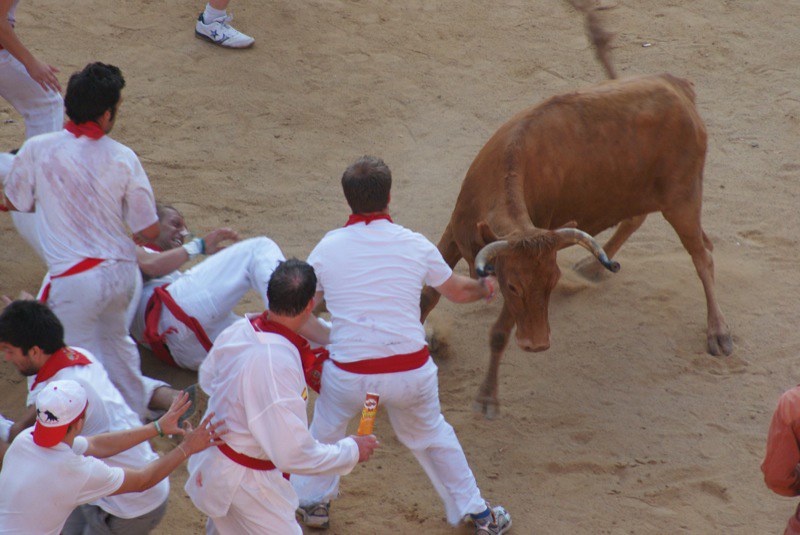
The Festival Of San Fermín
Location: Spain
In the city of Pamplona, Spain, the festival of San Fermín goes on for an entire week. Though there are many traditional events to take part in, the main attraction is undoubtedly the treacherous running of the bulls .
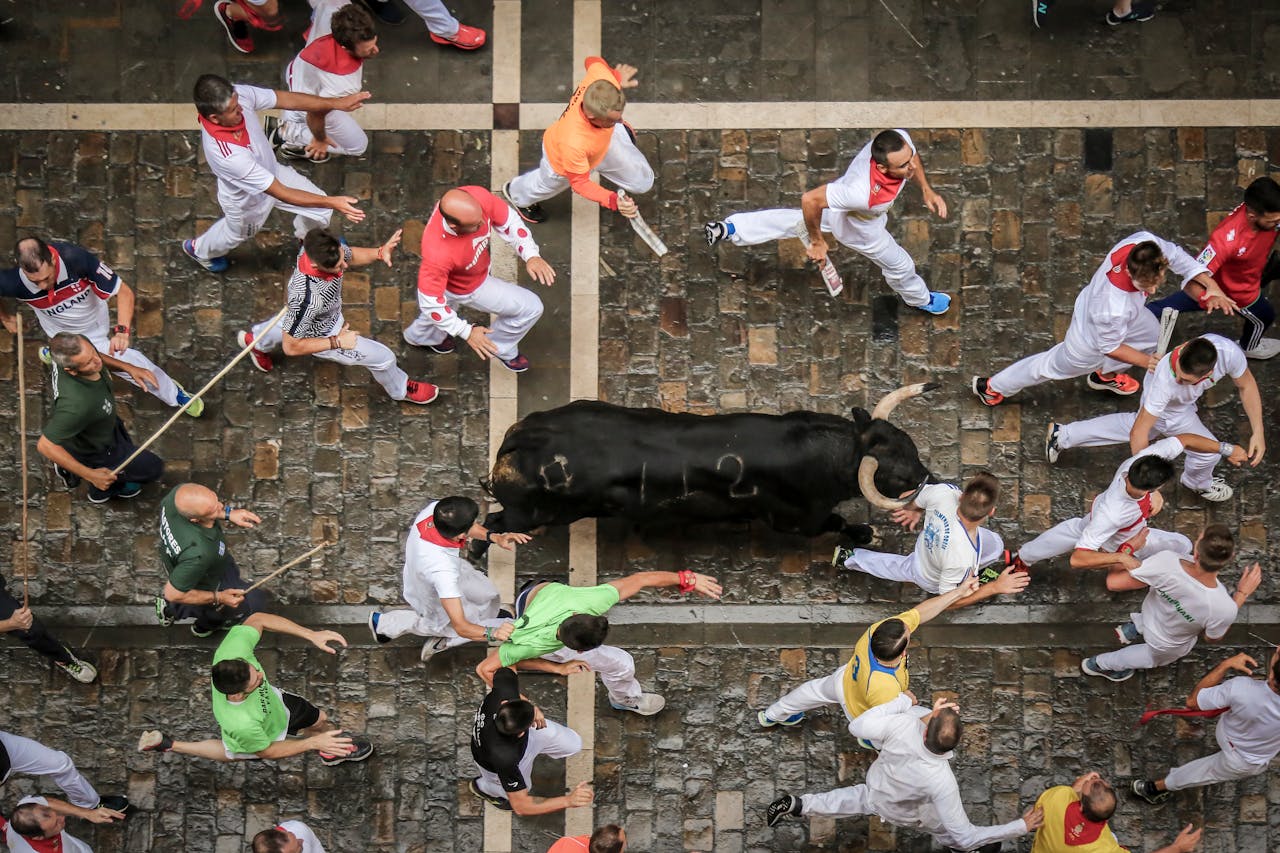
The Festival Of San Fermín: Broadcast To Everyone
The running of the bulls is so popular that it even gets broadcast , but perhaps this adoration is rooted in the adrenaline rush that comes from seeing people put themselves in such obvious danger.
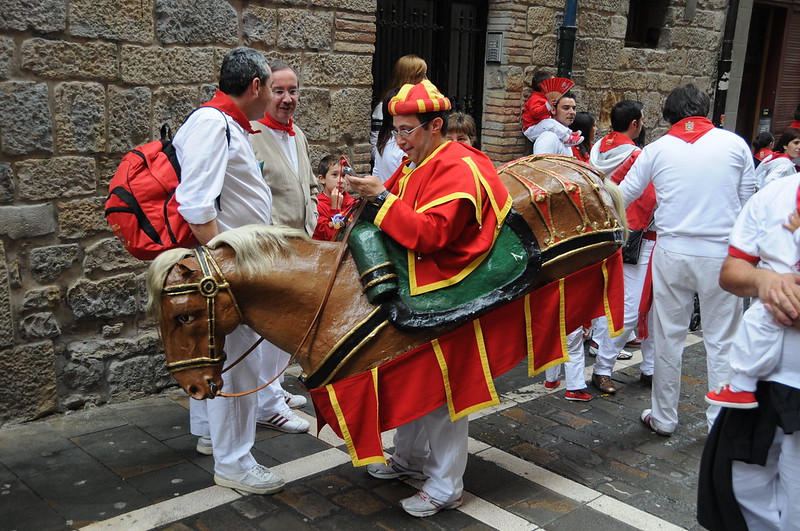
The Festival Of San Fermín: Thousands Of Participants
The run is 875 meters. Six bulls are let loose. For every running of the bulls, there are around 2,000 eager participants —and they're all willing to pay a very high price if things go south.

The Festival Of San Fermín: Injuries Are Guaranteed
Injuries during the running of the bulls is guaranteed. Overall, there are usually 50 to 100 runners who end up injured. There's also a smaller risk of something called goring, which is when the bull's horns pierce the flesh.

The Festival Of San Fermín: Risk Of Being Gored
The horns of the bull can cause serious damage, especially if they impale a runner. For instance, in 2010, nine unfortunate runners were gored by the bulls.

The Festival Of San Fermín: Don't Trip
If people fall during the event, there's a chance others will fall, causing a deadly pile up of runners. This can easily be fatal as victims find themselves crushed and unable to breathe.

The Festival Of San Fermín: Putting Your Life On The Line
Things will take an even darker turn if a bull runs into a pile of people who have fallen down. This particular nightmare has reportedly happened 10 times over the course of history. But overall, there have been 15 known fatalities.
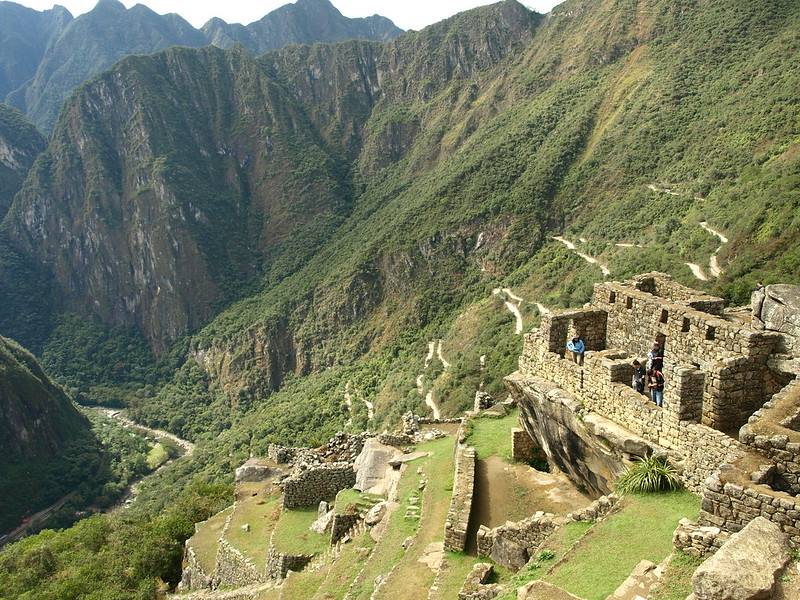
Machu Picchu
Location: Peru
Machu Picchu is an Inca citdael dating back to the 15th century. It is a glorious tourist attraction, but for those who haven't done their research, they may be in for a sickening surprise... literally.
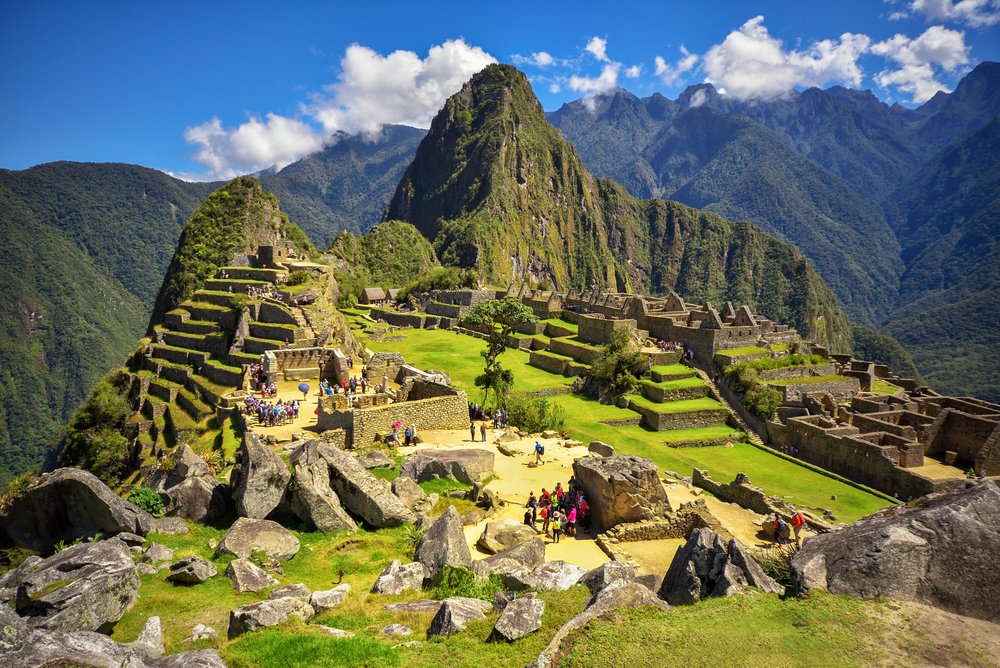
Machu Picchu: It's Hard To Breathe
The air is very thin at Machu Picchu because of the altitude: 7,972 feet. Those who aren't used to this elevation might suffer altitude sickness. Nausea and headaches aren't unusual, but in some serious situations, it can even be fatal.
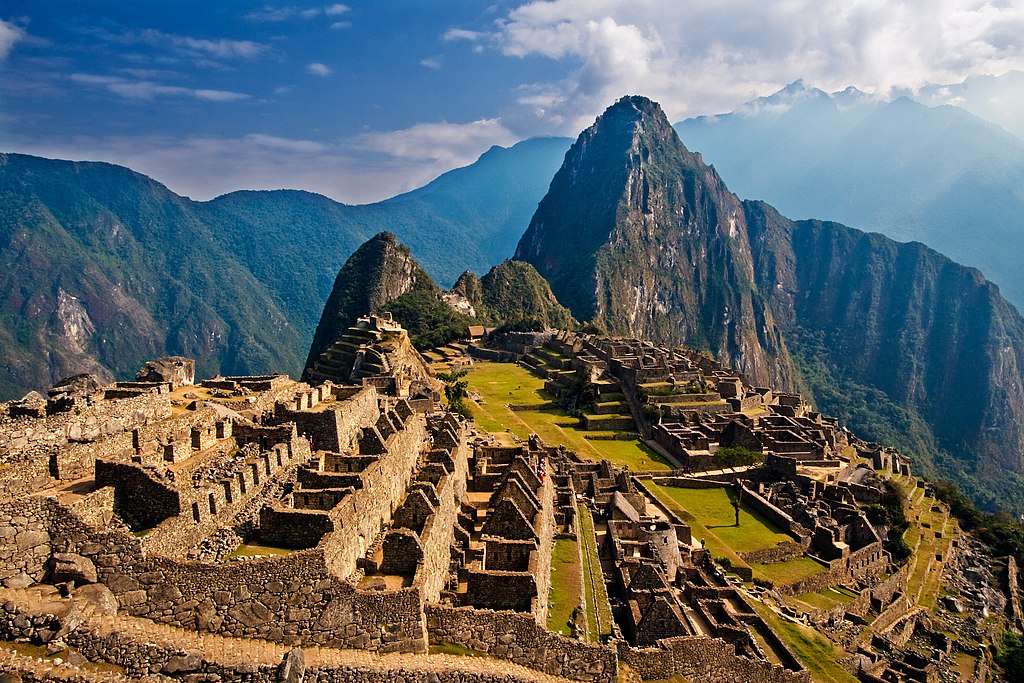
Machu Picchu: Slippery Stones
Along with altitude sickness, there are some physical dangers . Machu Piccchu is quite steep. Tourists should take extra care when navigating the stones, especially in inclement weather. You have to wear non-slip shoes and always stay on the appropriate path—no wandering off in search of your own adventure. At Machu Picchu, you have to play by the rules.

Machu Picchu: Natural Disasters
Any fatalities at Machu Picchu have been caused by floods, hiking accidents, and—as already mentioned—altitude sickness. Other risks include potential earthquakes and landslides.
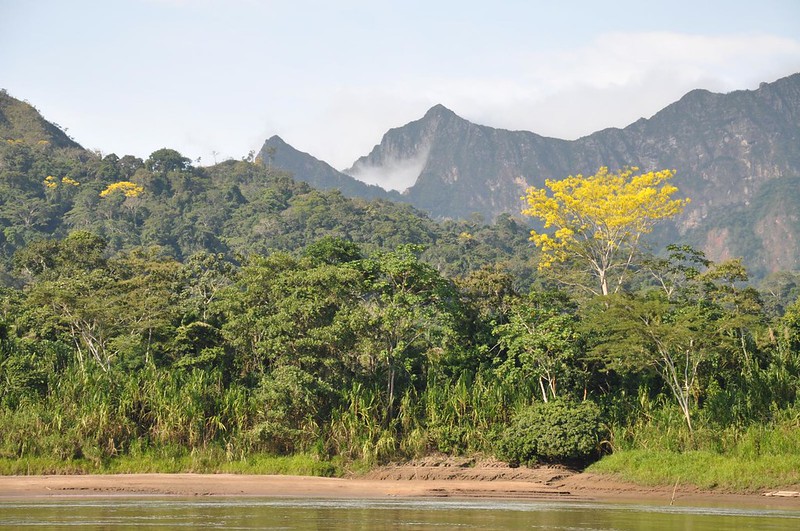
Madidi National Park
Tourists who long to experience the Amazon rainforest may choose to visit the Madidi National Park in Bolivia. With no internet or working phones, it is an experience unlike any other. Disconnecting from the rest of the world might give one a sense of freedom, while it might make others feel anxious and untethered.
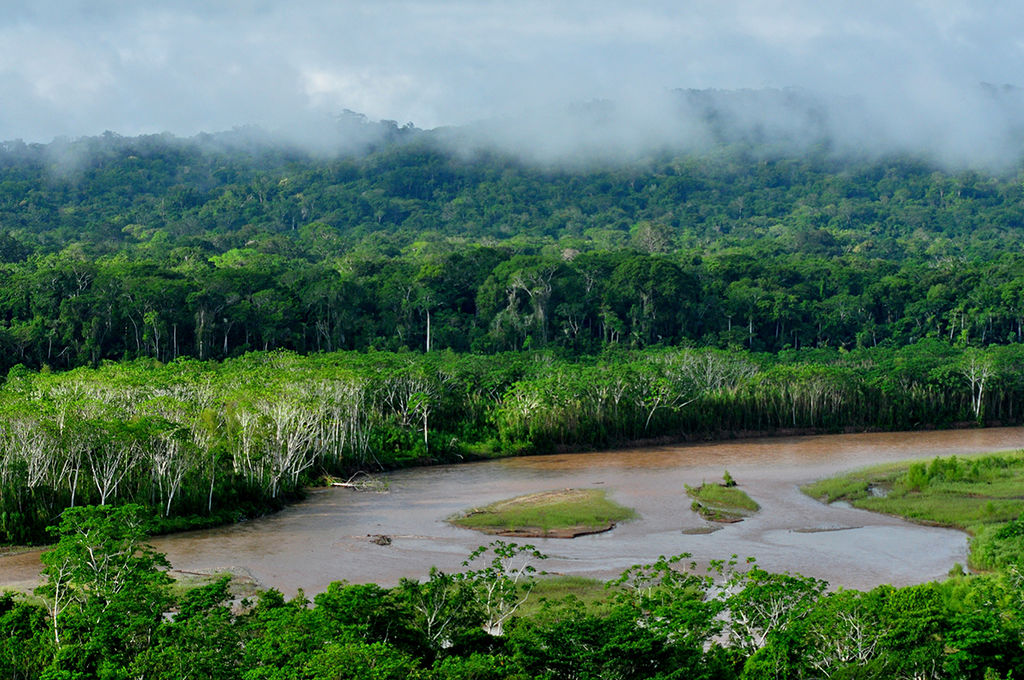
Madidi National Park: Watch Out For The Wildlife
The Madidi National Park is a gorgeous lush paradise, but jungles are known for their hidden perils. The dangerous wildlife is the ultimate risk.
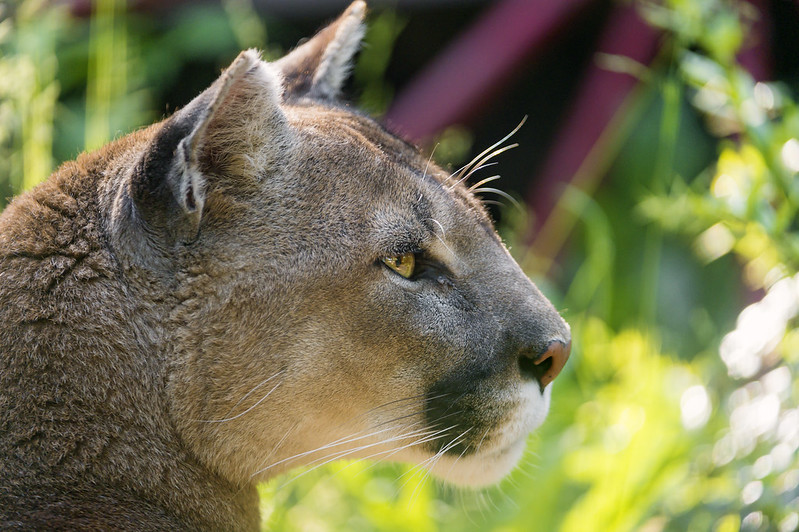
Madidi National Park: Poisonous Enemies
Poisonous spiders, snakes, and frogs call this place their home, as well as larger predators like pumas. Even the fire ants can be a downright nightmare. As hikers work their way through the park they have to be constantly aware of their surroundings. But that's just the tip of the iceberg.
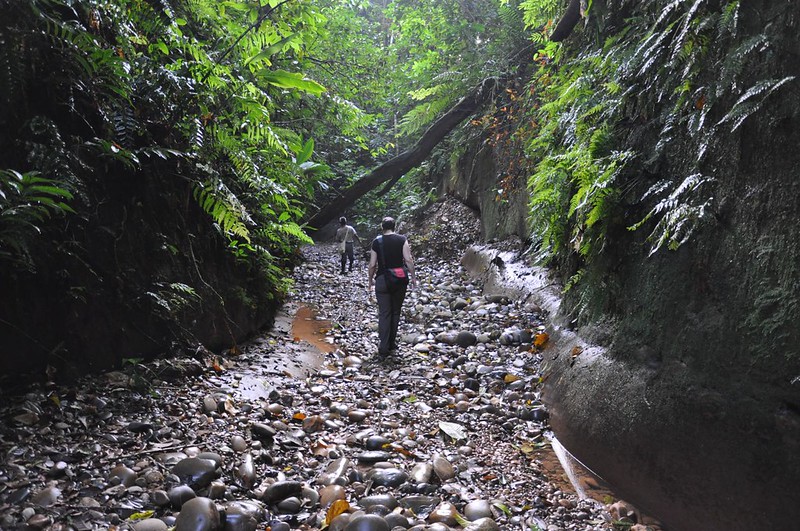
Madidi National Park: Even The Plants Are Dangerous
In addition to the animals, the plants are your enemies as well. That's why having an expert guide is so important, as they will be able to identify the poisonous plants and help hikers avoid them.
More for You
US Navy Submarine Hunters Converge on Florida
401(k) Confusion Abounds. Workers Think They’re Saving, but They Really Aren’t.
Kansas City Chiefs Super Bowl 2024 Ring Ceremony: All the Red Carpet Shoes [PHOTOS]
What Those Colored Circles on Food Packages Actually Mean
‘It’s scary what people are doing now’: Hawaii woman scrubs $1 bill, attempts to pass it off as $100. How to stretch your dollar without risking jail time
Tech trick: How to tell who’s calling when you don’t recognize the phone number
Drivers Told to Avoid Gas Stations in 4 States
The Adorable Garden Decor You Can DIY With Leftover Bricks
Woman finds 50 vintage cars hidden in a crumbling barn in the middle of a forest
‘I’ve Been a Longevity Nutritionist for 30 Years, and These Are the Top 4 Foods I Tell My Clients To Eat Every Day’
Southwest Airlines Boeing 737 Max sustains 'substantial' damage from 'Dutch roll' incident
Kevin O'Leary explained how you can live off $500K and ‘do nothing else to make money' — but is it realistic for your retirement?
China's Chang'e 6 spacecraft finds long-sought particles on far side of the moon
Aliens May Already Live on Earth, Harvard Researchers Say
A new six-wheeled vehicle is straight out of a sci-fi novel
The Linc - Commanders GM calls Howie Roseman a “pain in the ass”
Shrimp's impact on health and who should avoid them
Caitlin Clark Breaks Silence On WNBA Disrespect
How big is billionaire Warren Buffett’s Social Security check? Here's what we know — how do your retirement benefits stack up?
25 Singers Who Excelled in Movies
4 climbers dead on Mount Everest, 1 missing; ice collapse among factors cited

A British climber and his guide, a Kenyan banker, and a Nepalese climber are dead, and one other guide remained missing Friday following multiple incidents this week including an ice collapse on Mount Everest, the world's tallest mountain.
Daniel Paul Paterson, 40, and his guide, Pastenji Sherpa, 23, disappeared when an ice collapse took place Tuesday as the pair the descended the mountain, 8K Expeditions, the company that put the expedition together, posted on Instagram. The duo, who reached the summit before their deaths, was part of a 15-member team on the same climb with the climb company based in Kathmandu, Nepal.
“Eyewitnesses reported the incident took place between Summit Ridge and South Summit and some climbers were swept away in Kangshung Face,” the adventure company wrote . "We remember and honor their enduring spirits and extend our deepest condolences to their grieving families."
Killer whales keep ramming boats: Scientists now may know why, report says.
Kenyan climber's guide remains missing
In a separate incident 40-year-old Kenyan Joshua Cheruiyot Kirui and his 44-year-old guide Nawang Sherpa, vanished Wednesday morning on the 29,032-foot mountain.
"The team have found the Kenyan climber dead between the summit and the Hillary Step, but his guide is still missing," CBS News reported Khim Lal Gautam, a Nepalese government official, told AFP.
Another Nepali climber, 37-year-old Binod Babu Bastakoti, died at 26,902 feet on Wednesday, the outlet reported, citing a statement from Nepal Department of Tourism.
Baltimore ex prosecutor on house arrest: Ex-prosecutor Marilyn Mosby sentenced in scheme using COVID funds to buy Florida condo
Friends, government officials express condolences for dead climbers
Sherpa was dedicated climber with "impressive climbs under his belt" including two on Mt. Everest, as well as the second highest mountain earth, K2, and Amadablam, another mountain in Nepal, the adventure company wrote in its post. "His warm spirit, kindness, and outstanding expertise made him one of the premier guides at 8K Expeditions.'
An experience climber, known for his "robust fitness, uplifting positivity, and strong determination" Paterson had "successfully summited" Island Peak and Amadablam previously and tackled Everest "with intense preparation and determination."
Kenyan foreign ministry secretary, Korir Sing'oei expressed condolences on X for Kirui, who he called his friend.
"Really gutted by this news," Sing'oei wrote on social media . "I have been following his exploits until this unfortunate end. He is a fearless, audacious spirit, and represents the indomitable will of many Kenyans. We shall miss him."
According to an X post by fellow climber James Muhia, Kirui lost radio contact the early morning of May 22 while climbing. His body was discovered at at 48 meters from the summit.
"I have found myself shedding tears this morning after confirmation that my brother @cheruiyot_ak has rested on the mountain," Muhia wrote Thursday "It is a sad day. Our brother is now one with the mountain. It will be a difficult time. Go well my brother."
Prior to Kirui's death, the Kenyan climber also posted updates about the climb on social media.
In a May 17 Instagram post, Kirui wrote , “My plan...A no-oxygen attempt comes with it's special preparations and risks, physically my body is ready.”
Natalie Neysa Alund is a senior reporter for USA TODAY. Reach her at [email protected] and follow her on X @nataliealund.

COMMENTS
Reach the highest point on earth or choose to live out your dream by standing at the foot of Mt. Everest (8,848 m). ... Nepal Tourism Board is a national tourism organization of Nepal established in 1998 by an Act of Parliament in the form of partnership between the Government of Nepal and private sector tourism industry to develop and market ...
Mountains. Everest. Sustainable tourism. Register now. Everest climbing season is underway. For a few weeks each spring, the weather improves just enough to give climbers a chance of scaling the ...
Published: June 7, 2019 8:53am EDT. The last days of Mt Everest's spring window for 2019 witnessed the deaths of 11 climbers. Images of hundreds of mountaineers queuing to reach the summit and ...
Unforgettable Experiences in Everest. Trek to the Roof of the World: Embark on the iconic Everest Base Camp Trek, offering stunning vistas and unparalleled access to the world's highest mountain.For breathtaking lake views, consider the Gokyo Lakes Trek or traverse challenging high passes on the Three Passes Trek.; Bike Through Rugged Terrain: Thrill-seekers will find an exhilarating ...
"With increased tourism, microplastics throughout Mt. Everest is expected to rise, creating issues for the environment and people of the Khumbu region," said Imogen Napper, National Geographic Explorer and first author of "Reaching New Heights in Plastic Pollution — Preliminary Findings of Microplastics on Mount Everest."
Everest Base Camp Luxury Lodge Trek. 5.0 (29 traveller reviews) "The Everest Hotel in Kathmandu offering urban comfort, while the Yeti Mountain Home in Phakding and Namche provided cozy mountain luxury." Samuel, traveled in October 2023. Destinations.
How Mount Everest became a tourist destination. By Jacob Bogage. May 31, 2019 at 6:00 a.m. EDT. Mountain climbers line a path on Mount Everest just below camp four, in Nepal. (Rizza Alee/AP)
Rising to 29,032ft on the border between Nepal and Tibet, Mount Everest — known as Sagarmatha by the Sherpa people of Nepal — has held an almost mystical allure for climbers and hikers since ...
By 1996, one of the world's most remote locales was becoming a tourist attraction. Krakauer, an avid climber, arrived to tell that story. He summited the mountain on May 10, then returned to a ...
Find out all you need to know about climbing Mount Everest, from its geology to the cost of climbing the notorious peak. ... In 2021, the Nepal Ministry of Tourism issued a record 408 Everest ...
The tolls, however, can be vast. Though tourism to Everest brings in $300 million to Nepal every year, there is a human toll. More than 300 people have died on the mountain since 1953. This year's climbing season saw 11 deaths, marking the deadliest season since 2015 when an avalanche killed 19 people at a base camp following a 7.8 earthquake.
No. 1: Mount Everest. Type: Mountains, Nature & Parks. Recommended visiting: 1 day. Mount Everest is the highest mountain in the world with an elevation of 8844.43 meters. Thousands of people make their expedition from far away to explore the splendid looks of "The Third Pole". Mount Everest is located on the border of China and Nepal.
Everest Base Camp Trek - 14 Days. Duration: 14 Days Trip Grade: Moderate Trip Type: High-Altitude Adventurous Hike. based on 231 reviews. Price from US $1450 US $1550. In Details. Everest in 5 Days. Everest Region.
Mount Everest is the world's tallest mountain at 8,848.86 m (29,032 ft). It straddles the border of China / Tibet and Nepal and can be visited from either side: . Sunset view of Everest. Everest Base Camp Trek through Khumbu (Sagarmatha National Park), the more commonly visited region on the Nepalese (southern) side of the mountain; Qomolangma, the less visited nature reserve on the Tibetan ...
NEW DELHI — Ed Dohring, a doctor from Arizona, had dreamed his whole life of reaching the top of Mount Everest. But when he summited a few days ago, he was shocked by what he saw. Climbers were ...
In fact, locals have decried recent calls for Mount Everest to be restricted due to environmental damage because so many rely on tourism to provide a majority of their annual income. For example, sherpas, or mountain guides, in particular can make upwards of $2,000 per expedition, far exceeding the average Nepalese annual income.
May 29, 2019. • 12 min read. Kathmandu, Nepal — On Monday, Christopher Kulish, a 62-year-old attorney from Boulder, Colorado, died at Camp 4, located on the South Col at 26,000 feet, after ...
Mount Everest is a peak in the Himalaya mountain range. It is located between Nepal and Tibet, an autonomous region of China. At 8,849 meters (29,032 feet), it is considered the tallest point on Earth. In the nineteenth century, the . mountain was named after George Everest, a former Surveyor General of India. The Tibetan name is Chomolungma ...
The best time to visit Mount Everest is in the spring and autumn for several reasons. Mount Everest's changeable, extreme climate, in particular, is a determining factor. The summit temperature never rises above freezing, or 0° C (32° F). Its summit temperatures in January average -36° C (-32 ° F) and can drop to -60° C (-76° F), and ...
Mount Everest Tourism. Type of destination: Mountain/Peak. Ideal visit duration: 2 days for base camp visit, 2 months for summit expedition. Mount Everest, part of the Himalaya range in Asia, is the highest peak on Earth, with its summit reaching an elevation of 8,848.86 meters above sea level. It is located in the Sagarmatha National Park in ...
On April 18, 2014, an avalanche on Mount Everest tumbled down upon the nearby Everest Base Camp—at the altitude of 1,900 feet above sea level—killing 16 Nepalese guides. The victims of the deadliest accident on Mt. Everest ever recorded were mainly Sherpa mountain guides. After Tenzing Norgay helped Sir Edmund Hillary reach the summit of ...
It was "inconceivable" in the 1980s, he said, to think of what Mt Everest tourism had now become; money driven (a trek to the top can cost between $30,000 and $100,000) and ruthless (some ...
Climbing Mt. Everest has always been a life goal for thousands of motivated mountaineers and adventurers across the world. Everest tourism has been around since the mountain was first successfully ...
As one of the poorest nations, Nepal relies heavily on tourism, and with few days of business in a year, Mount Everest gets competitive with standards breached. This is also how an admirable feat ...
The majority of people who try to climb the 8,849-meter (29,032-foot) Mount Everest do so via Nepal, paying $11,000 apiece just for the climbing permit.
Mount Everest tourism presents a complex array of challenges and consequences, from the deadly risks faced by climbers and the environmental impact of littering to the exploitation of the local Sherpa community. As the world's fascination with the highest peak continues to grow, it is crucial for all stakeholders, including the government, tour operators, climbers, and trekkers, to address ...
Everest tourism is booming, but some Sherpas are looking for jobs elsewhere In May 2023, the government of Nepal issued a record-breaking 478 climbing permits — which was also the most deadly ...
Standing at 29,032 feet above sea level, Mount Everest is not a tourist adventure to be taken lightly. At a certain height, climbers will enter what is known as the "Death Zone"—and sadly, many ...
Tourist trap or a mountain's call? If Mount Everest's glory is to be kept intact, an international effort to control the tourist hordes and manage waste is the need of the hour 2024-06-14 - BY JYOTSNA MOHAN | Special to Gulf News Jyotsna Mohan is the author of the investigative book Stoned, Shamed, Depressed.
0:04. 0:54. A British climber and his guide, a Kenyan banker, and a Nepalese climber are dead, and one other guide remained missing Friday following multiple incidents this week including an ice ...